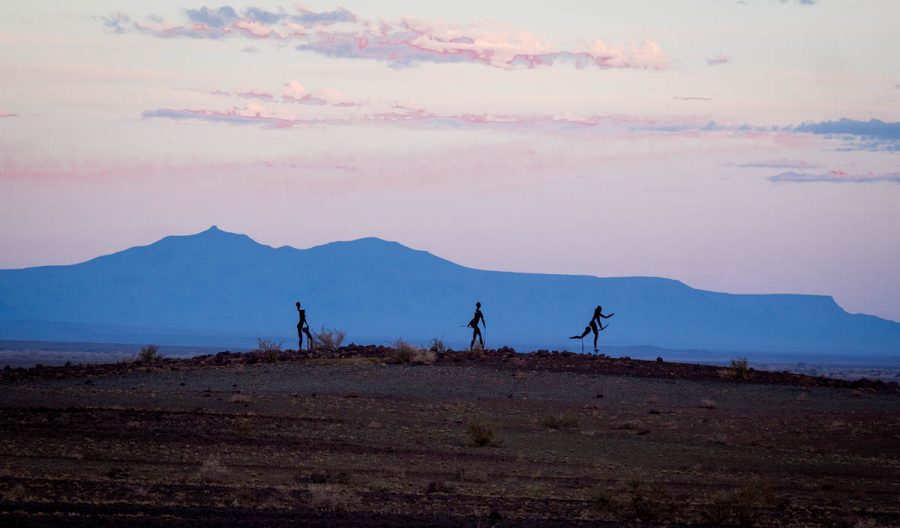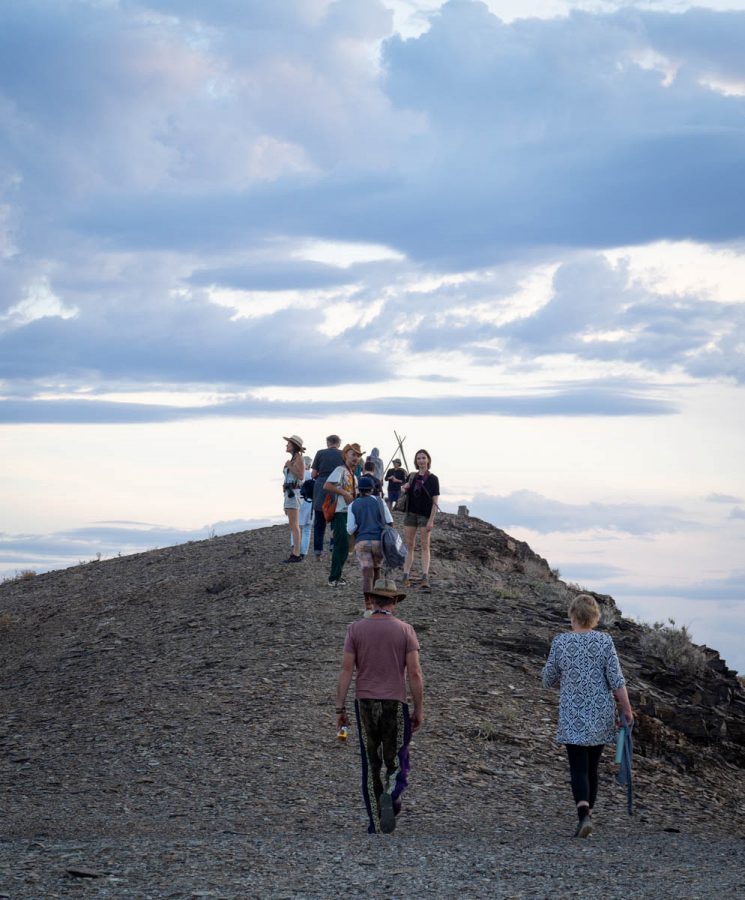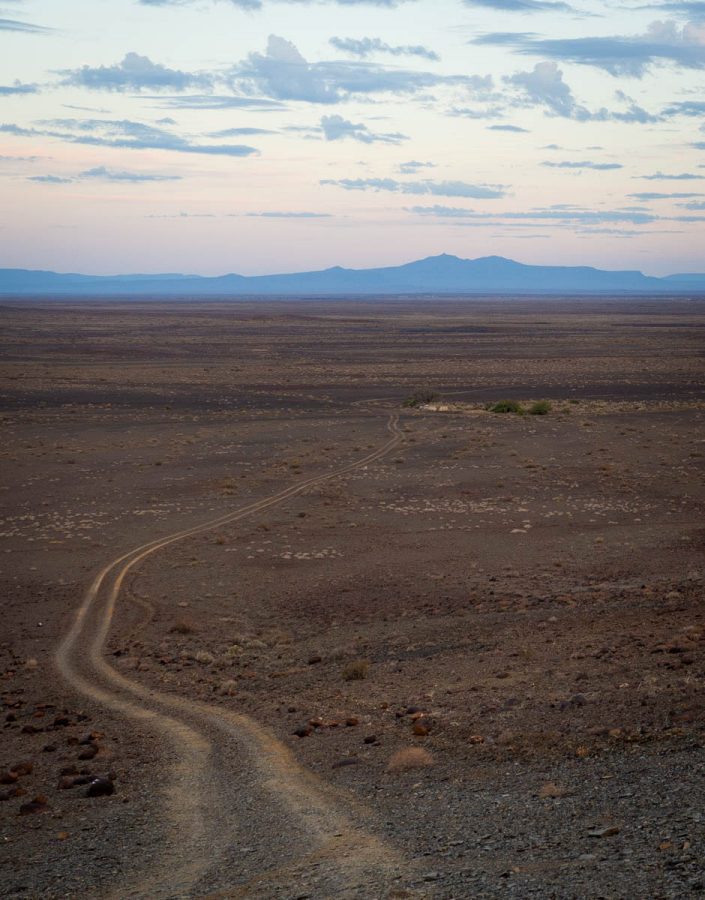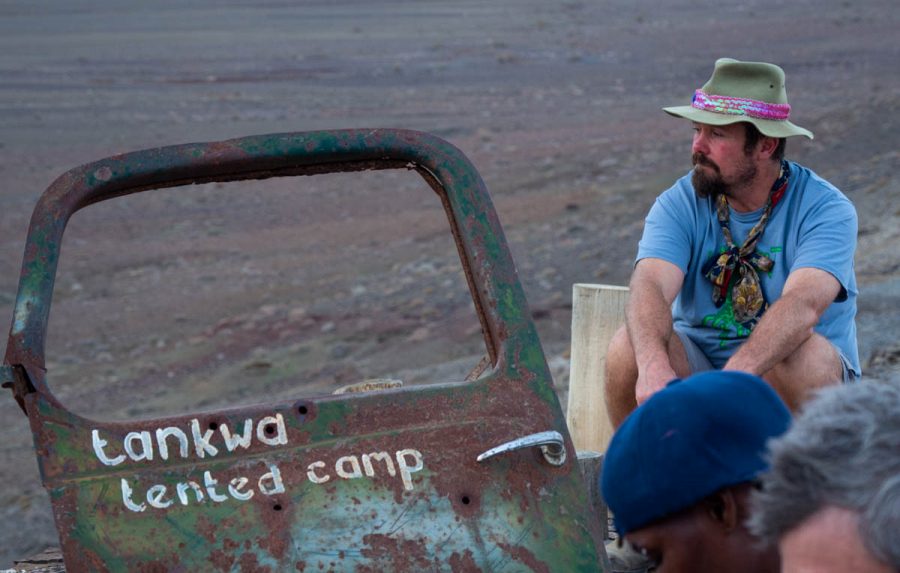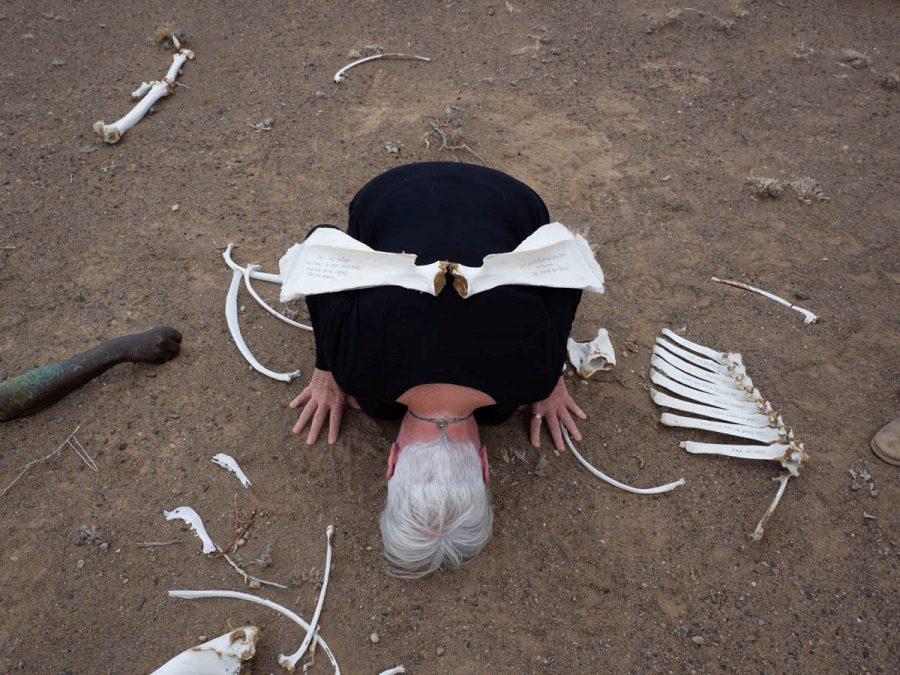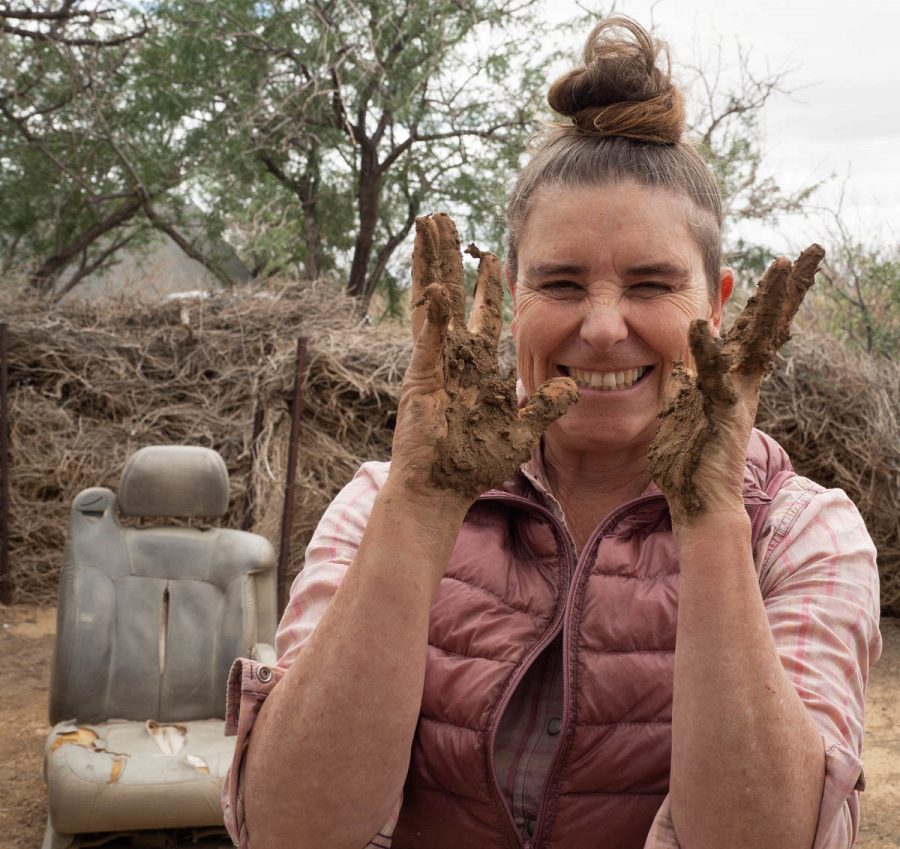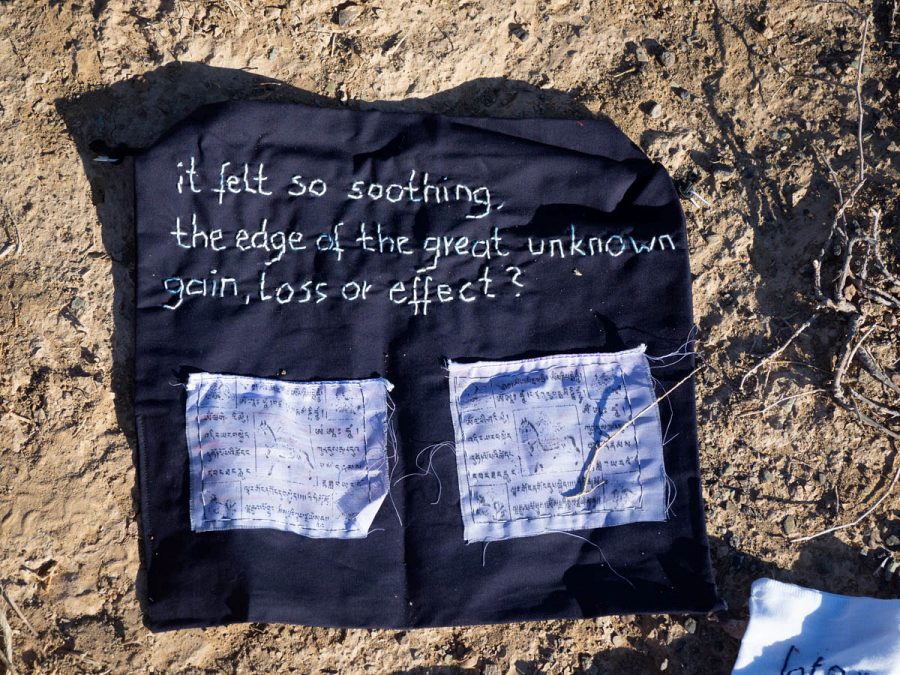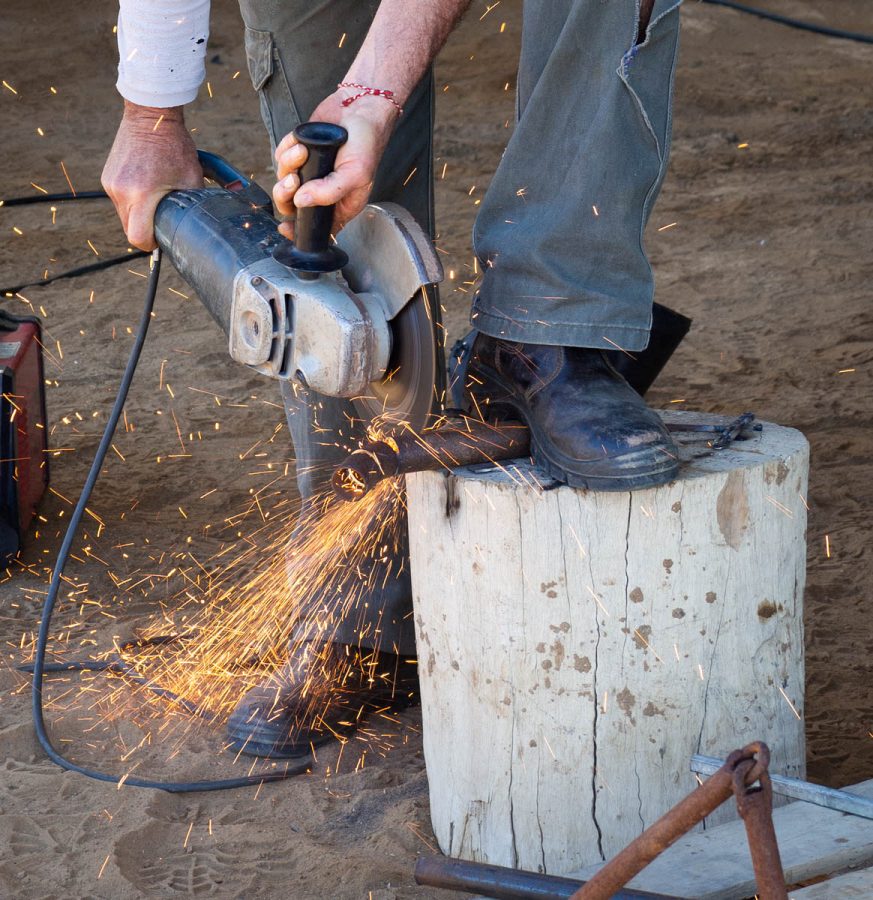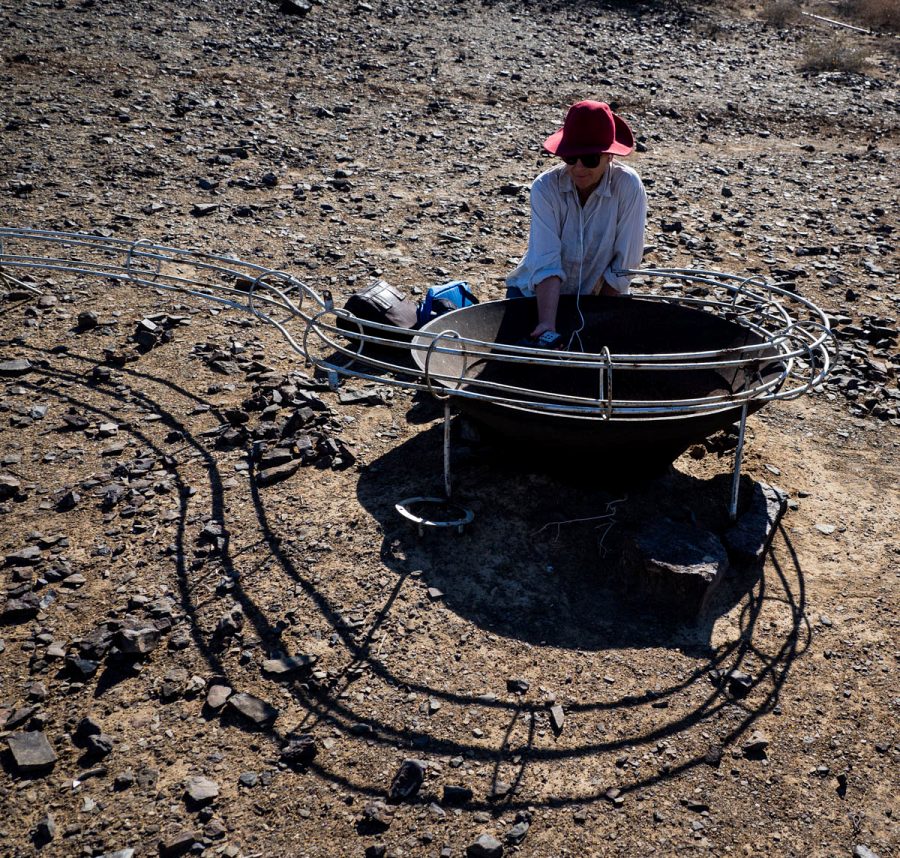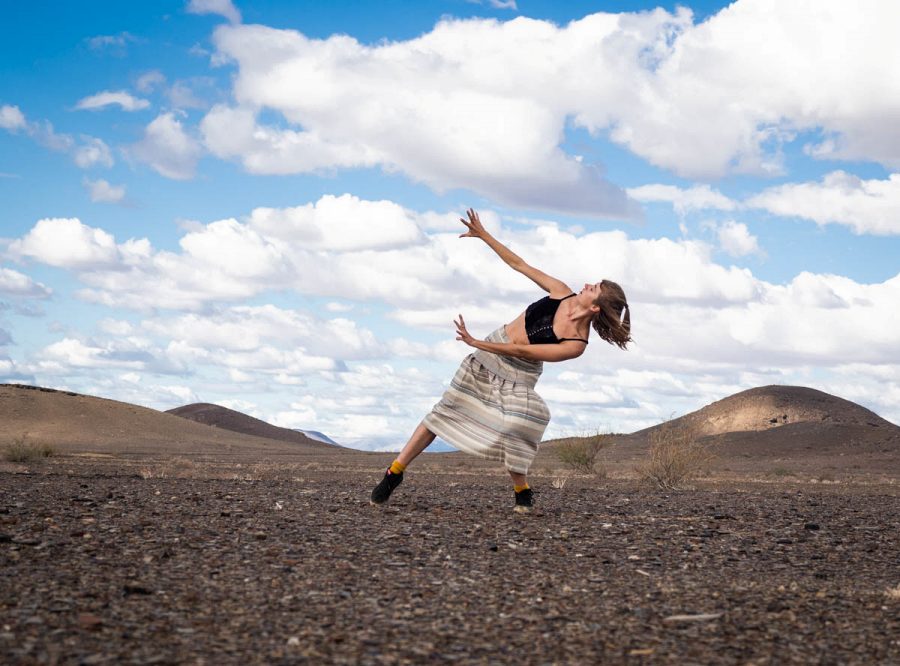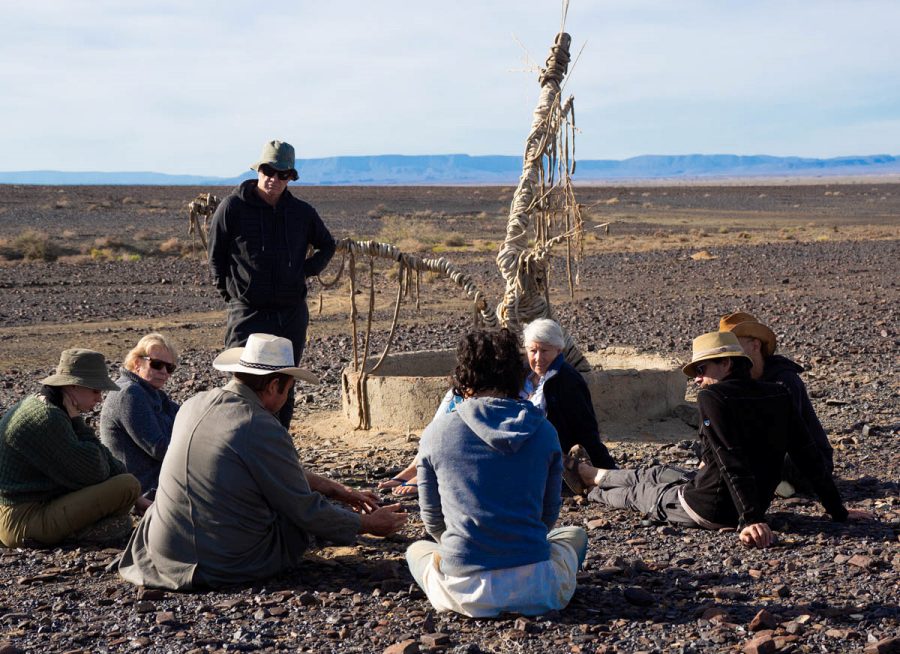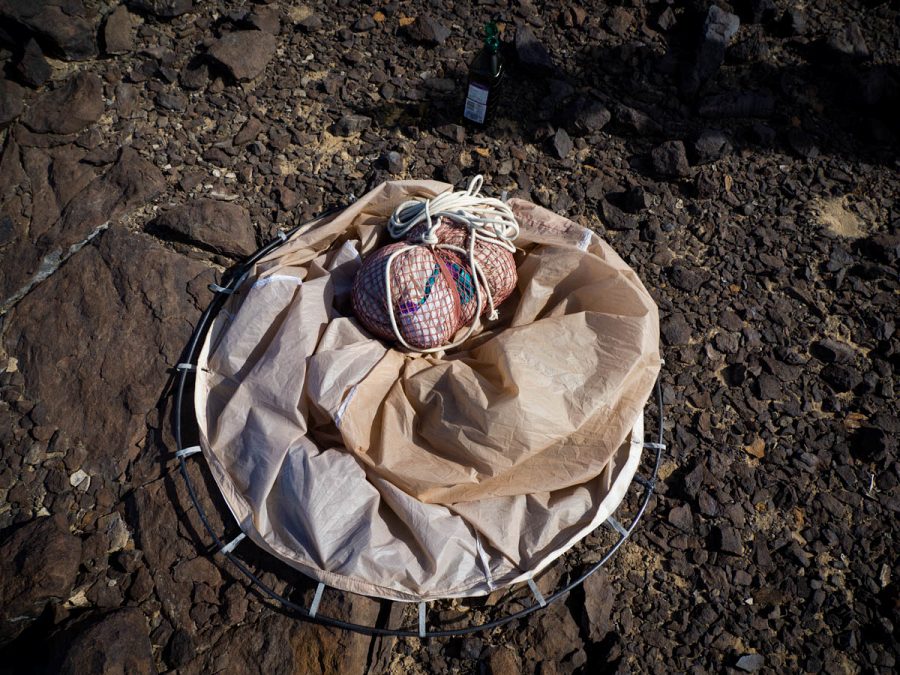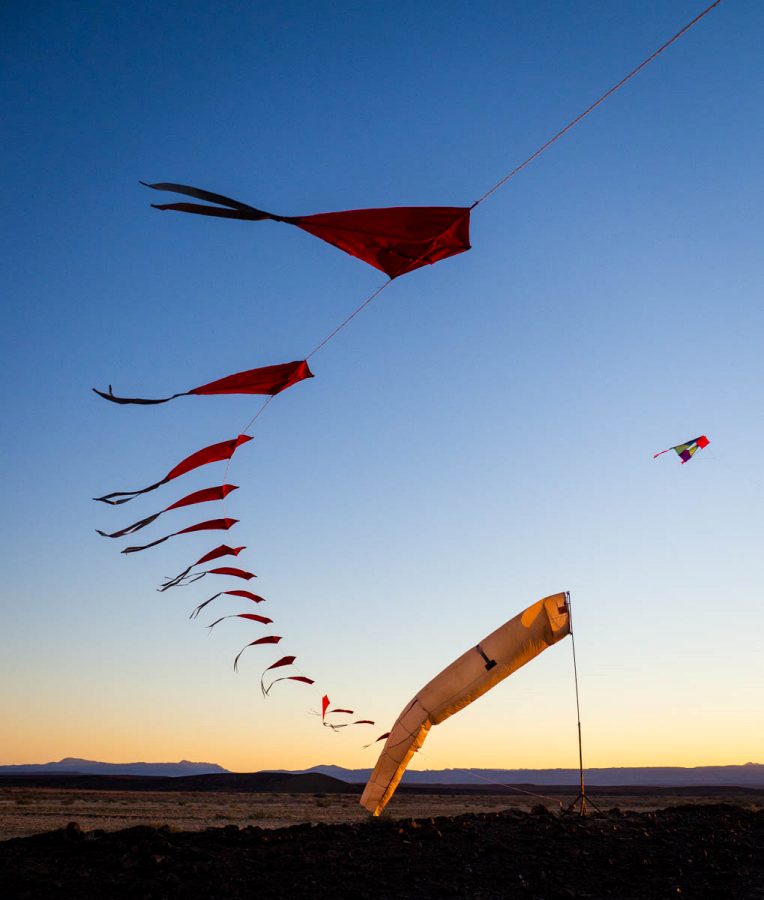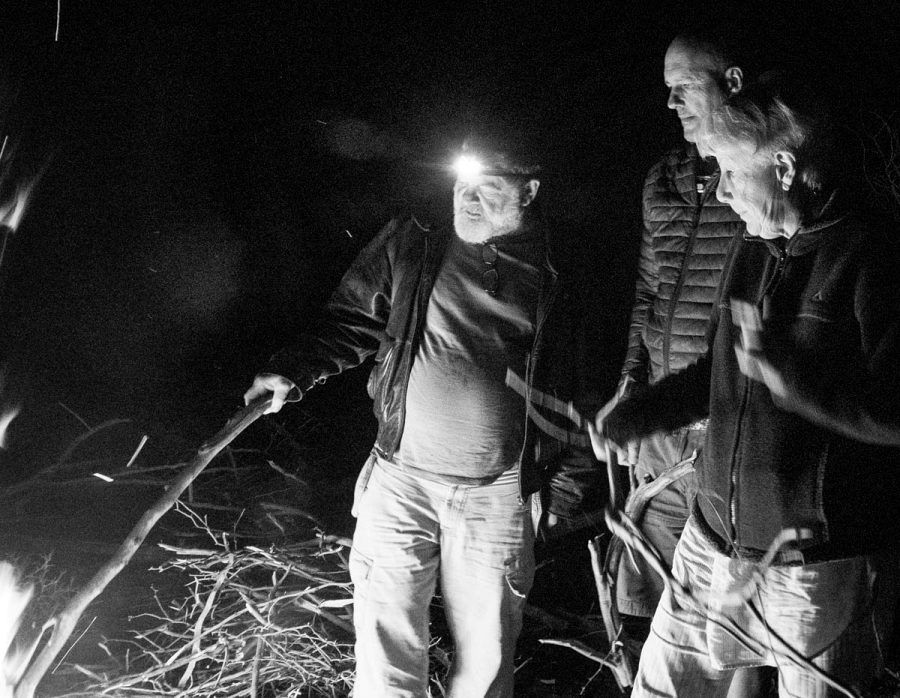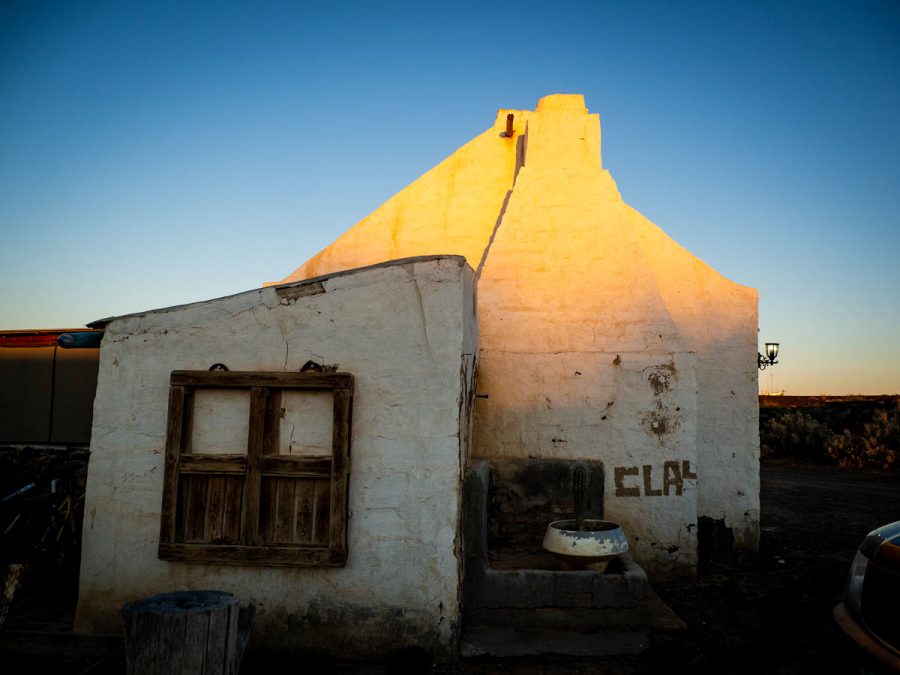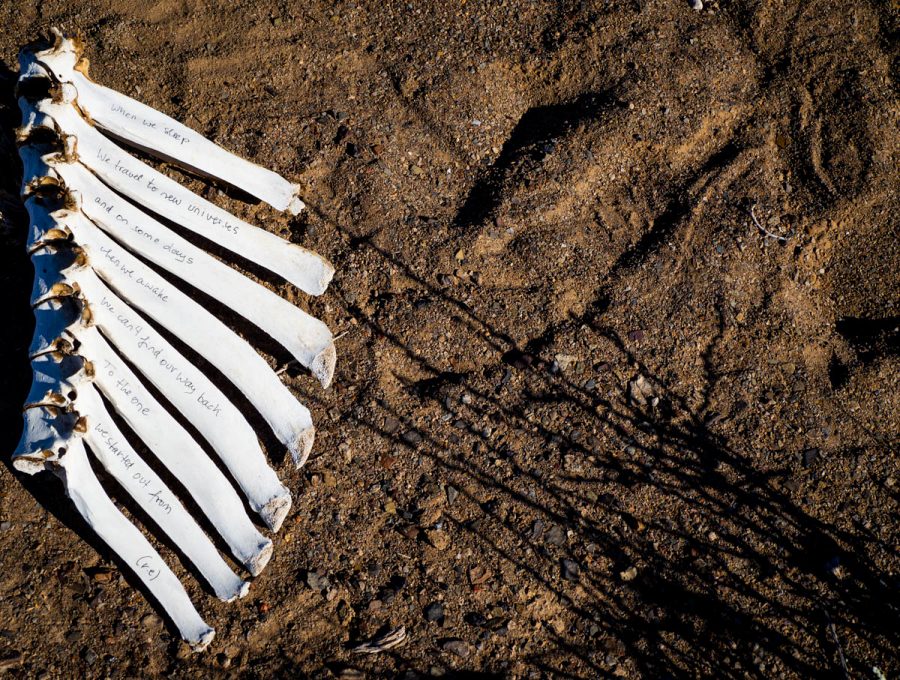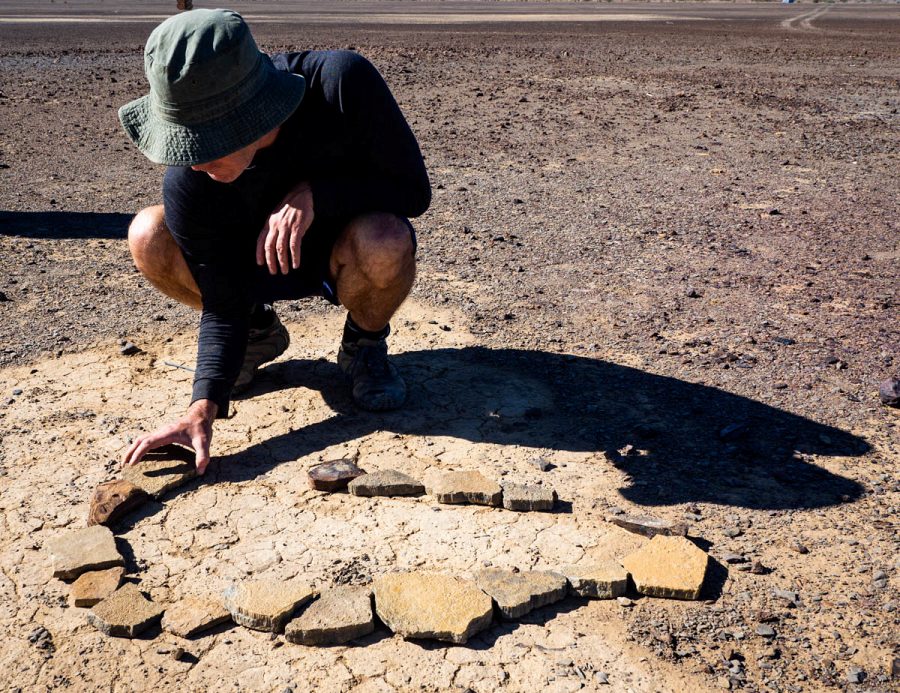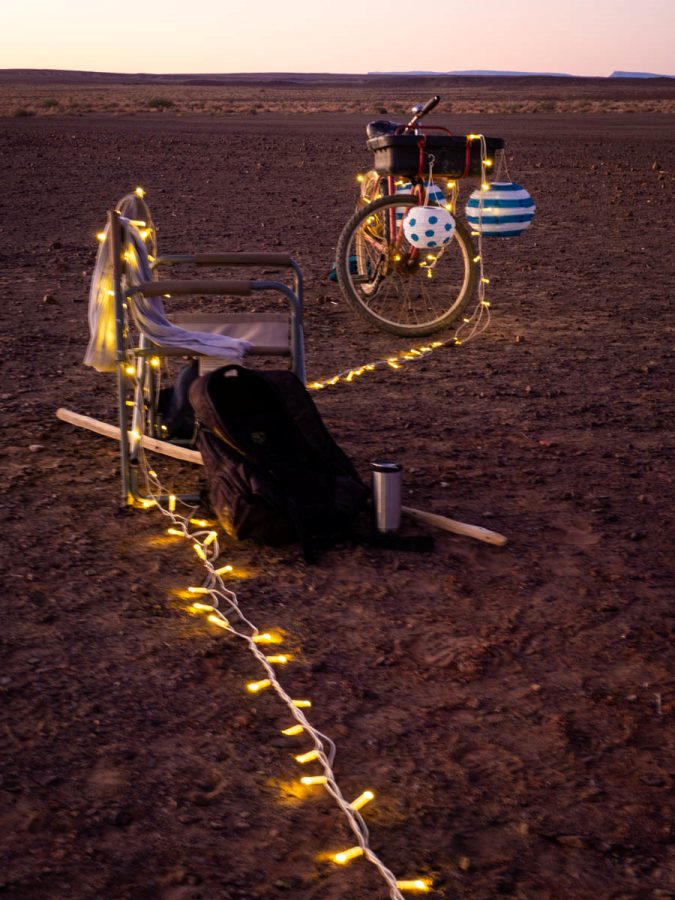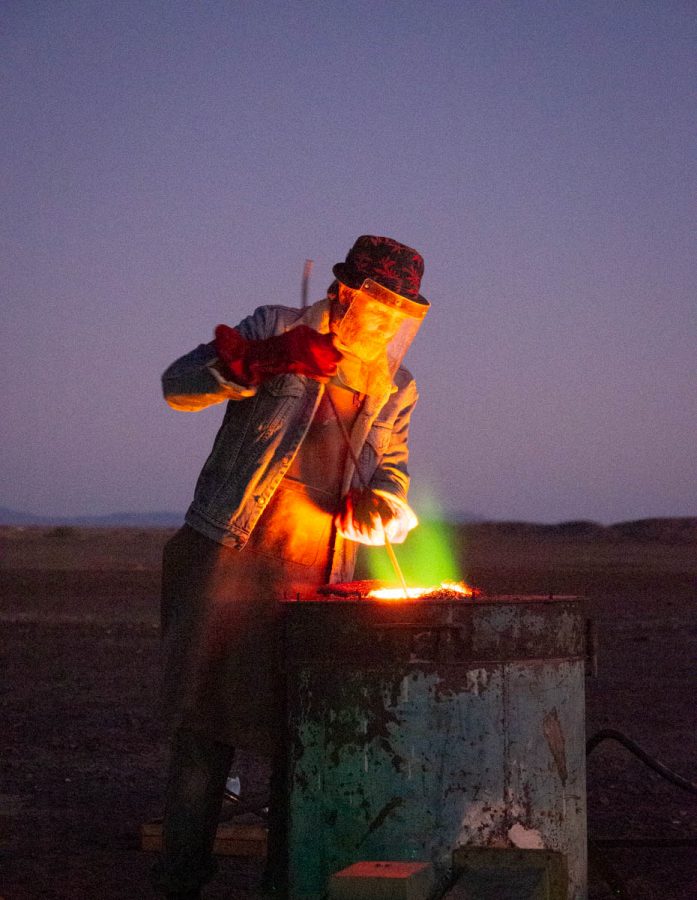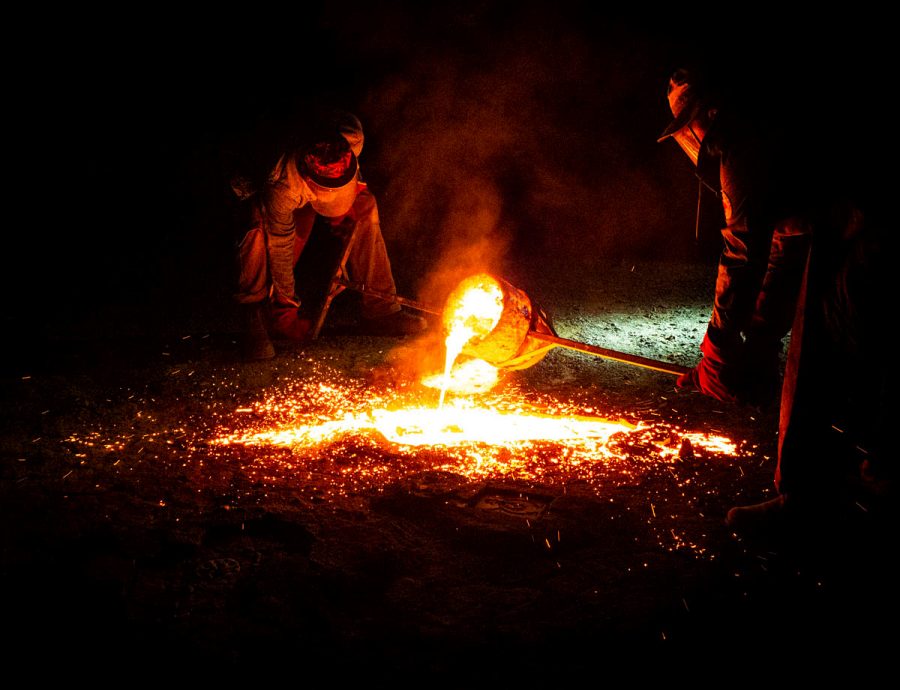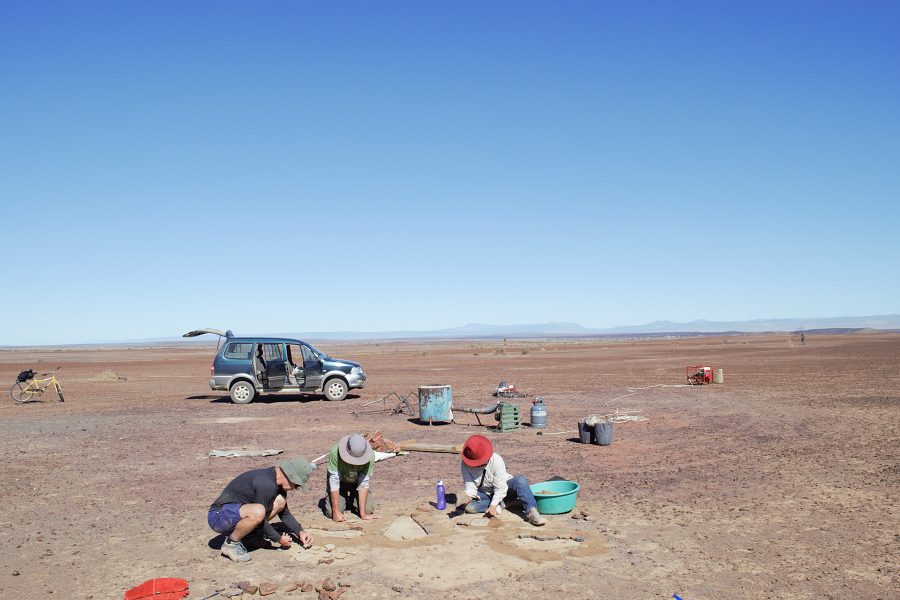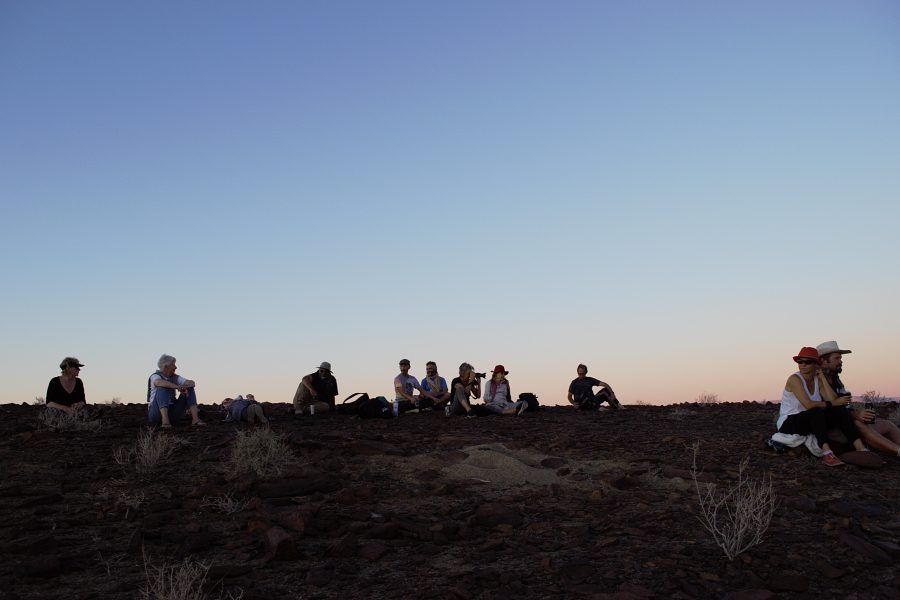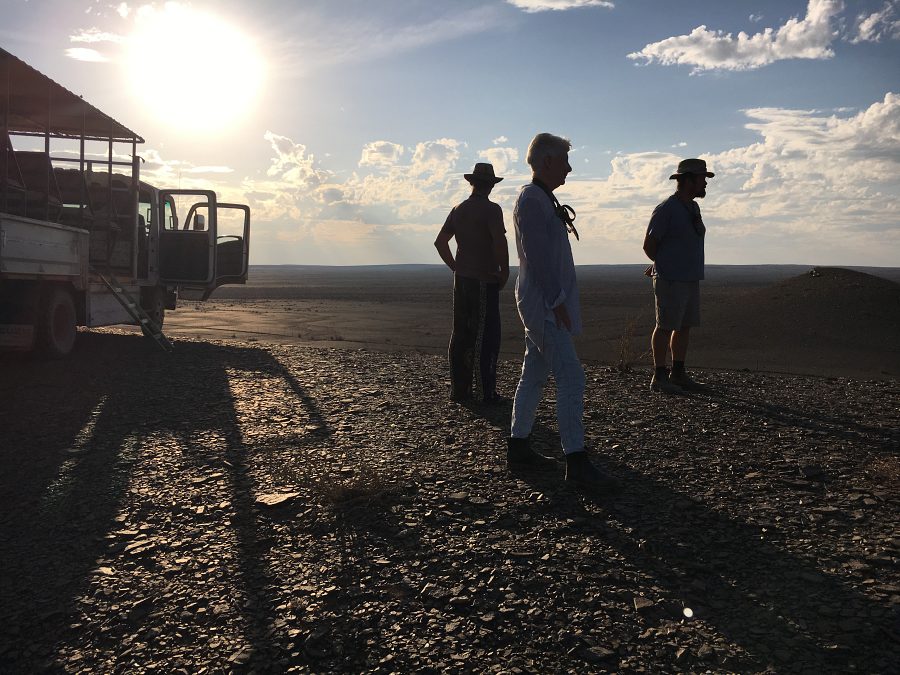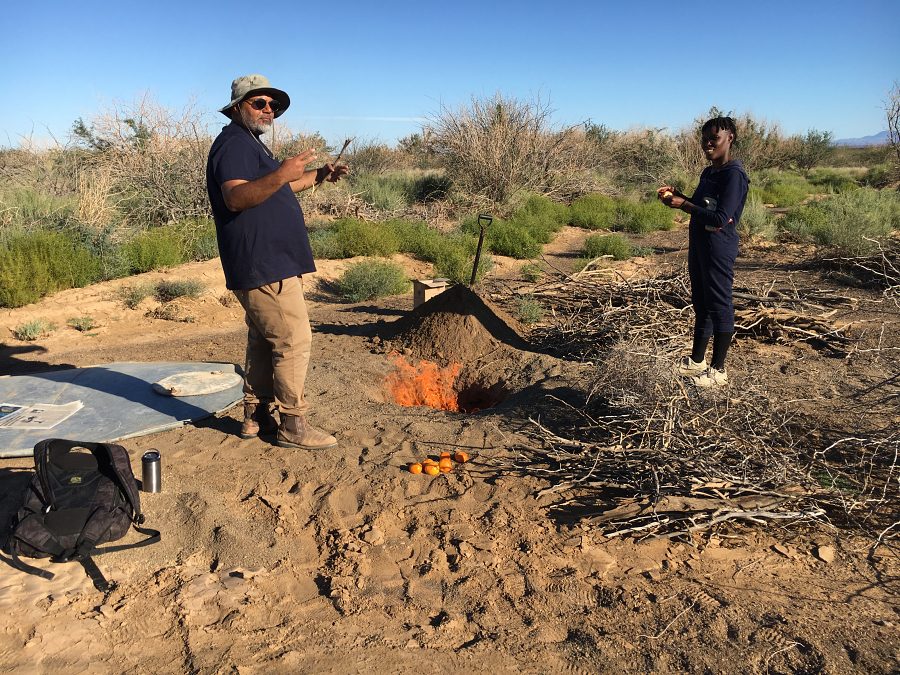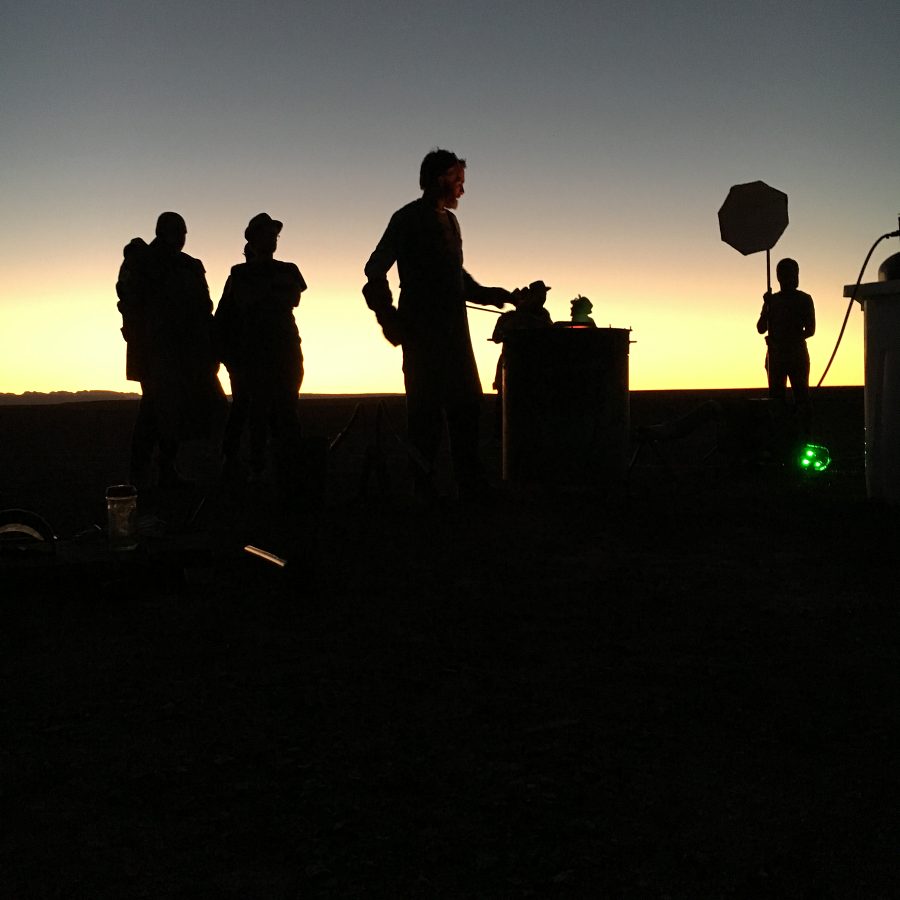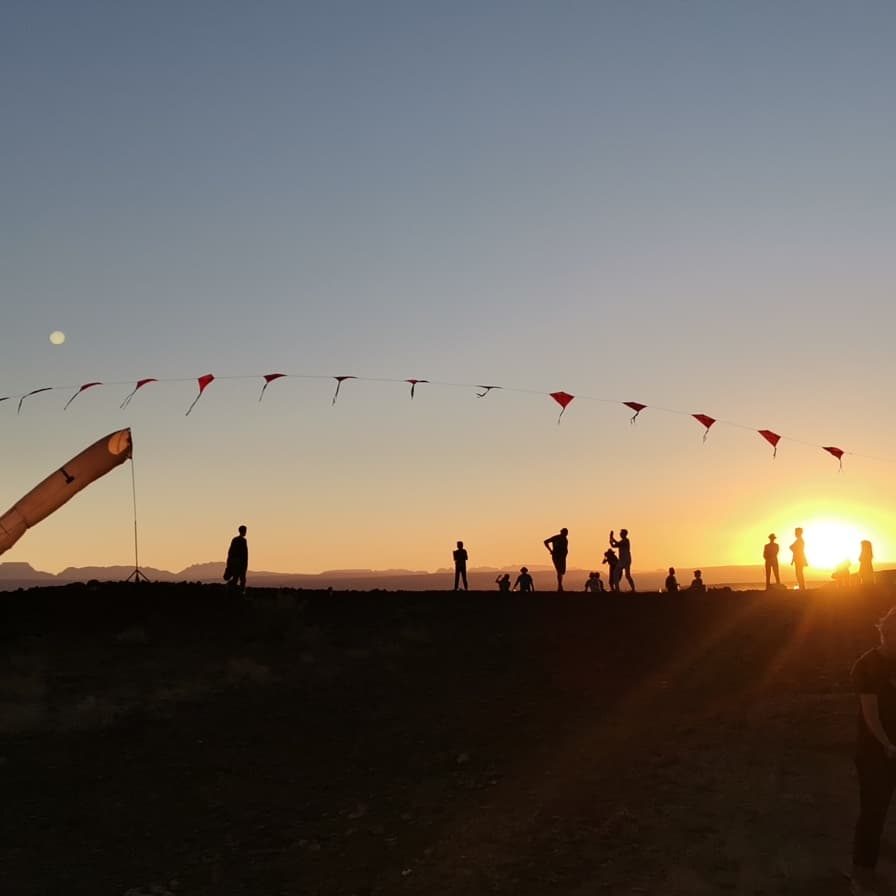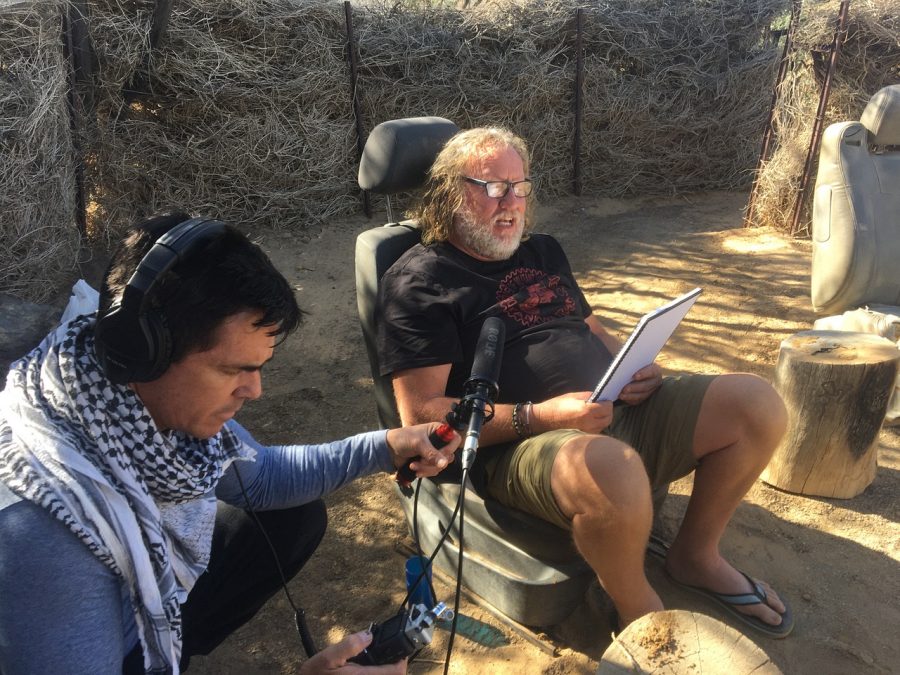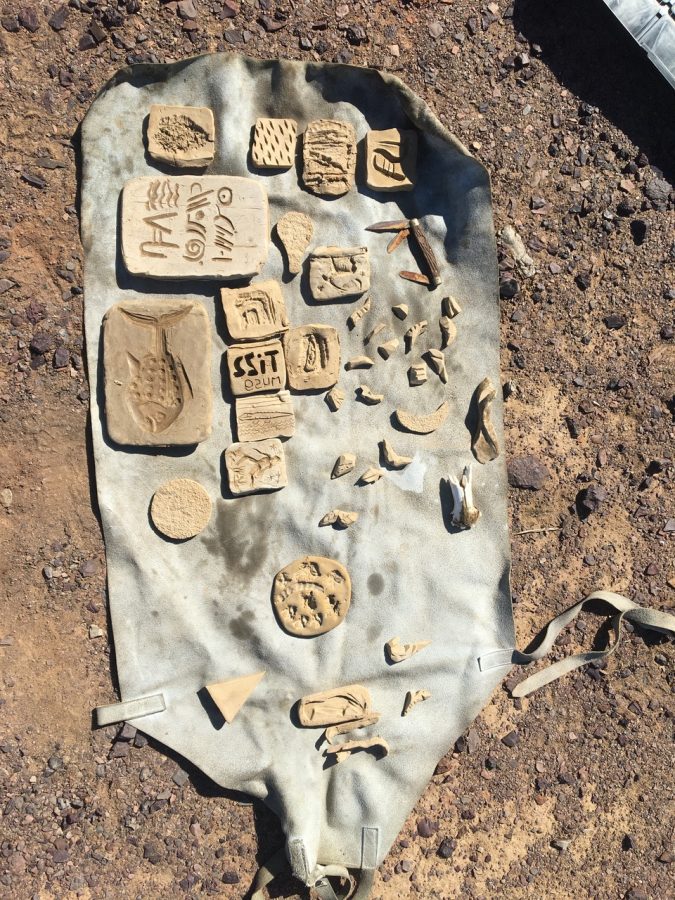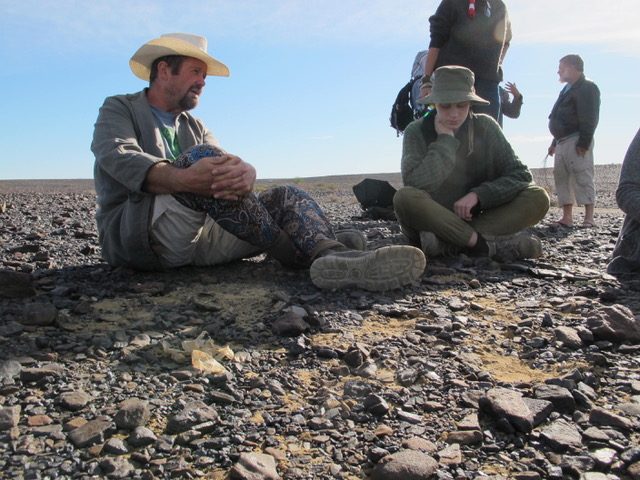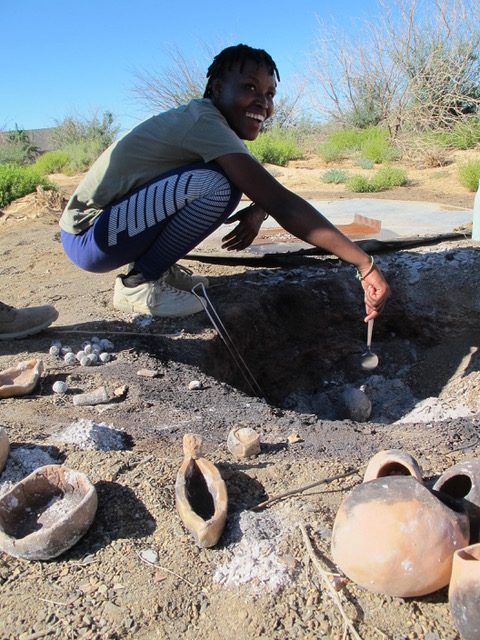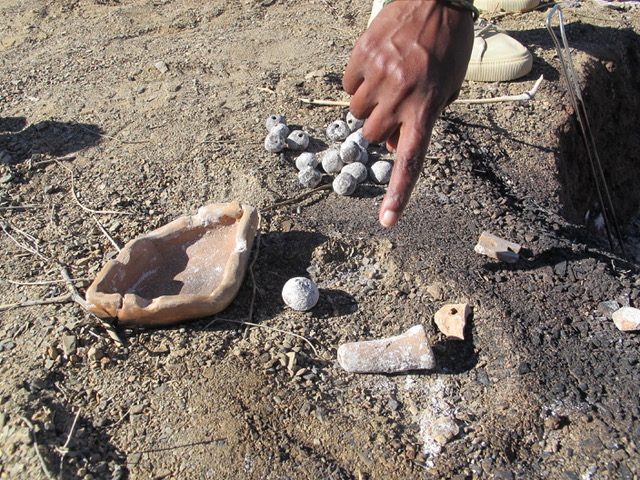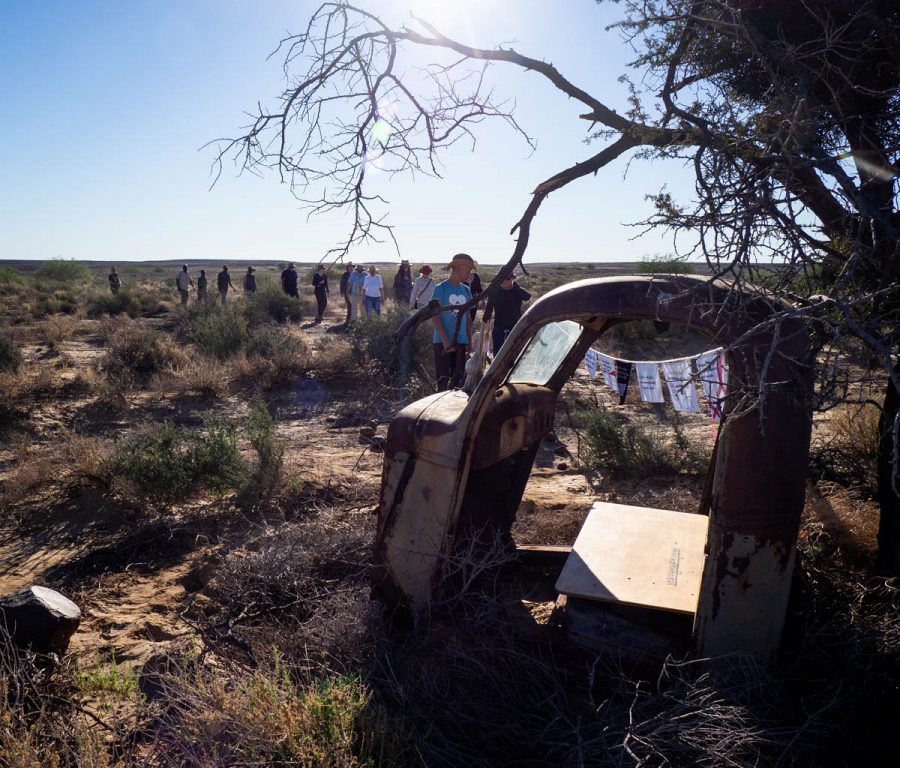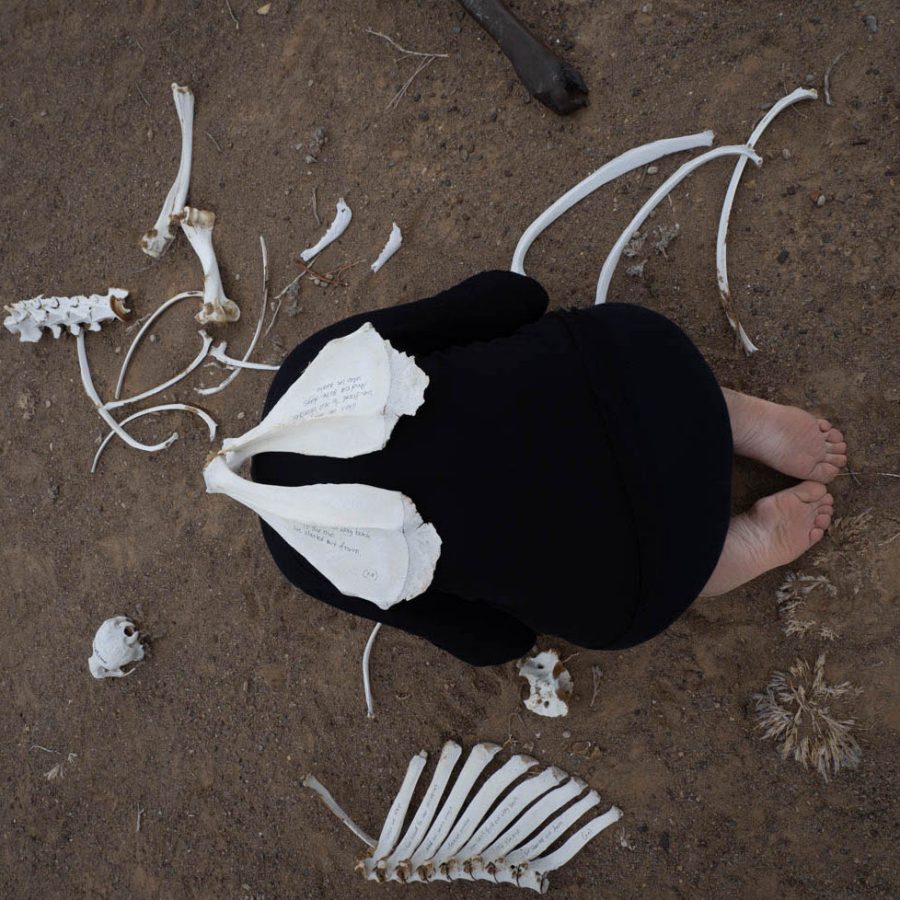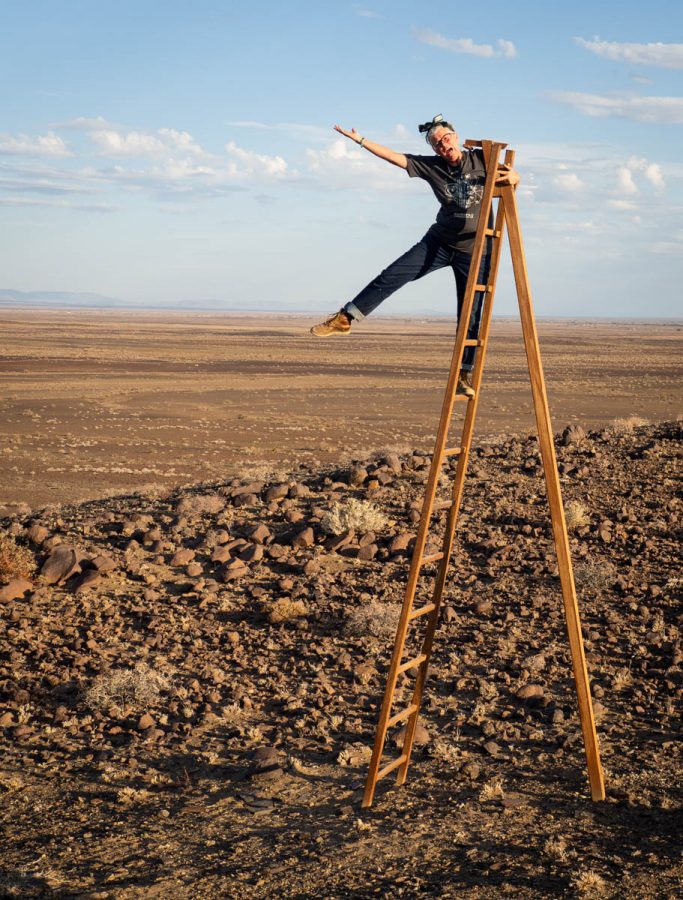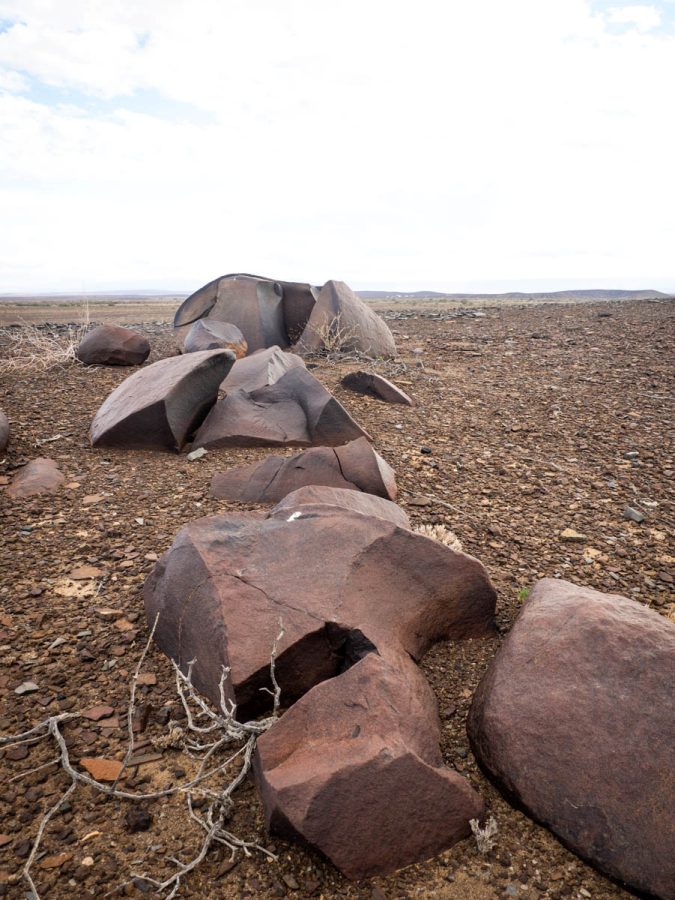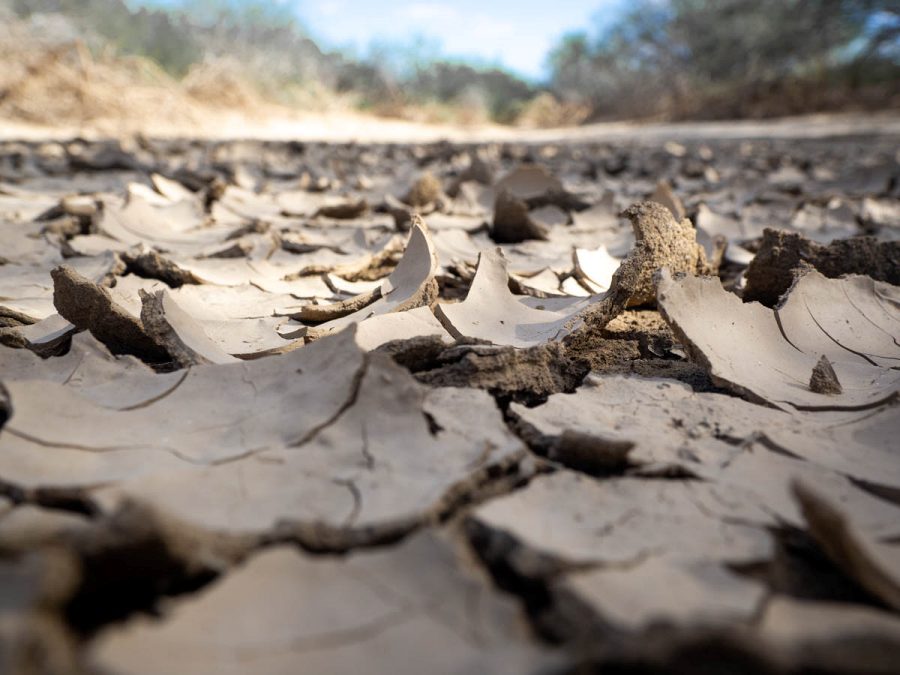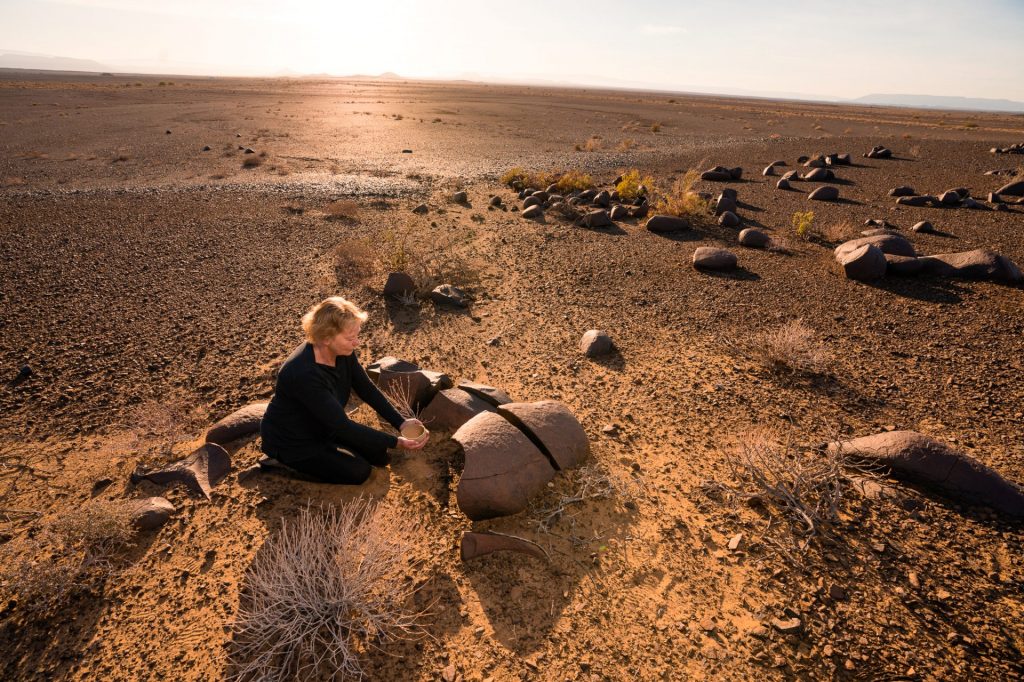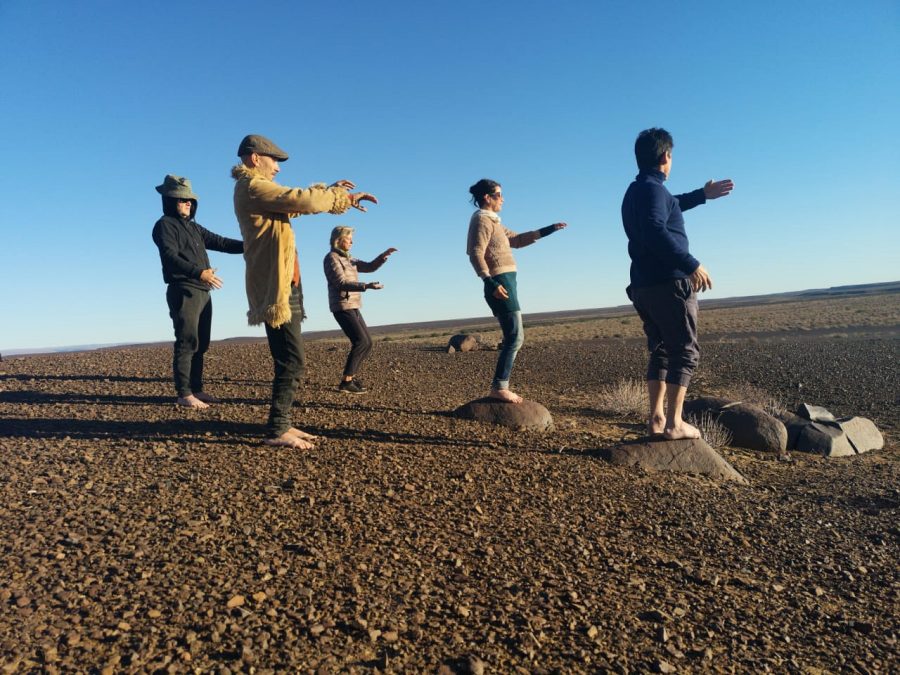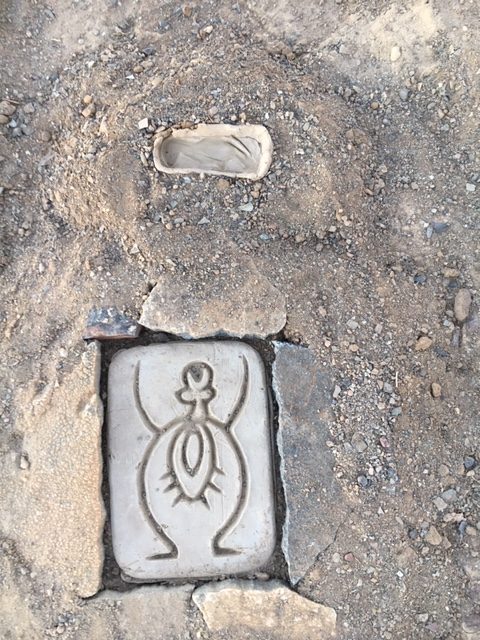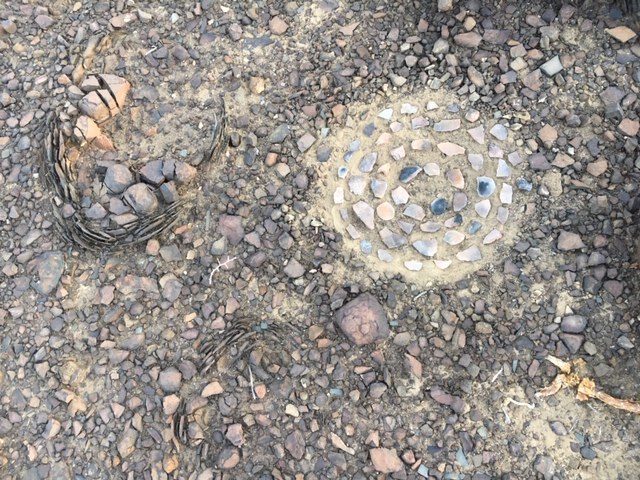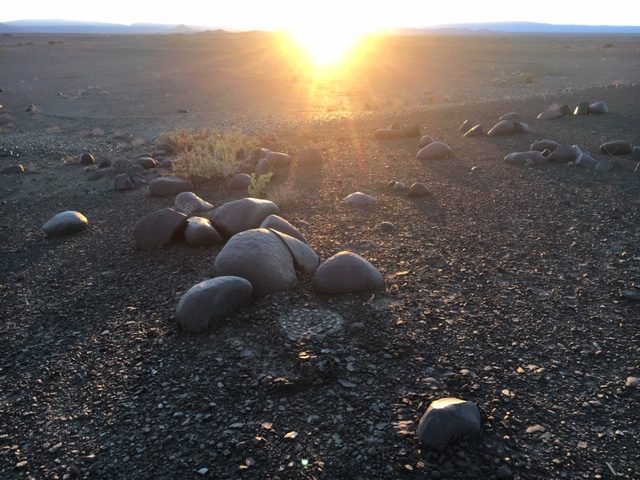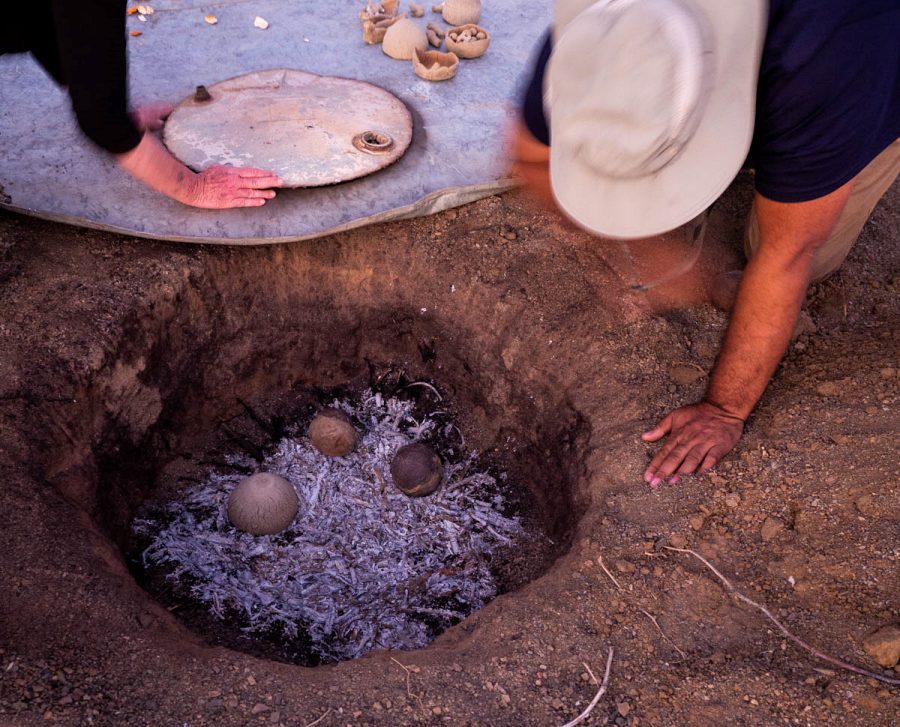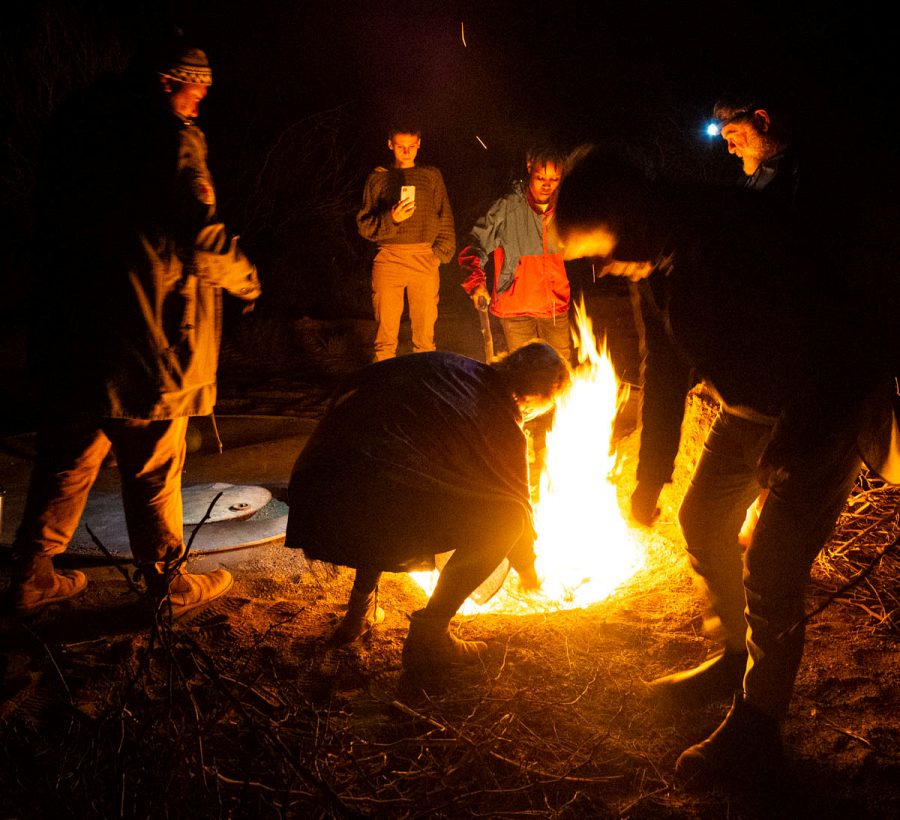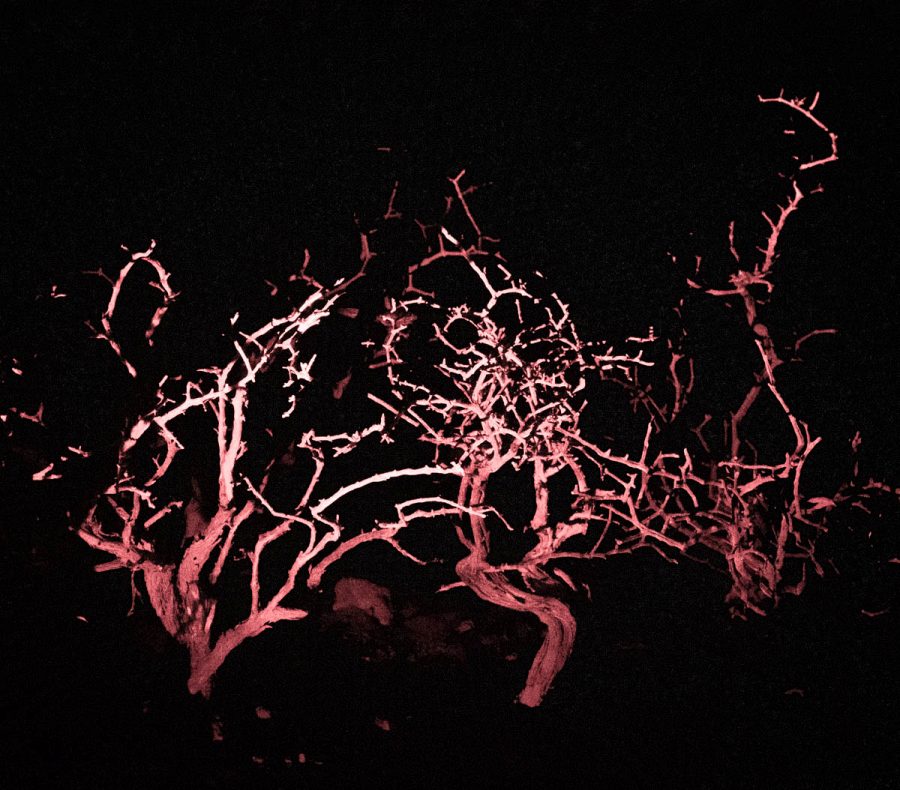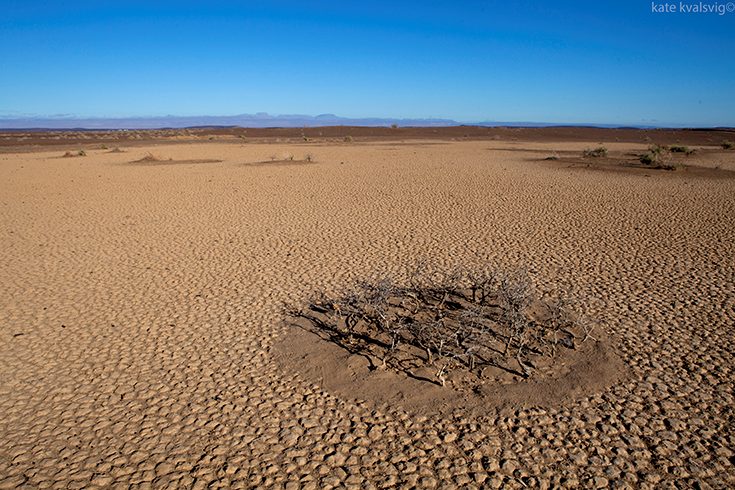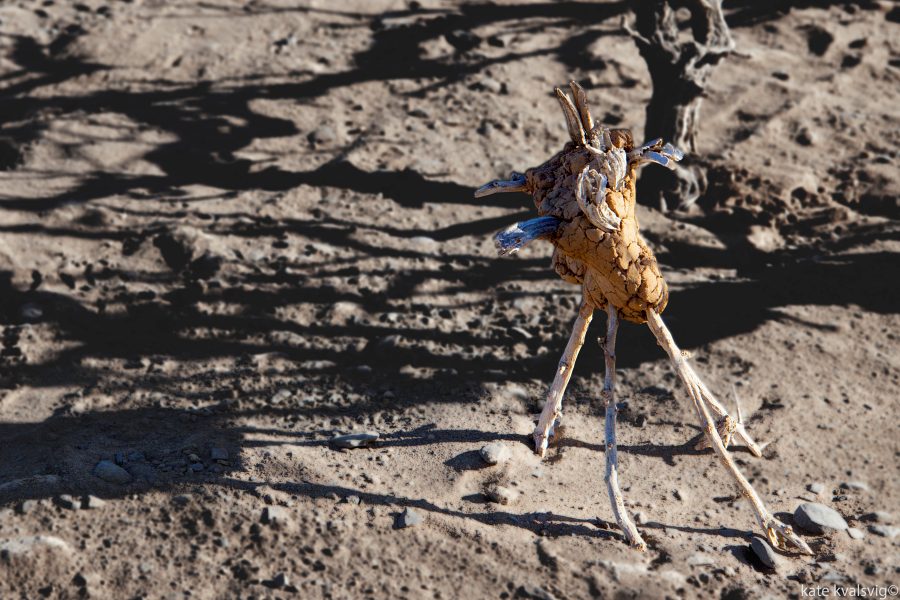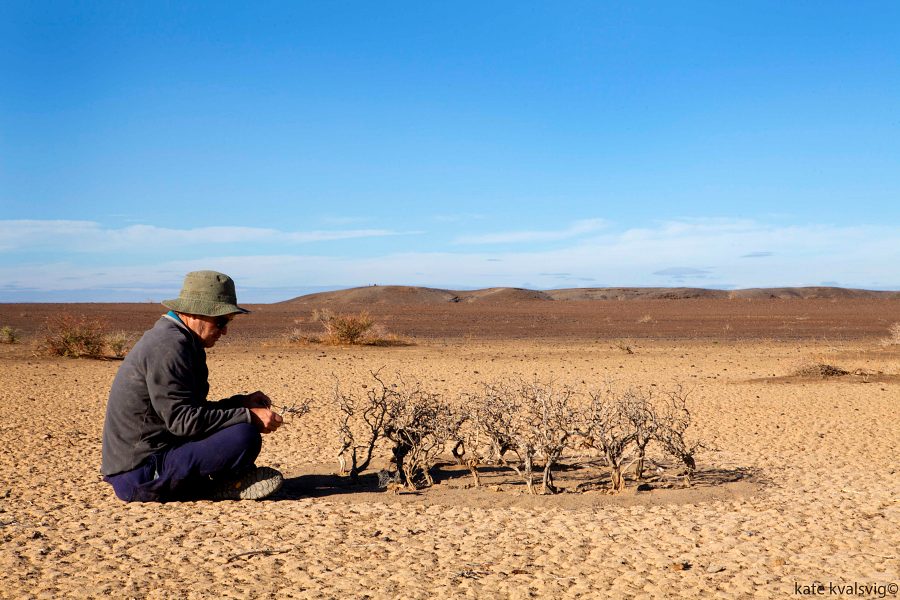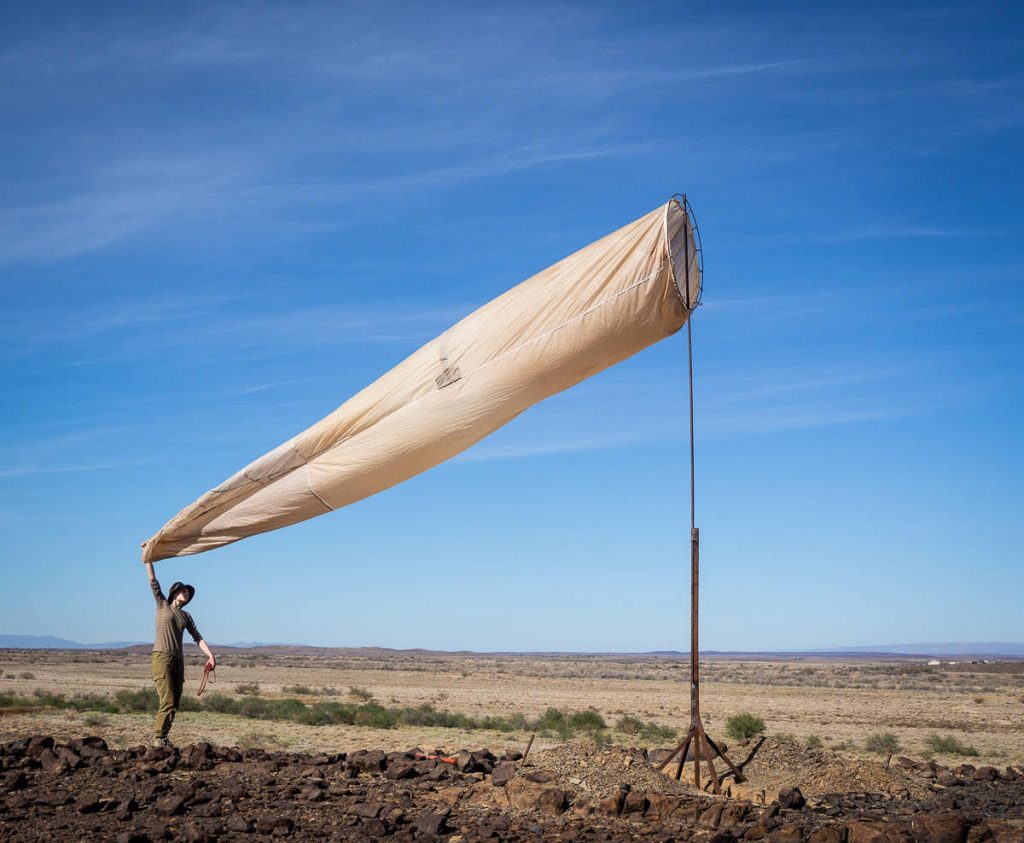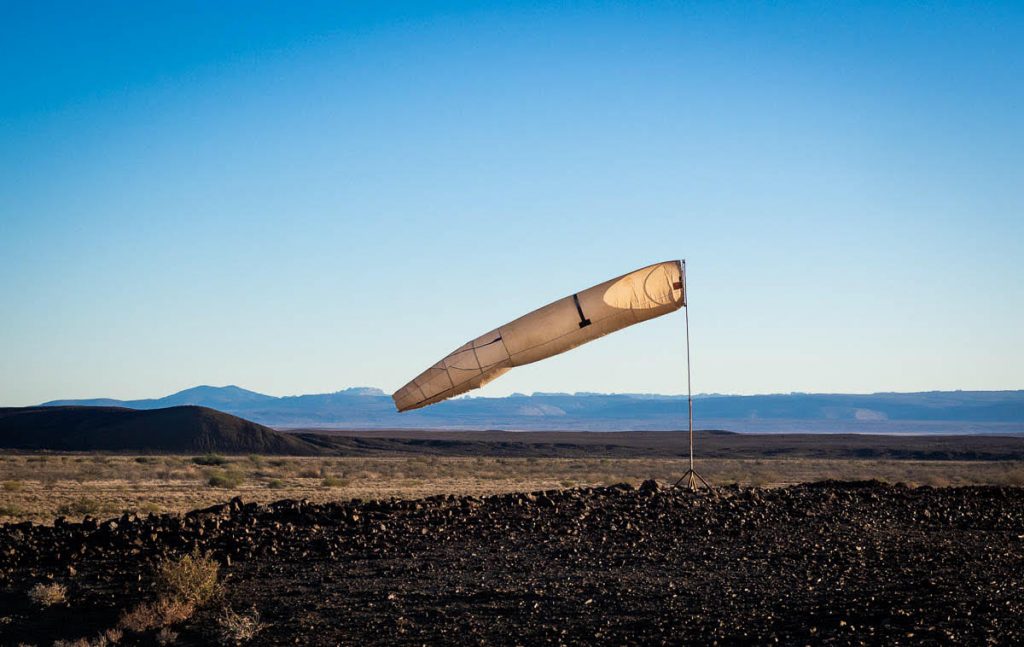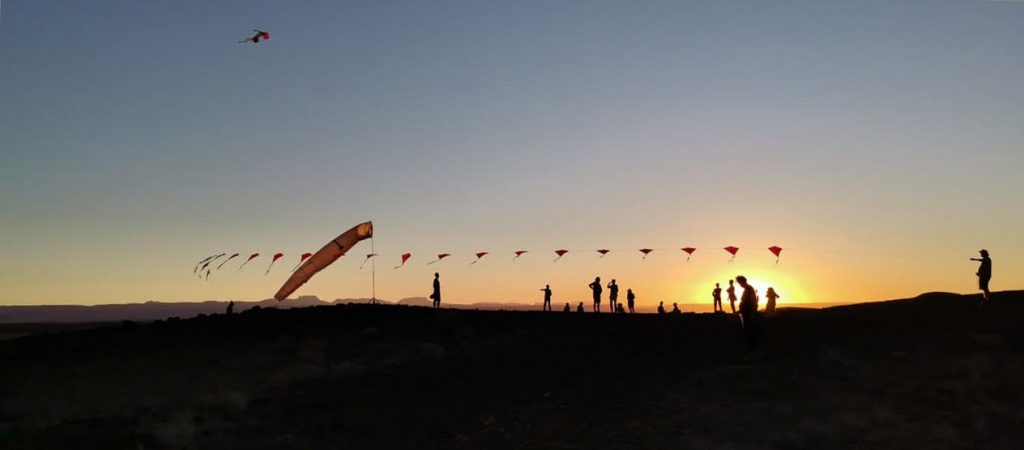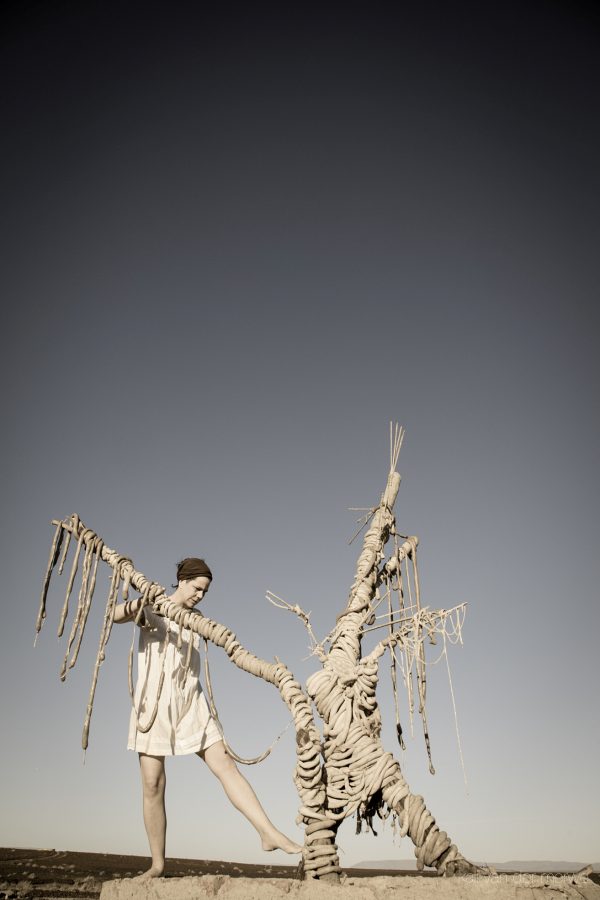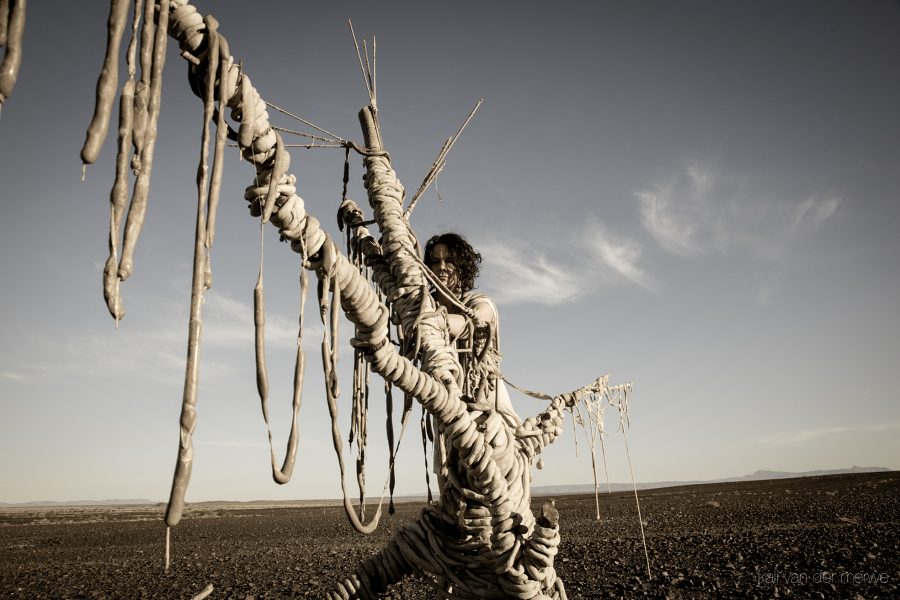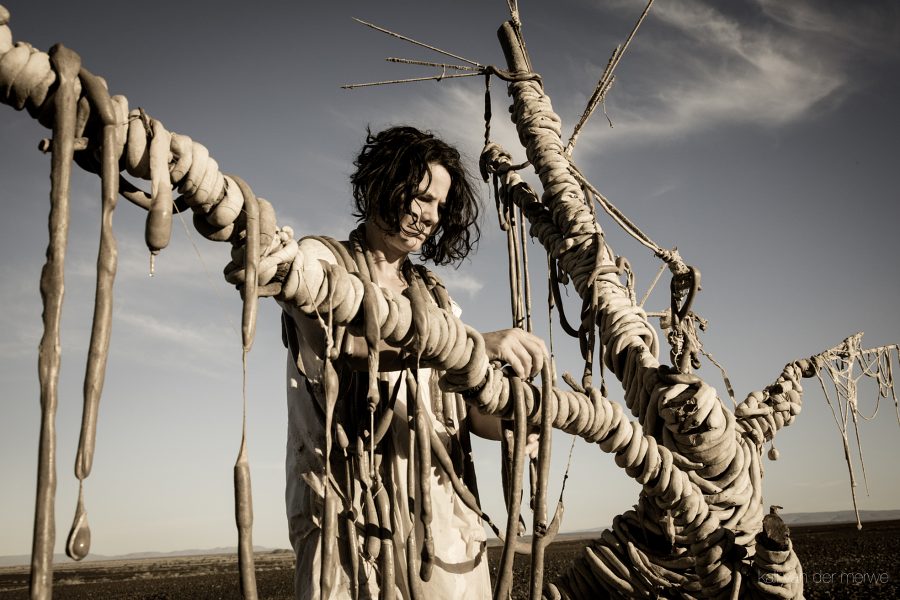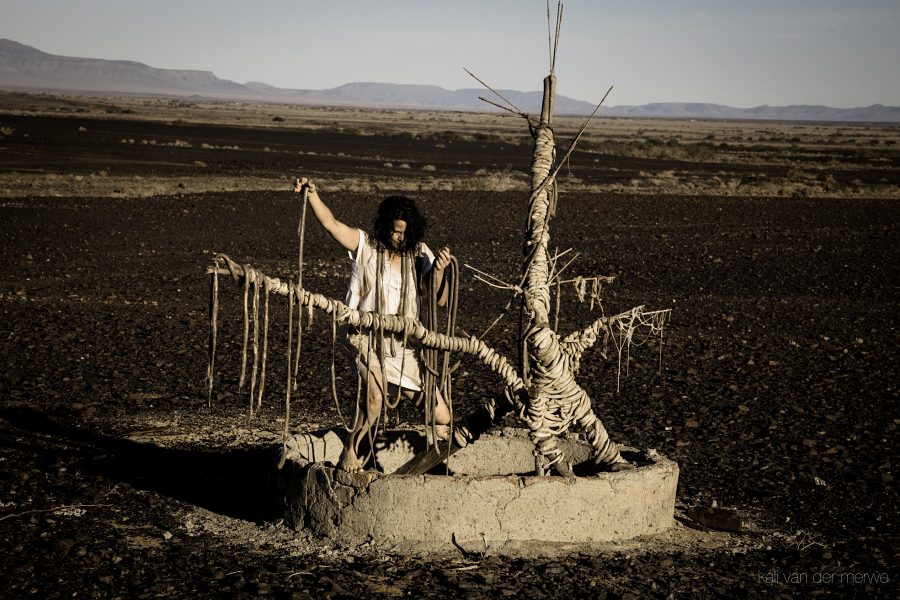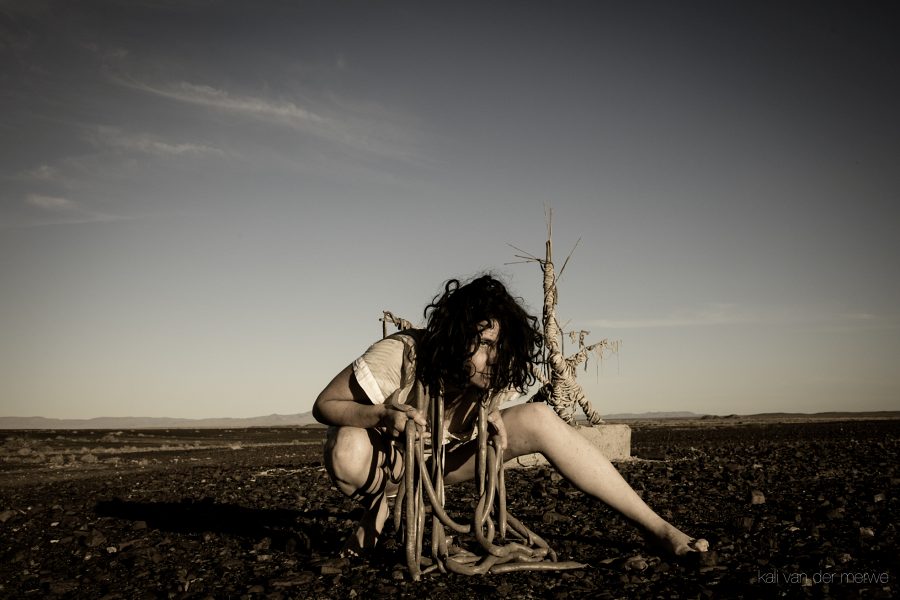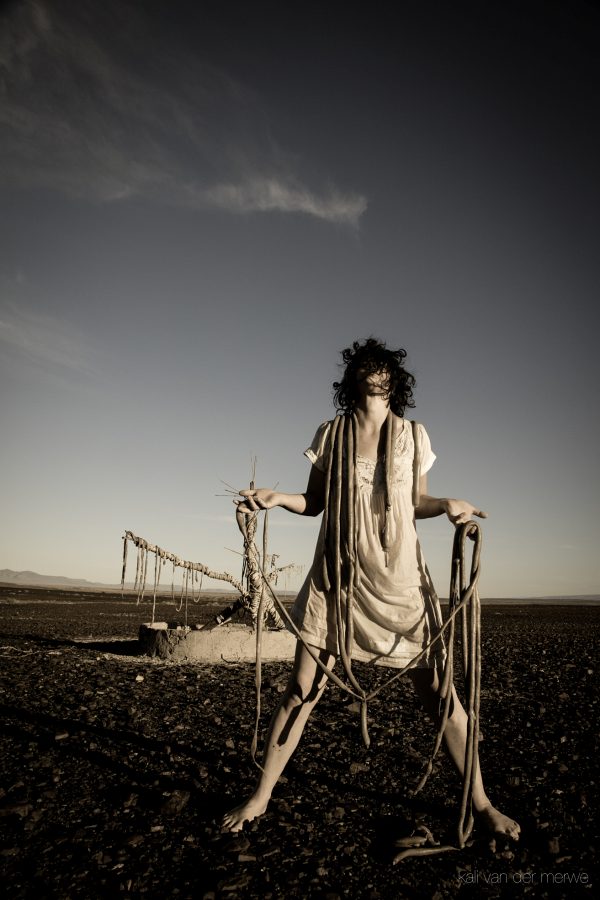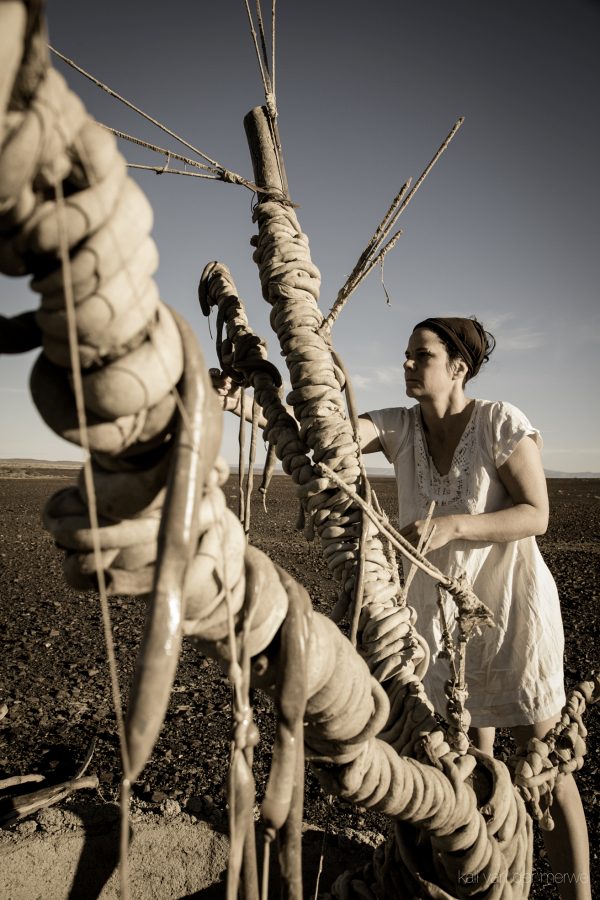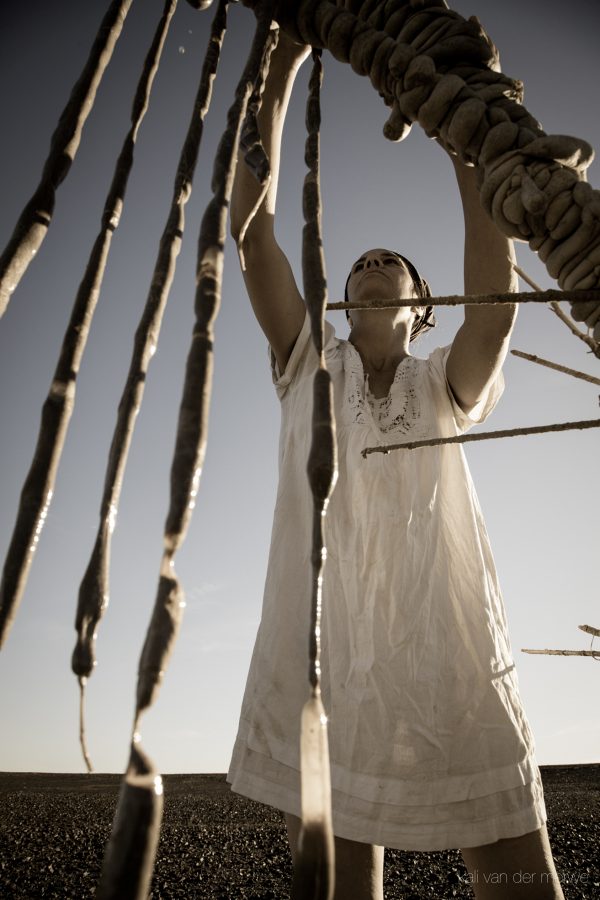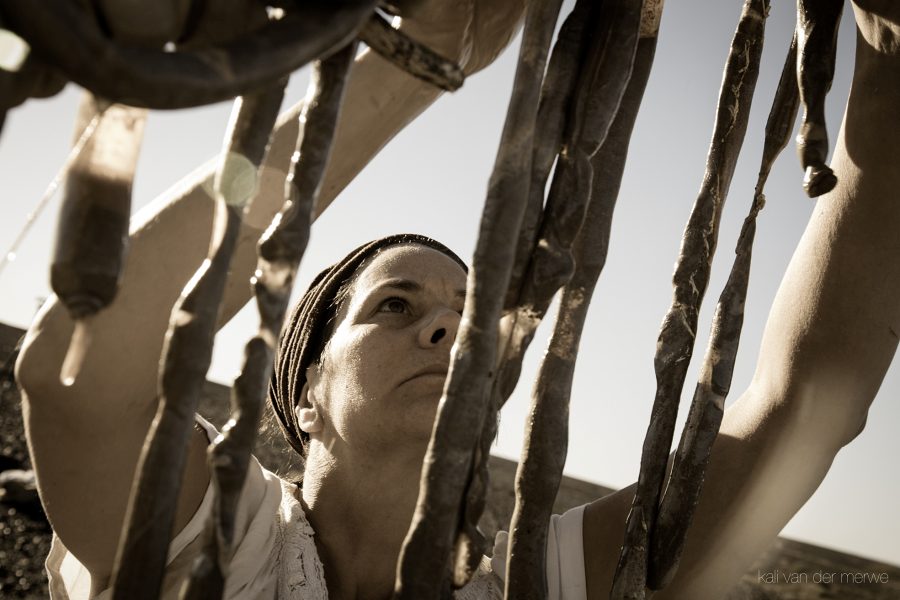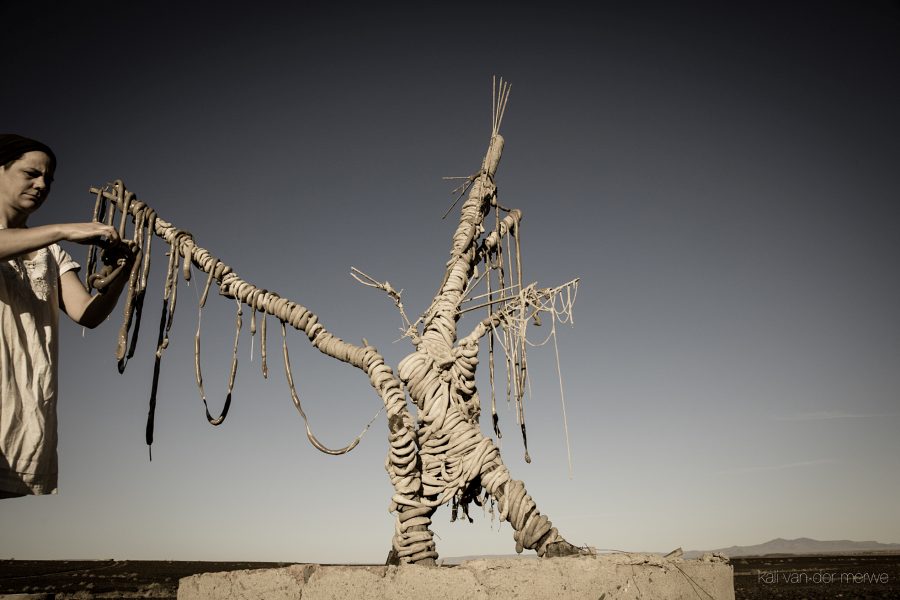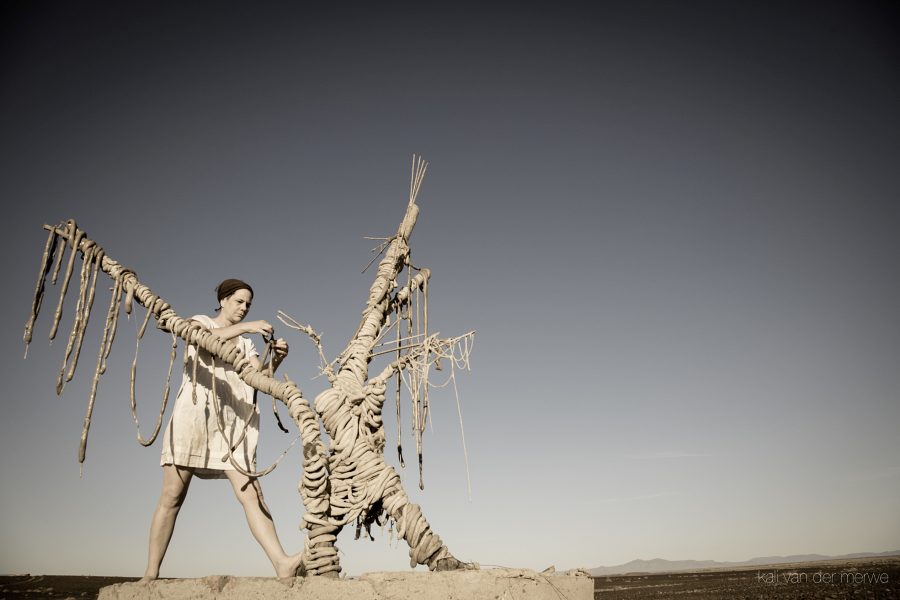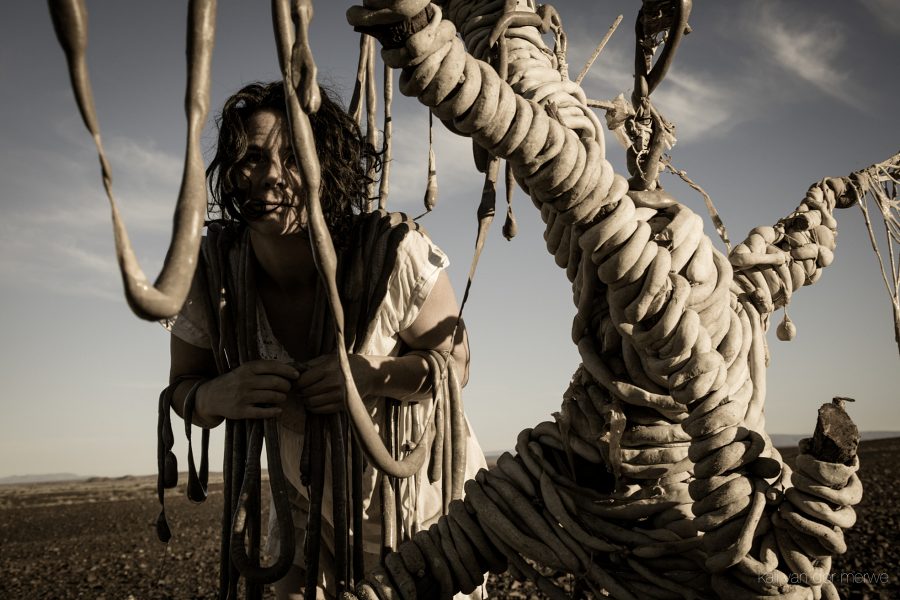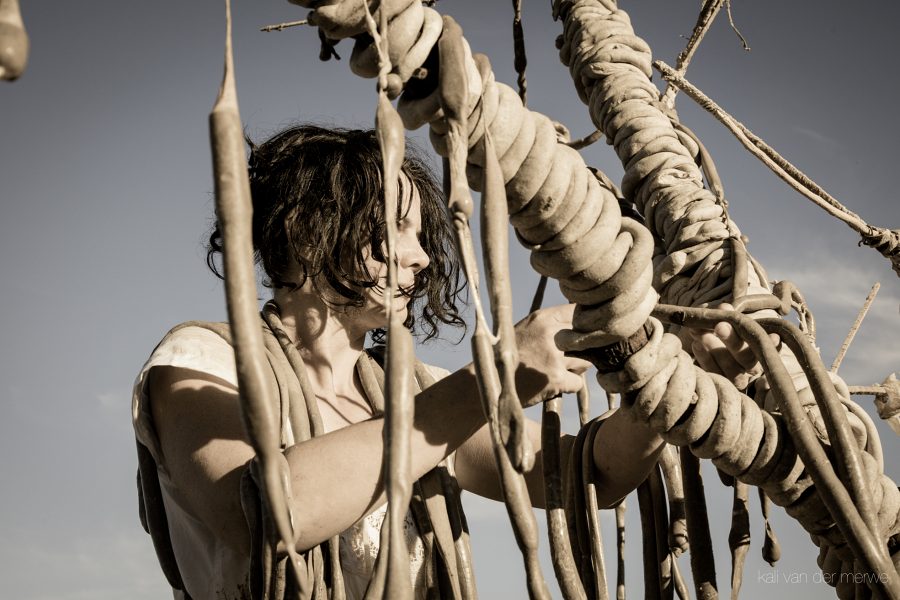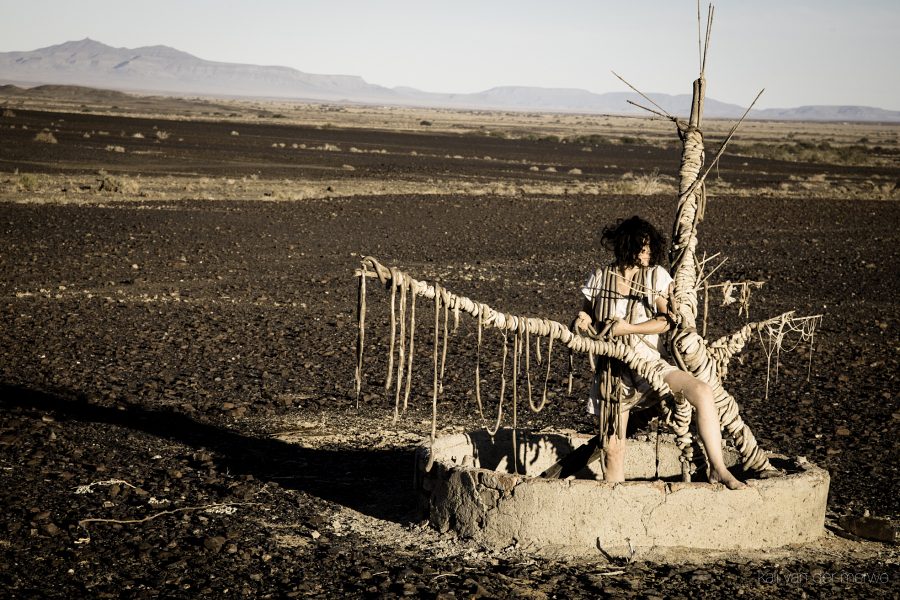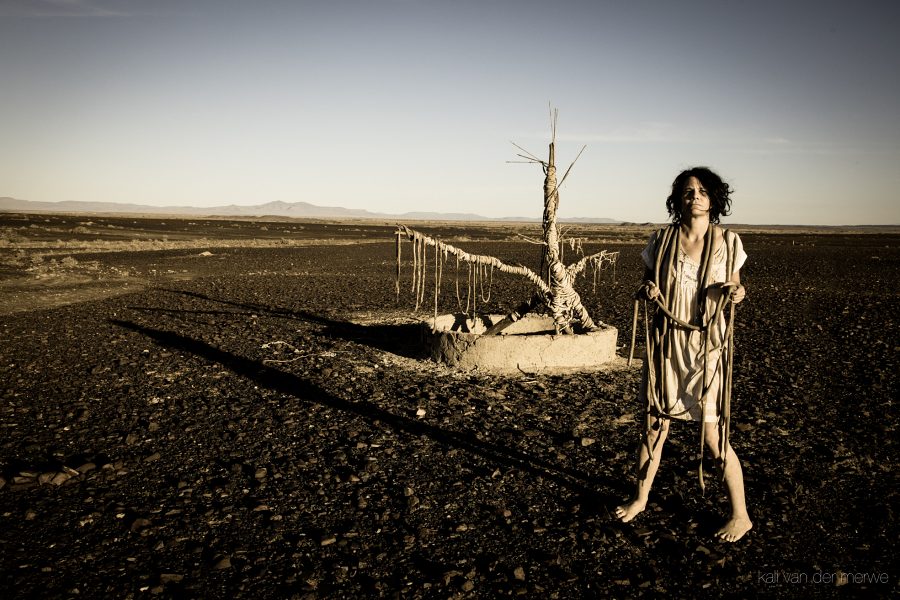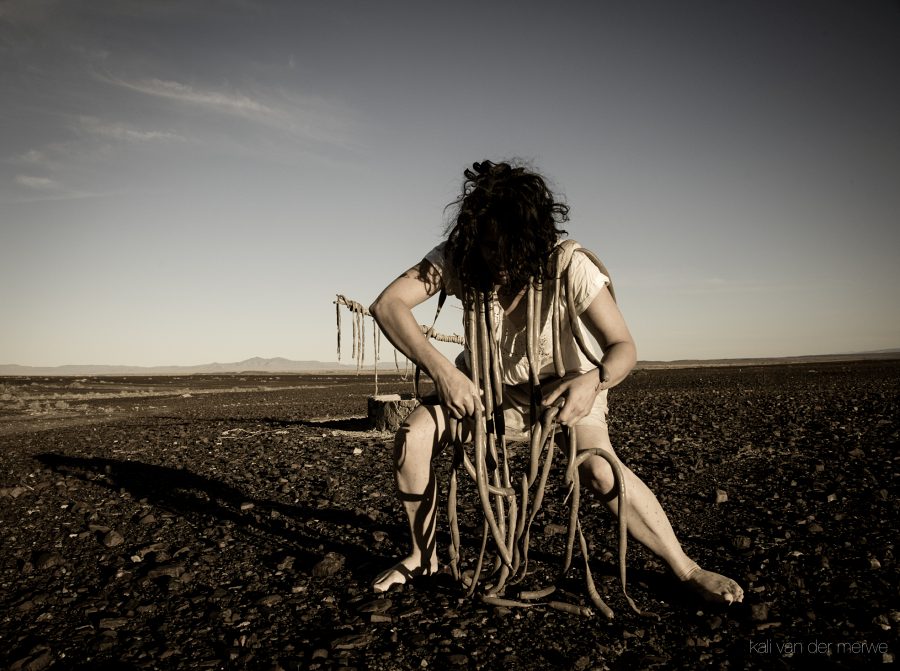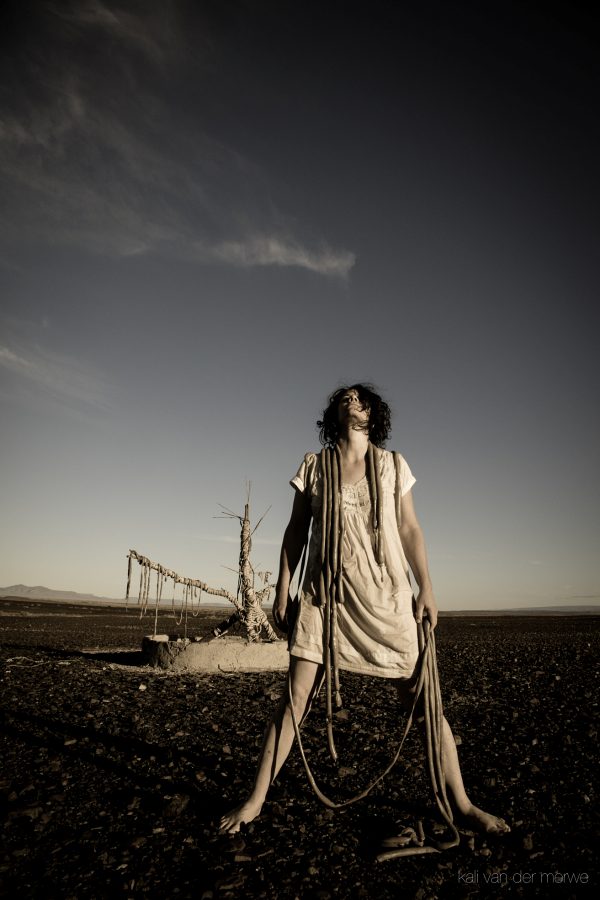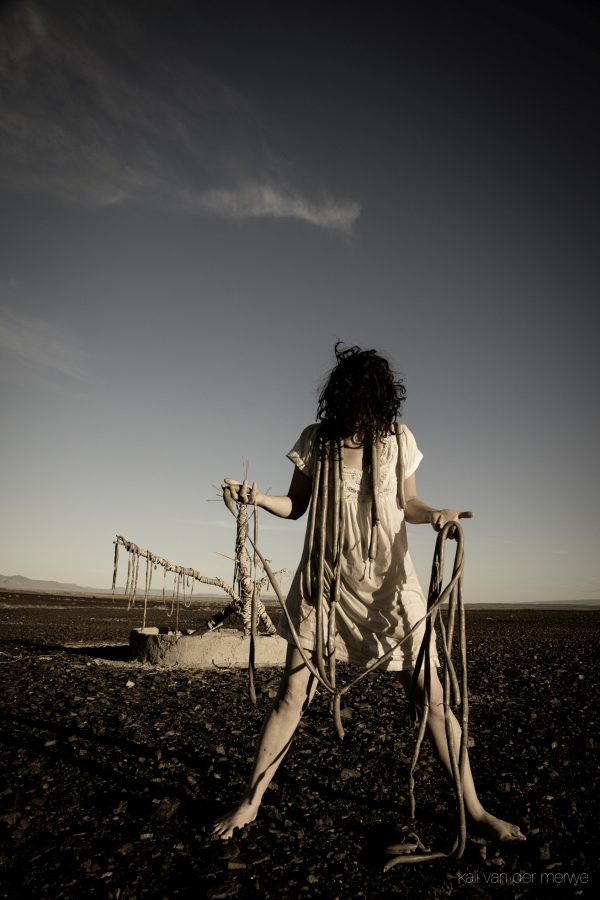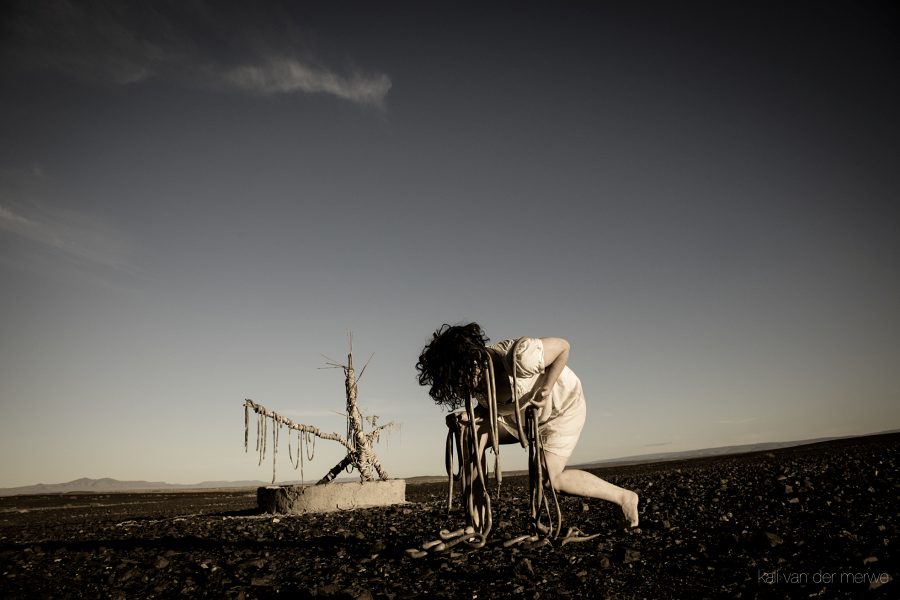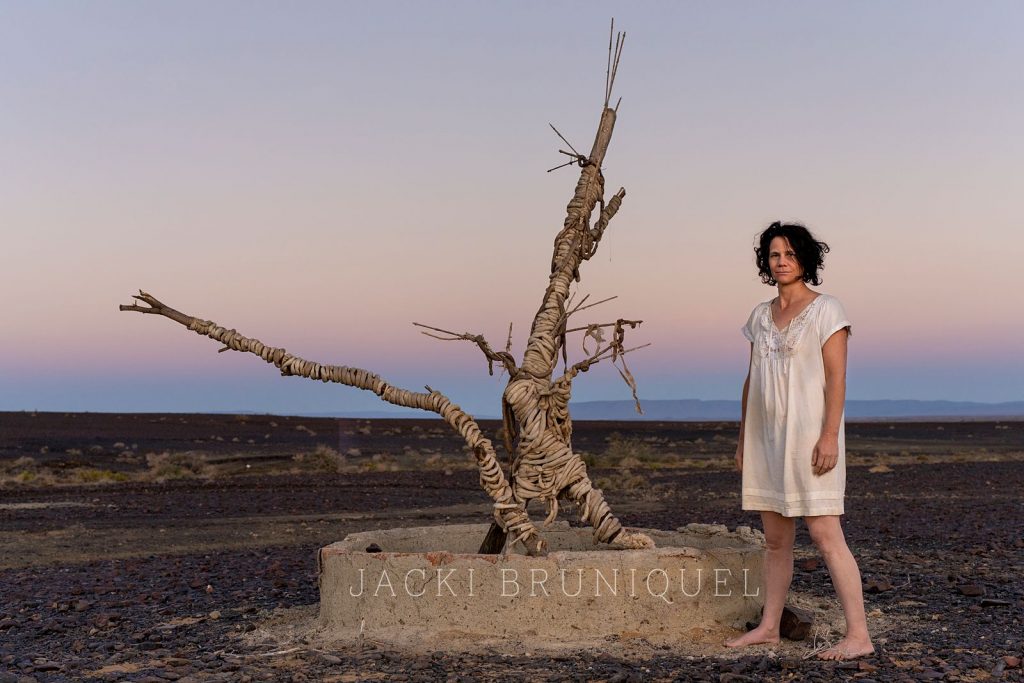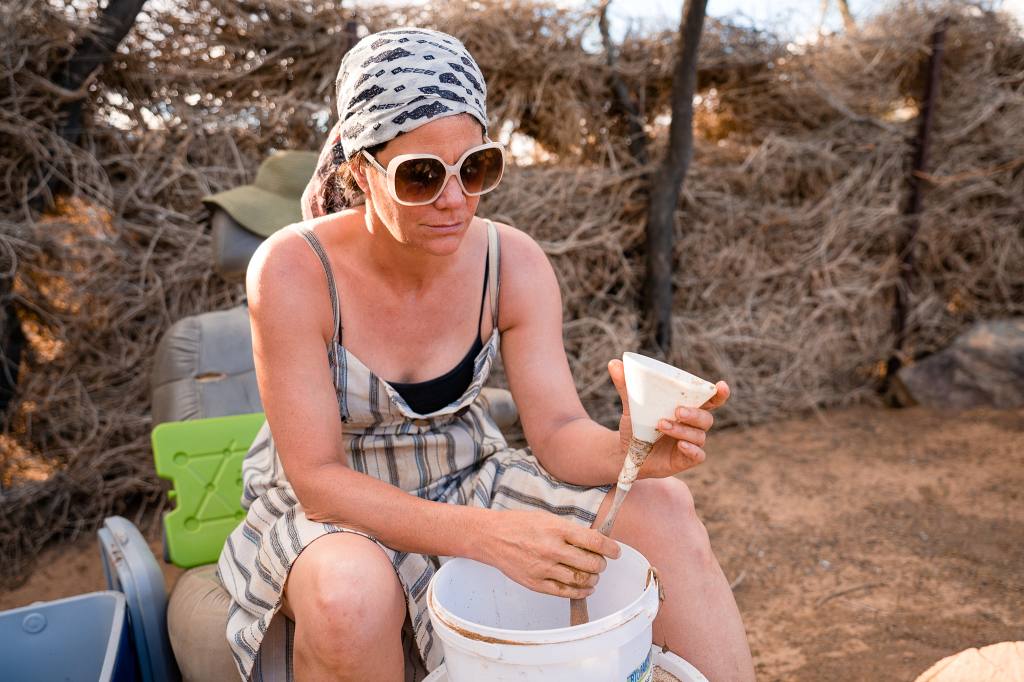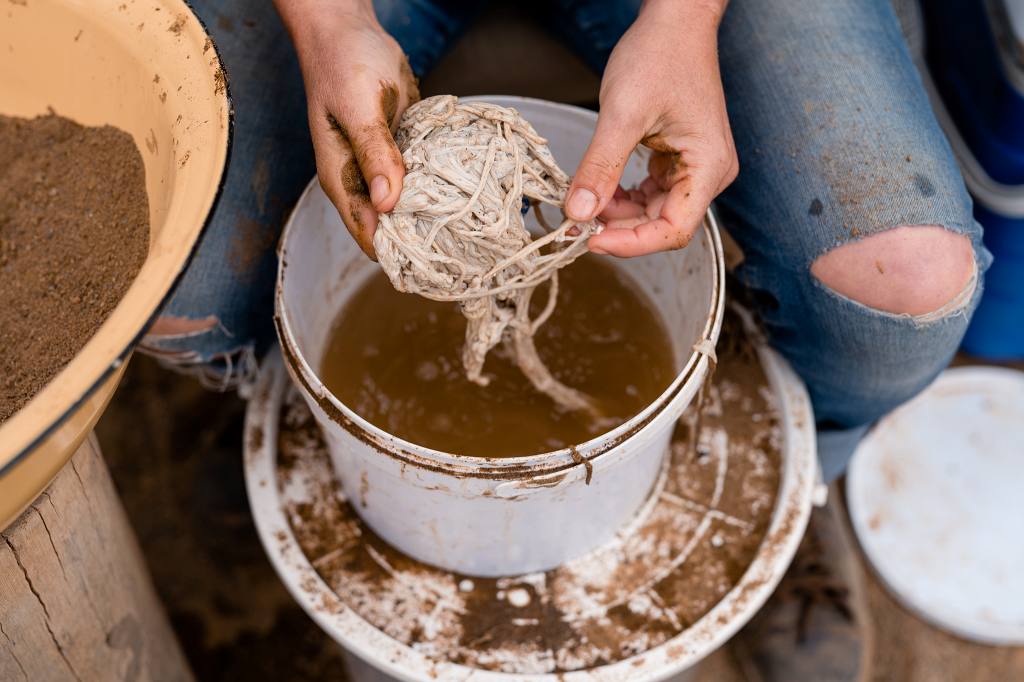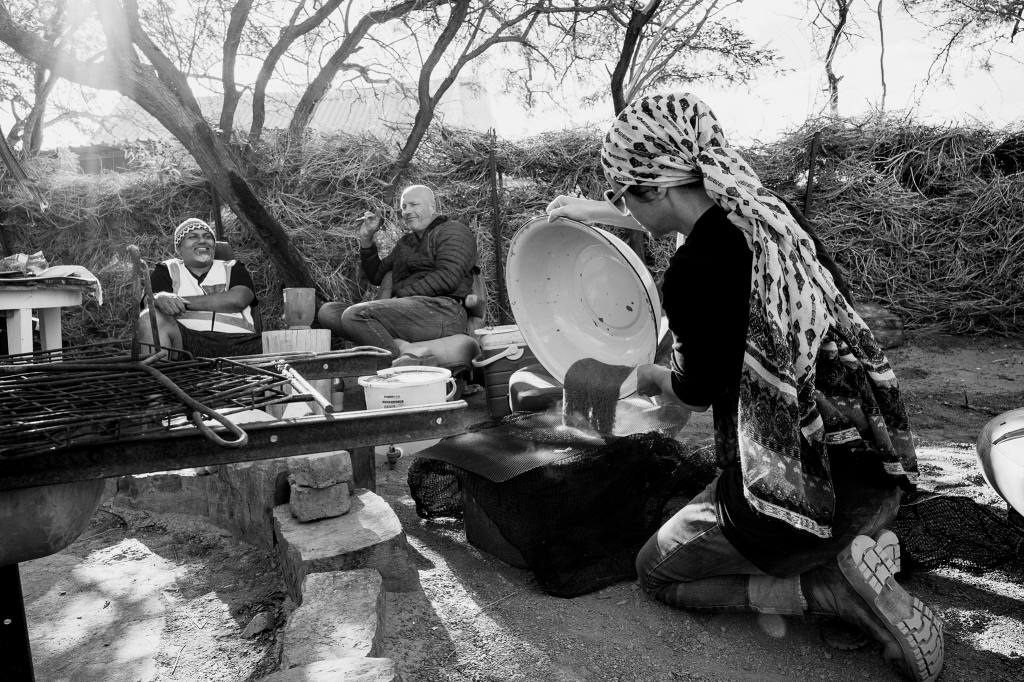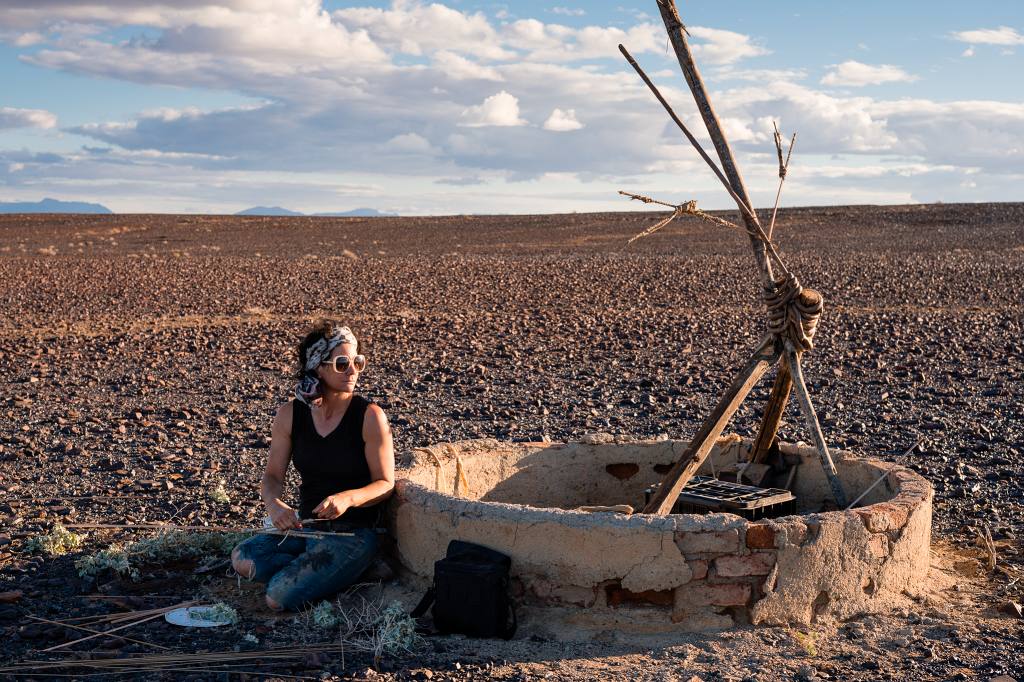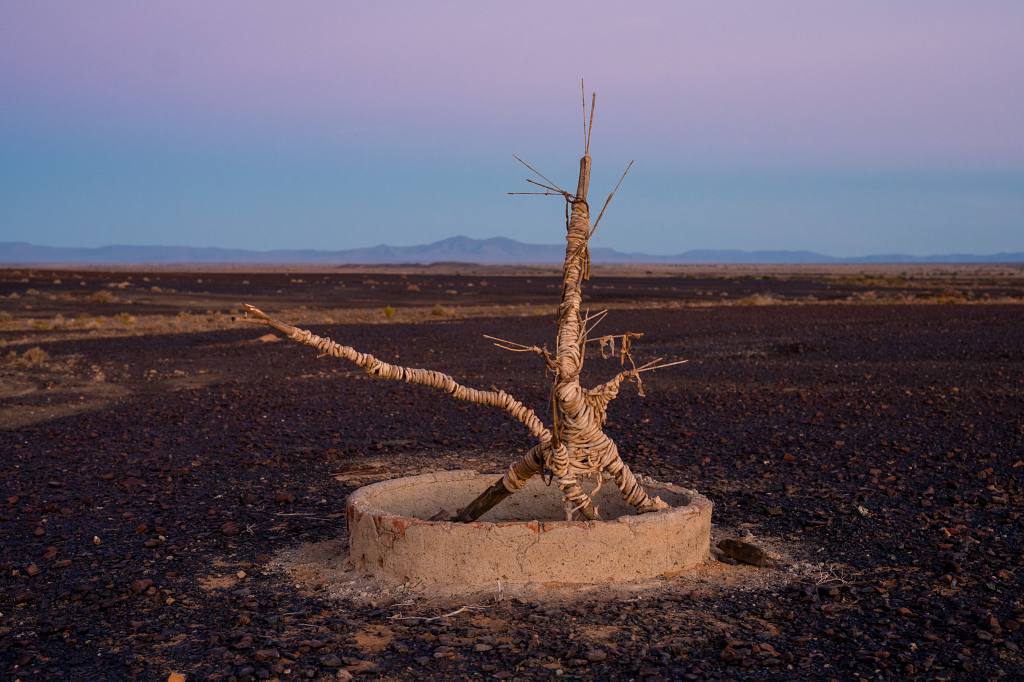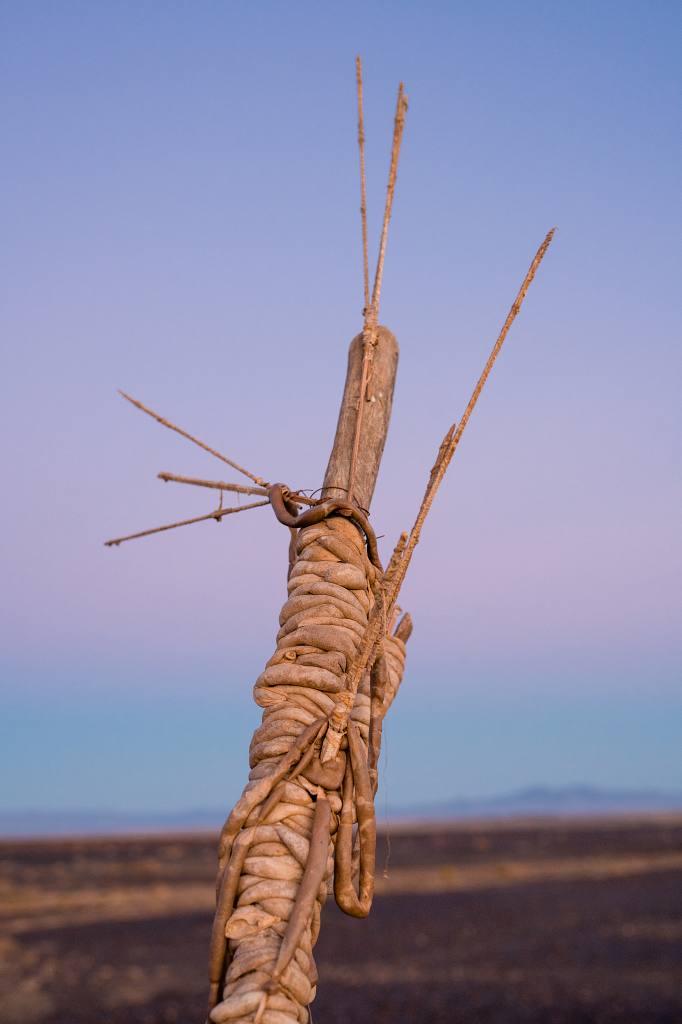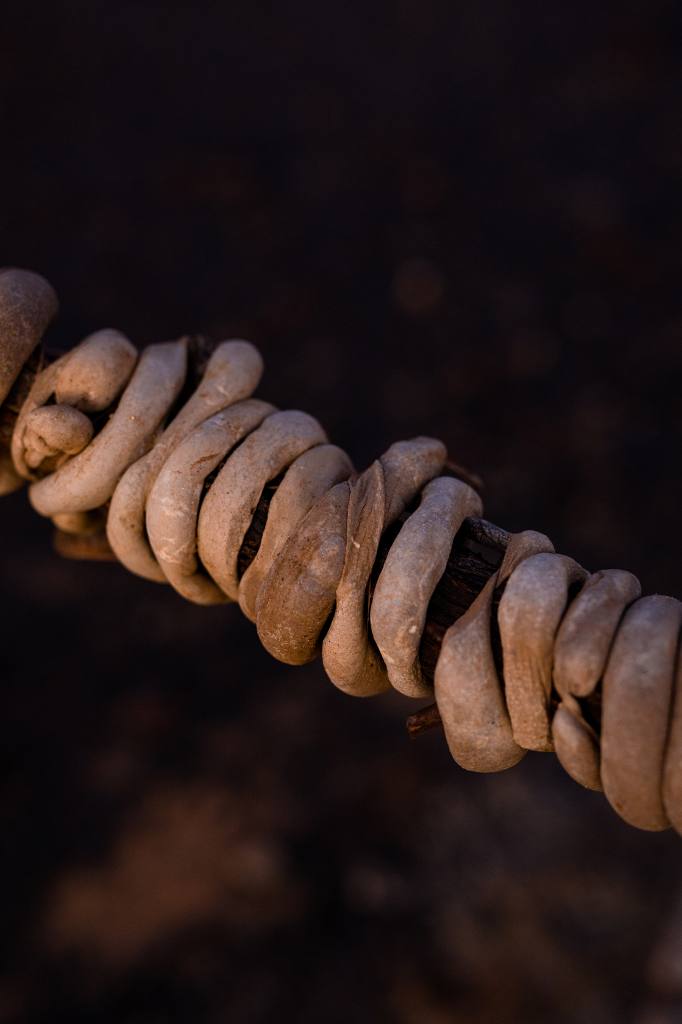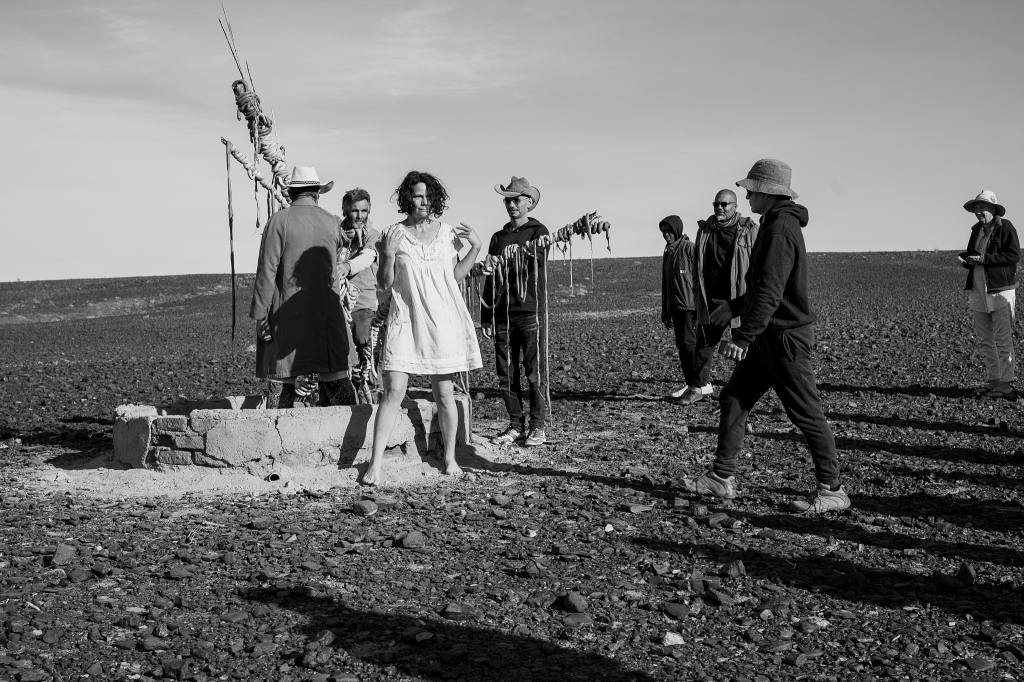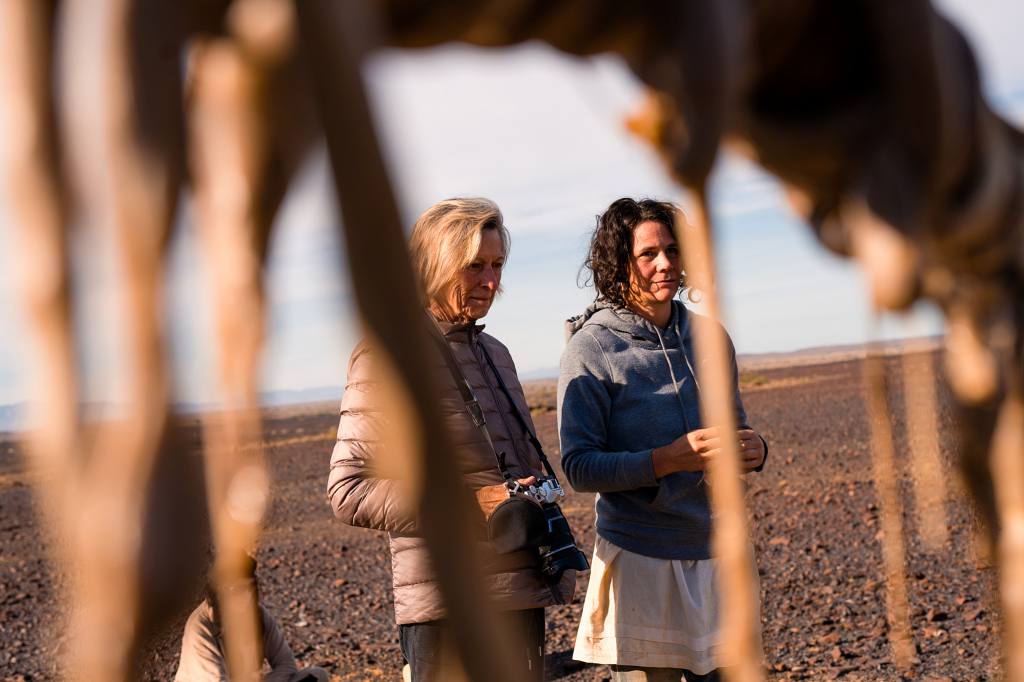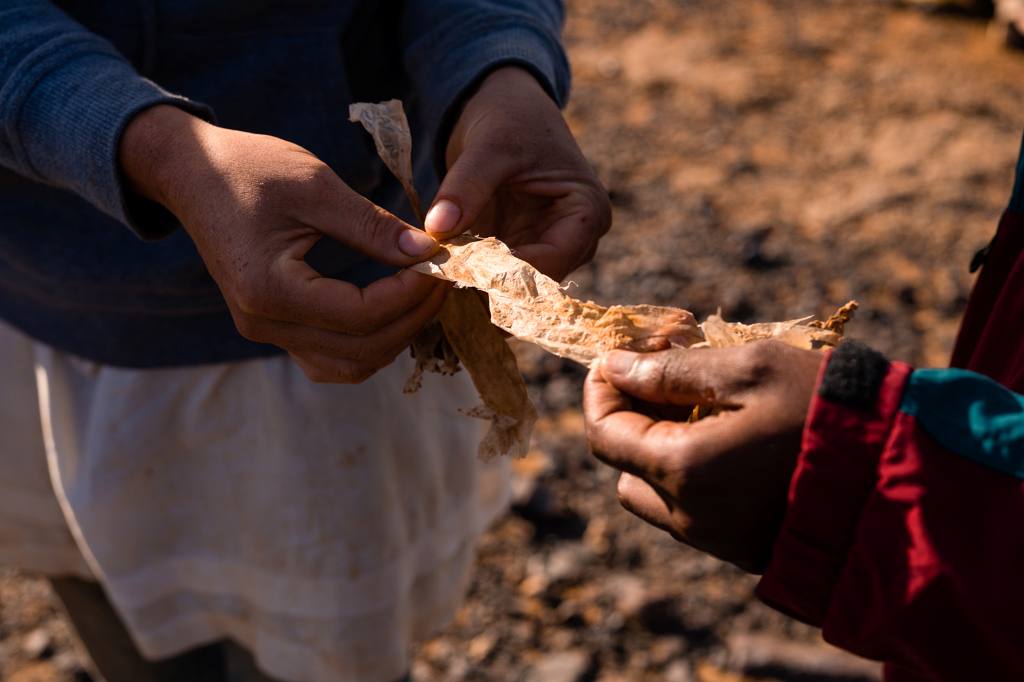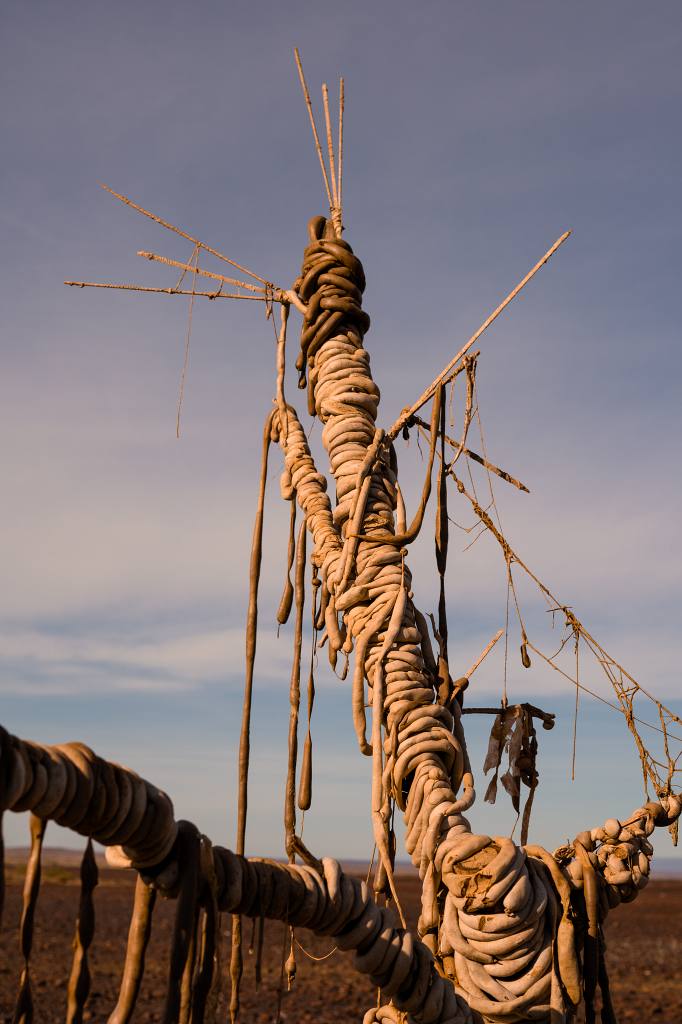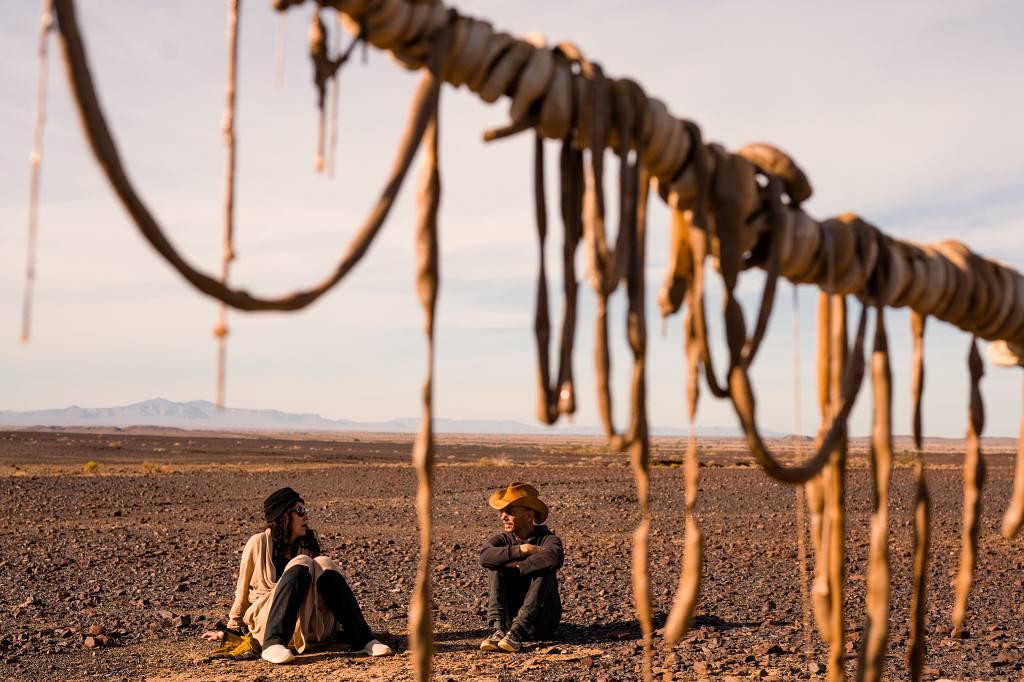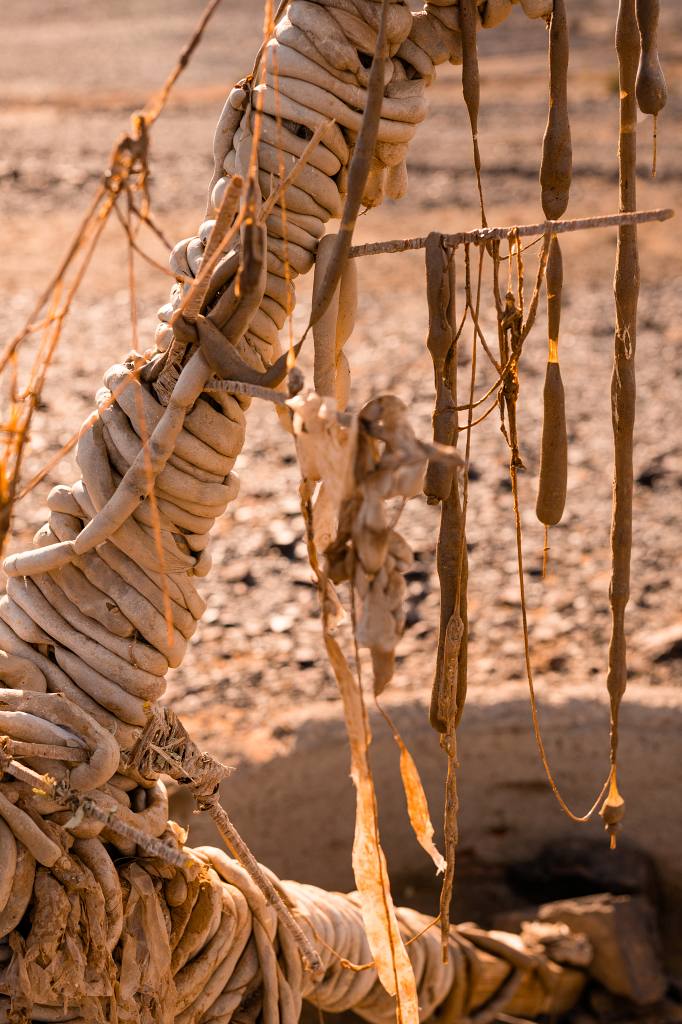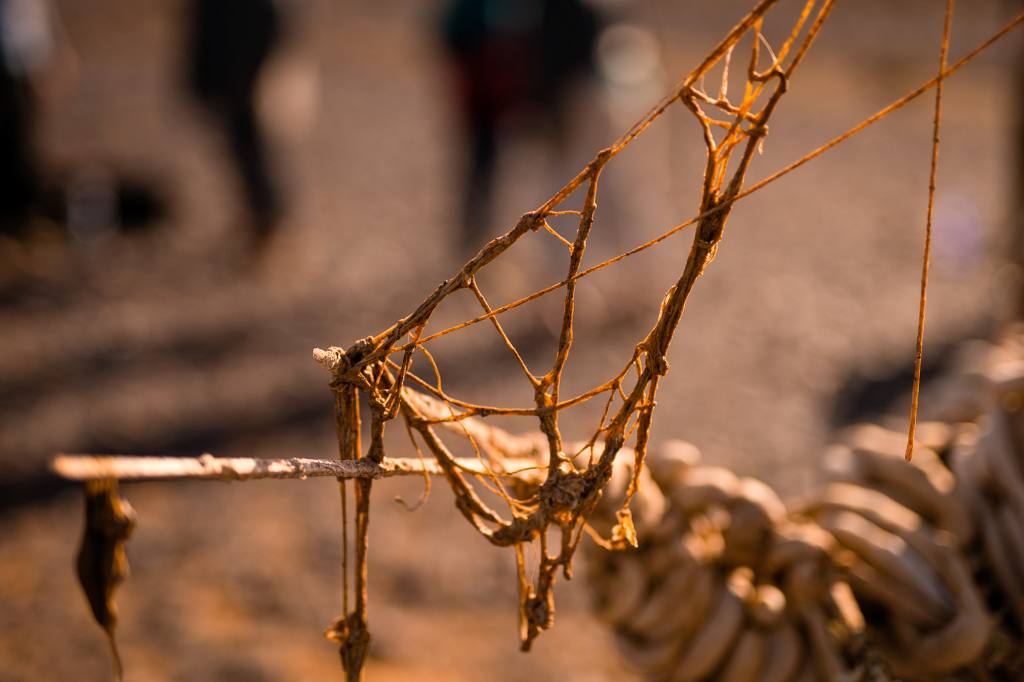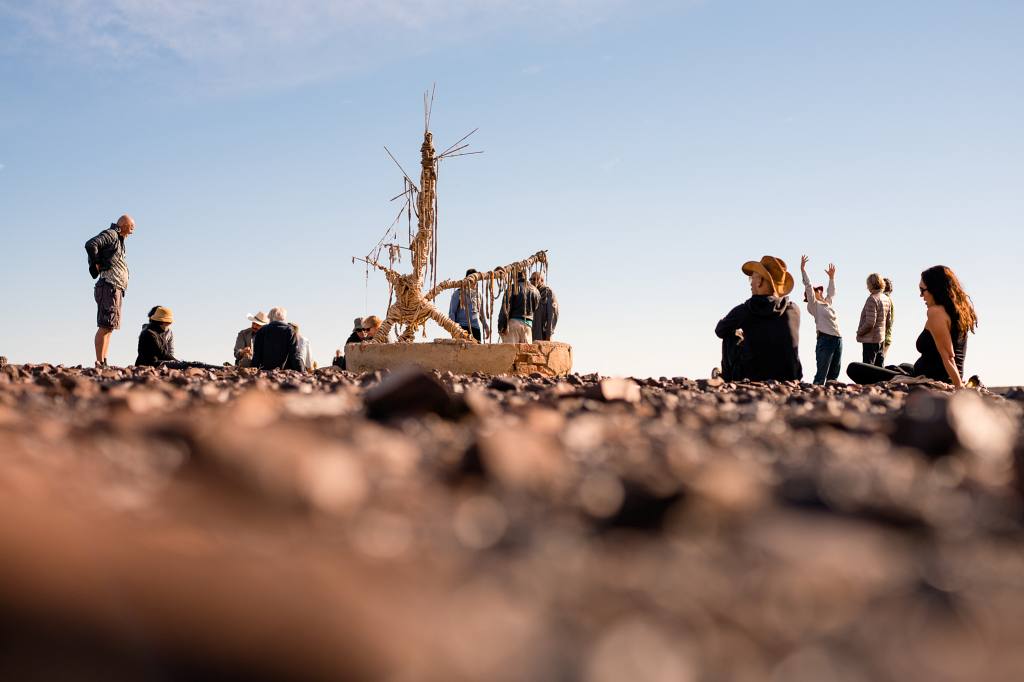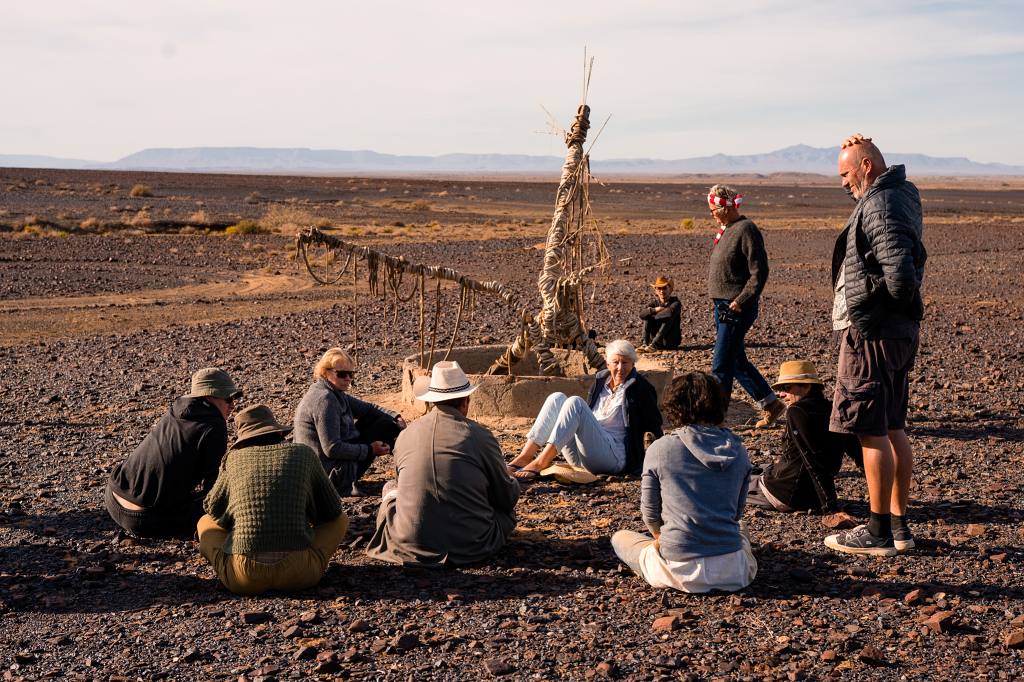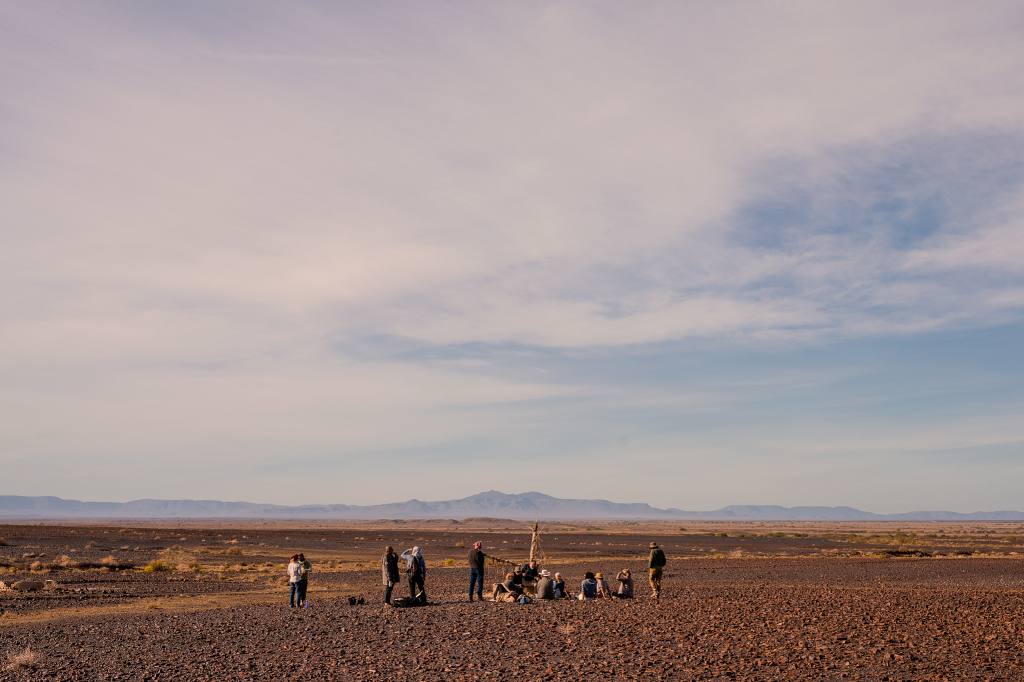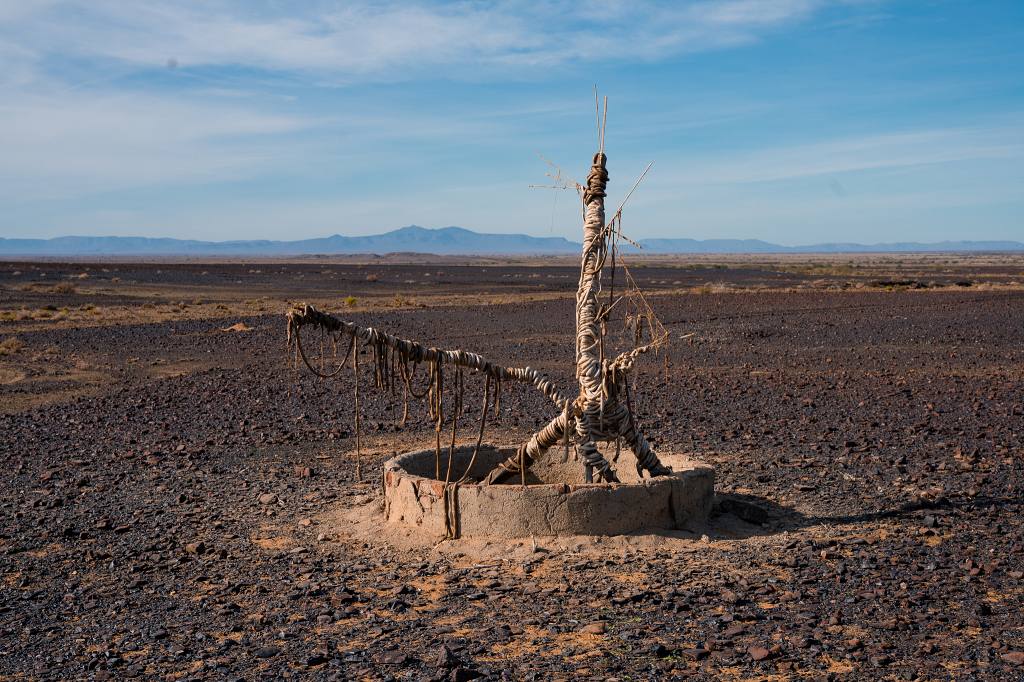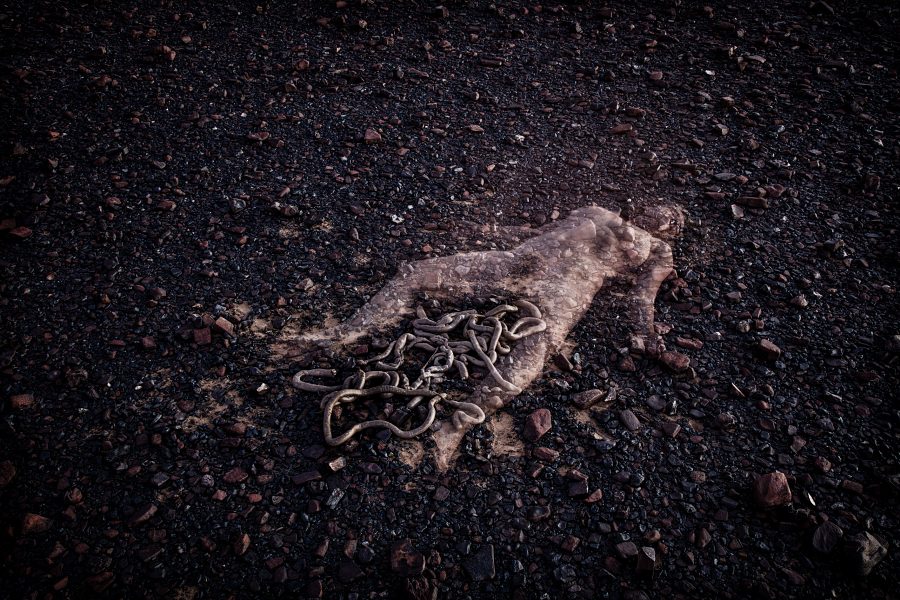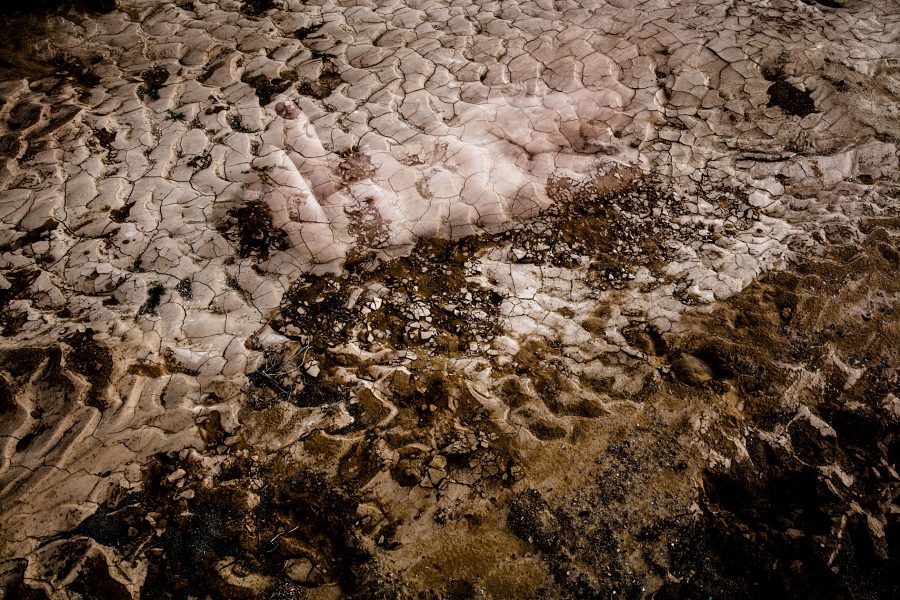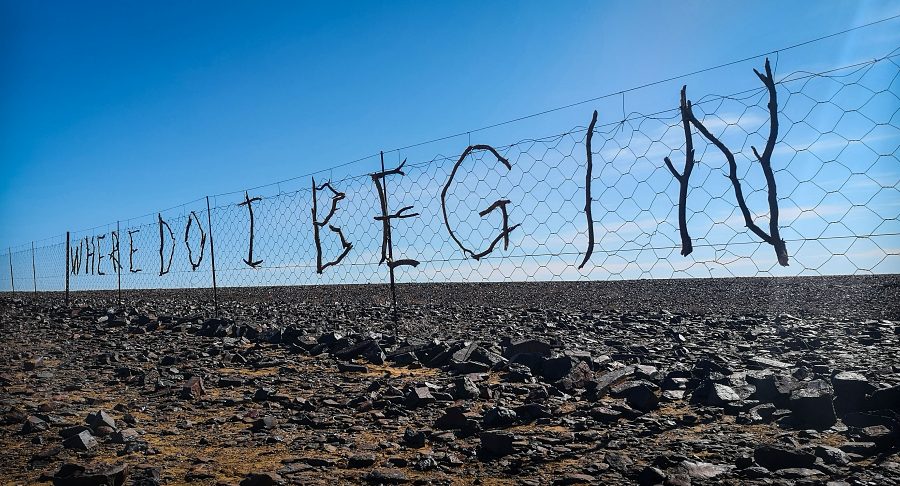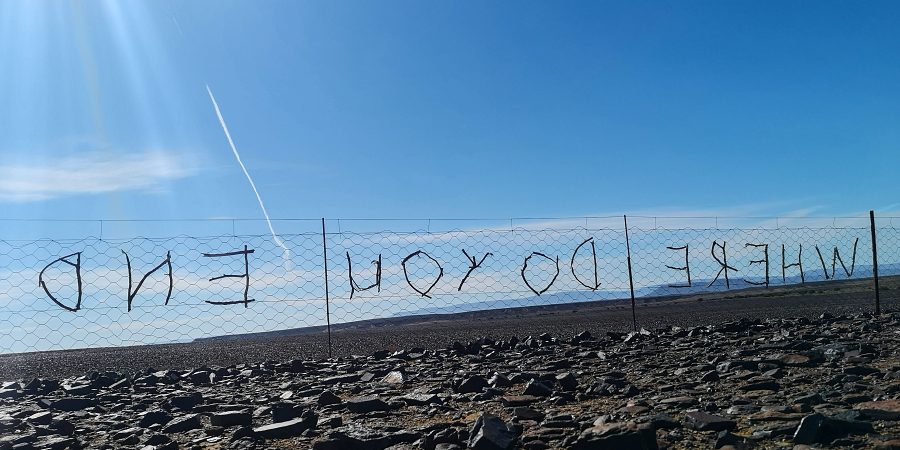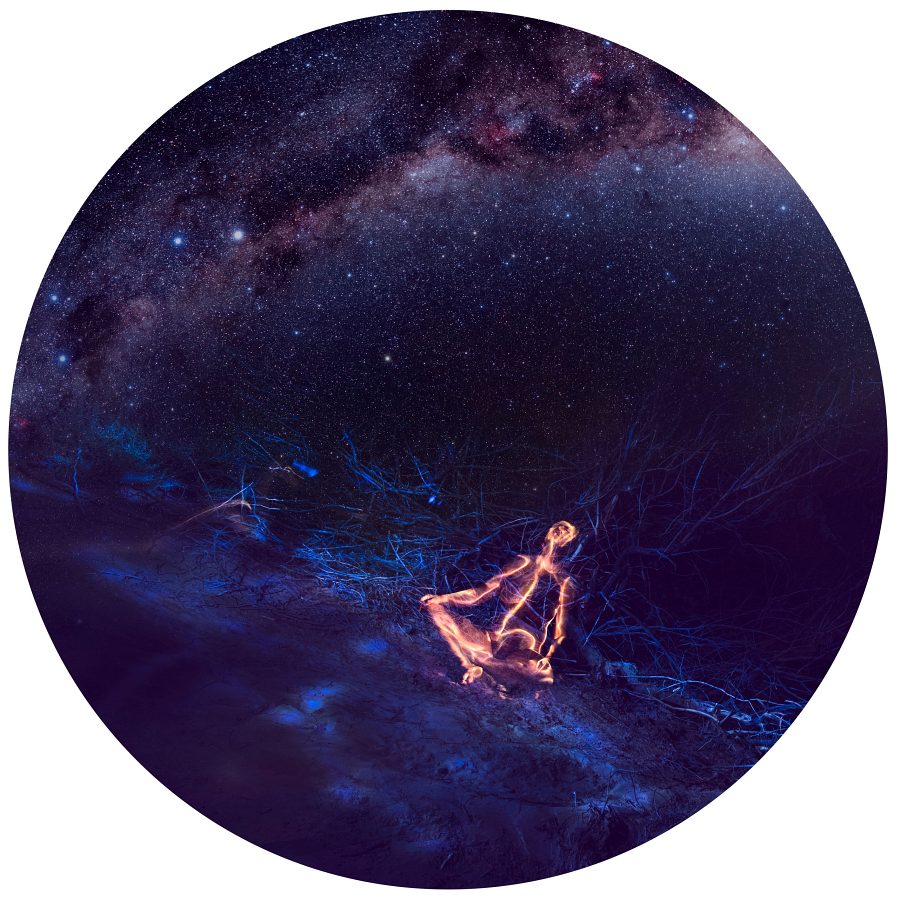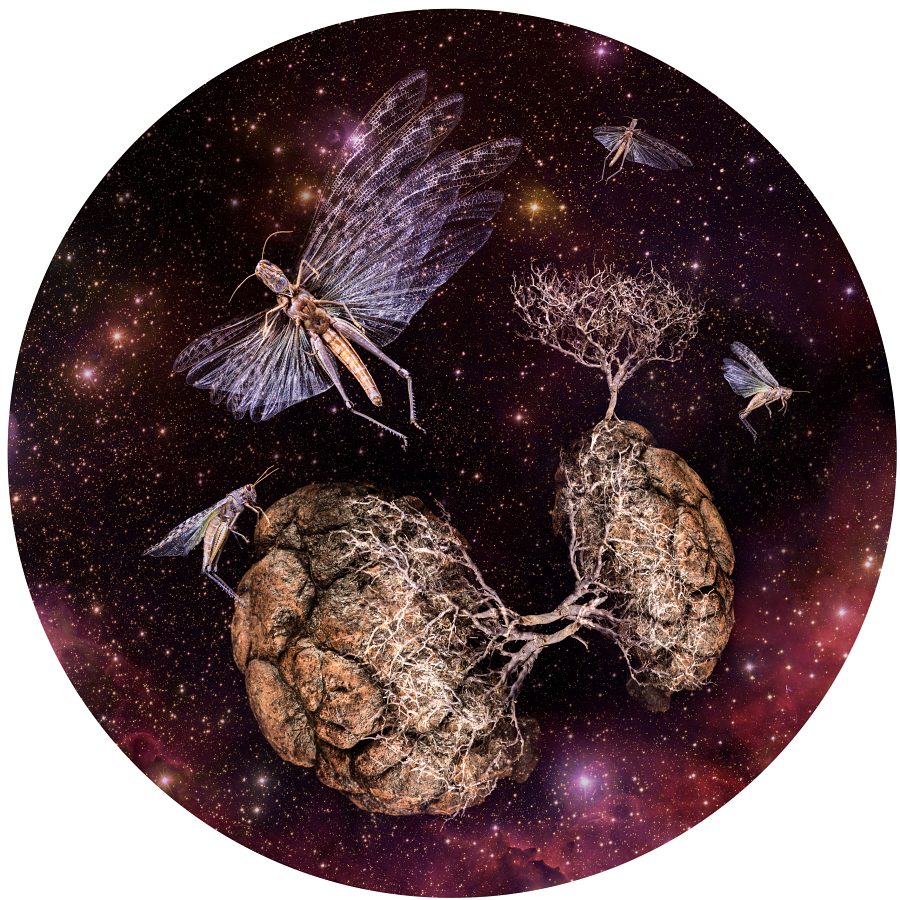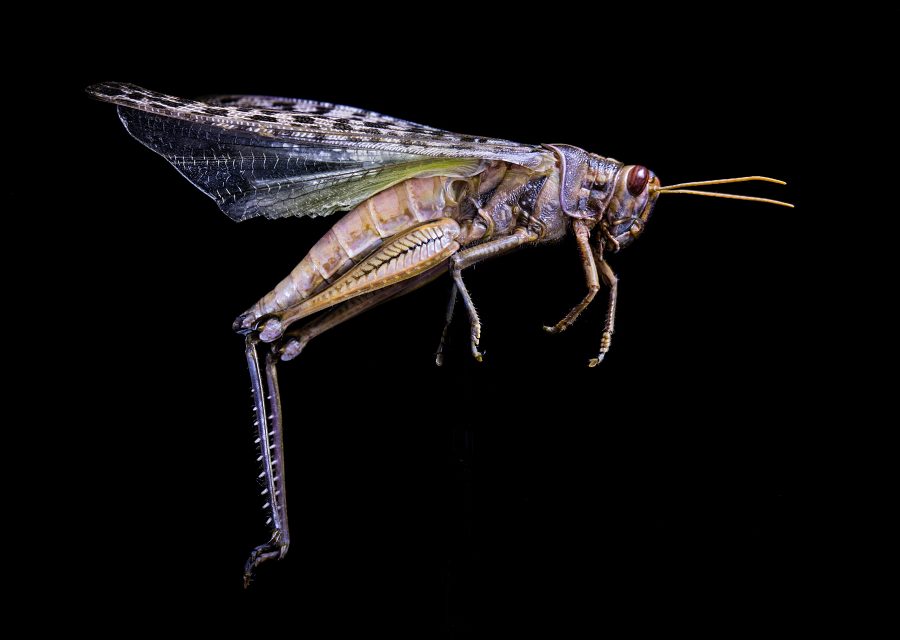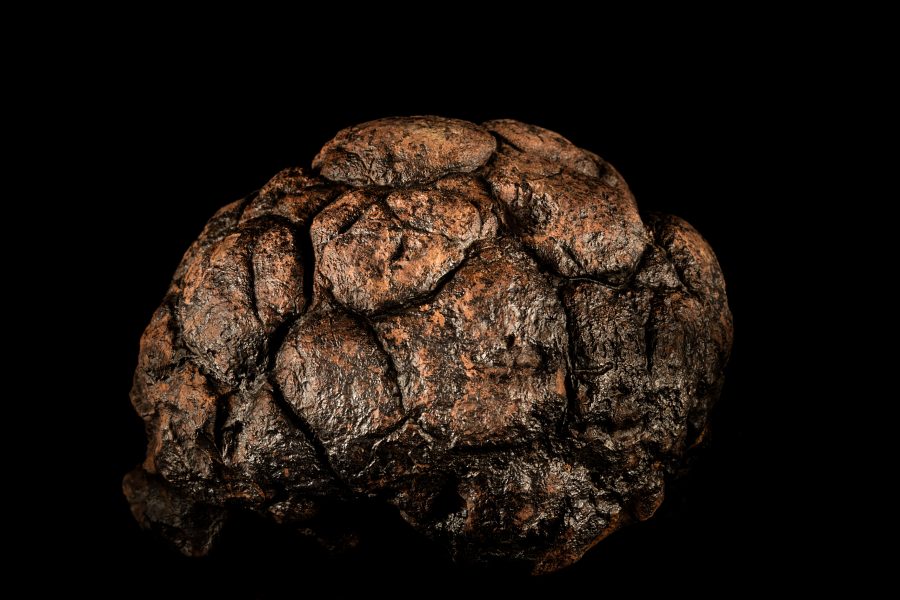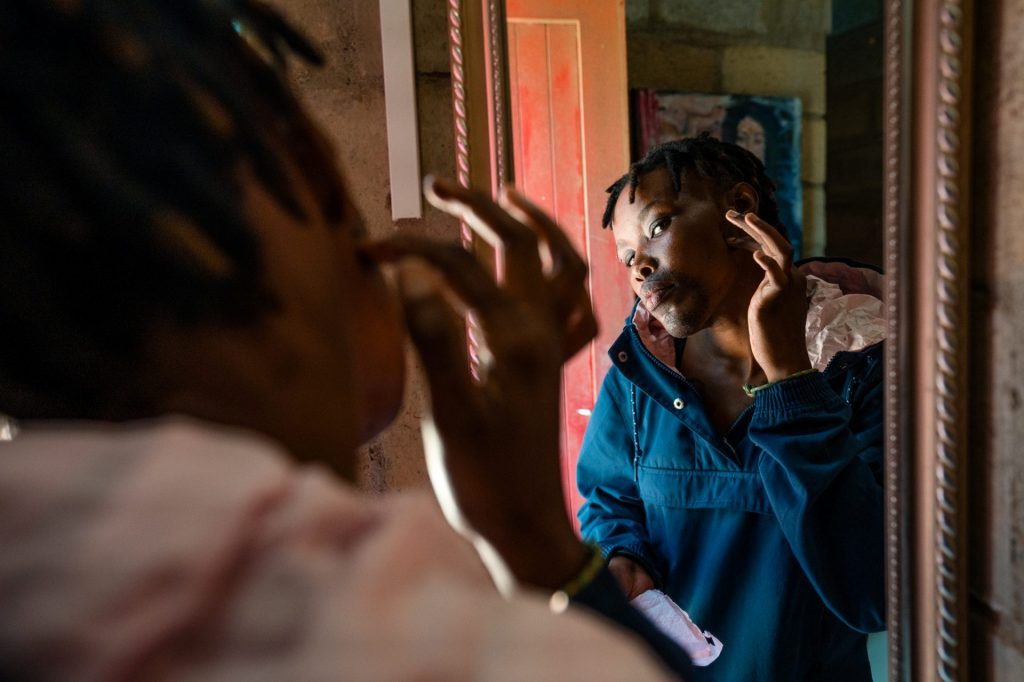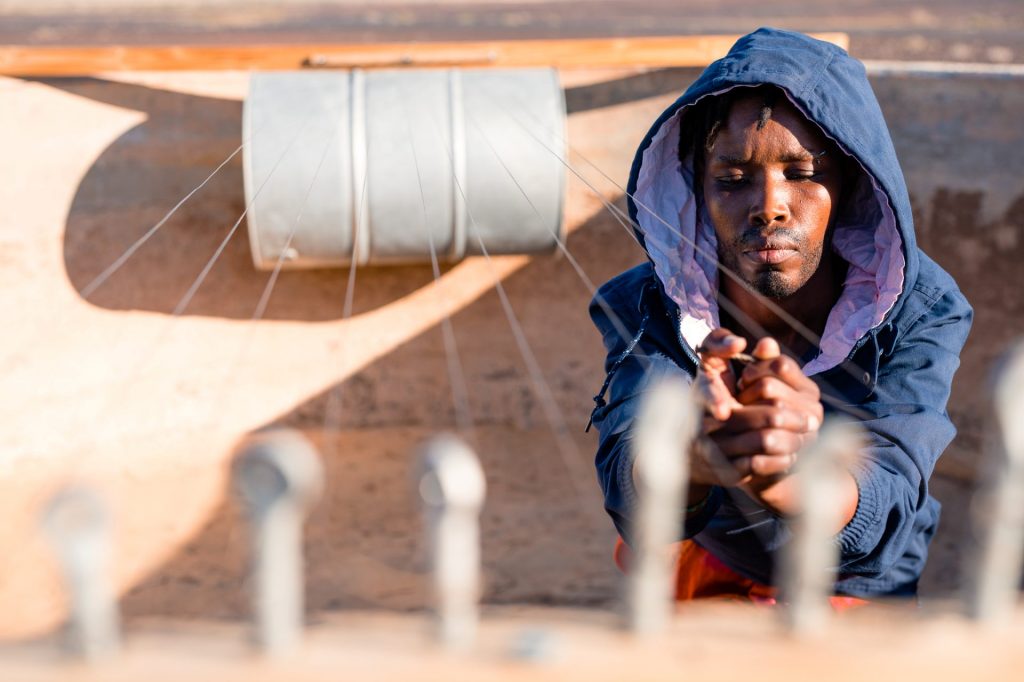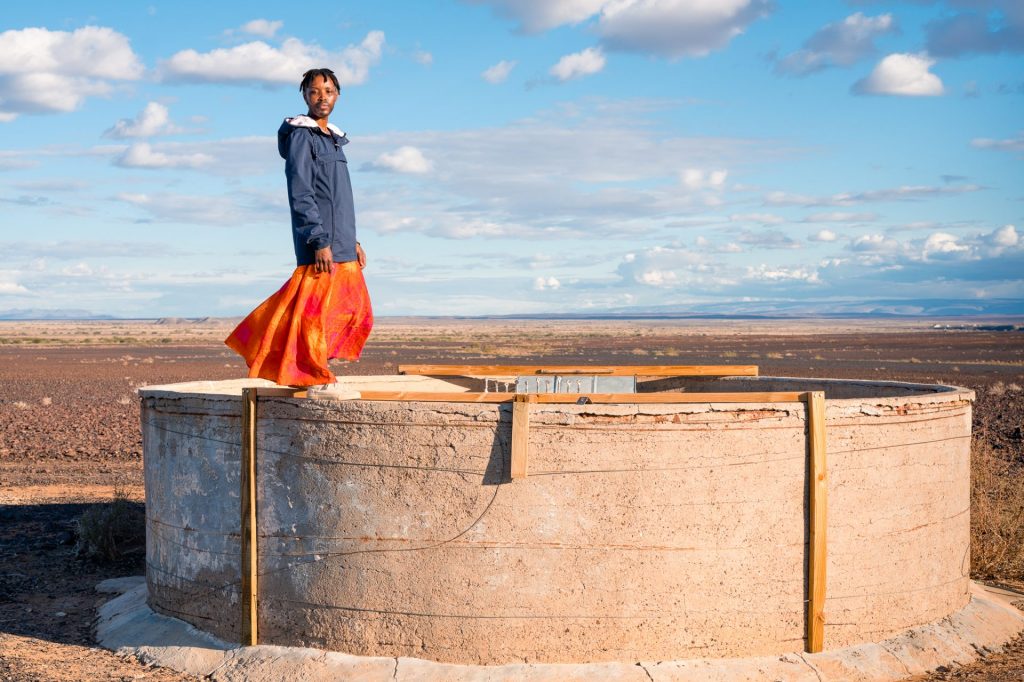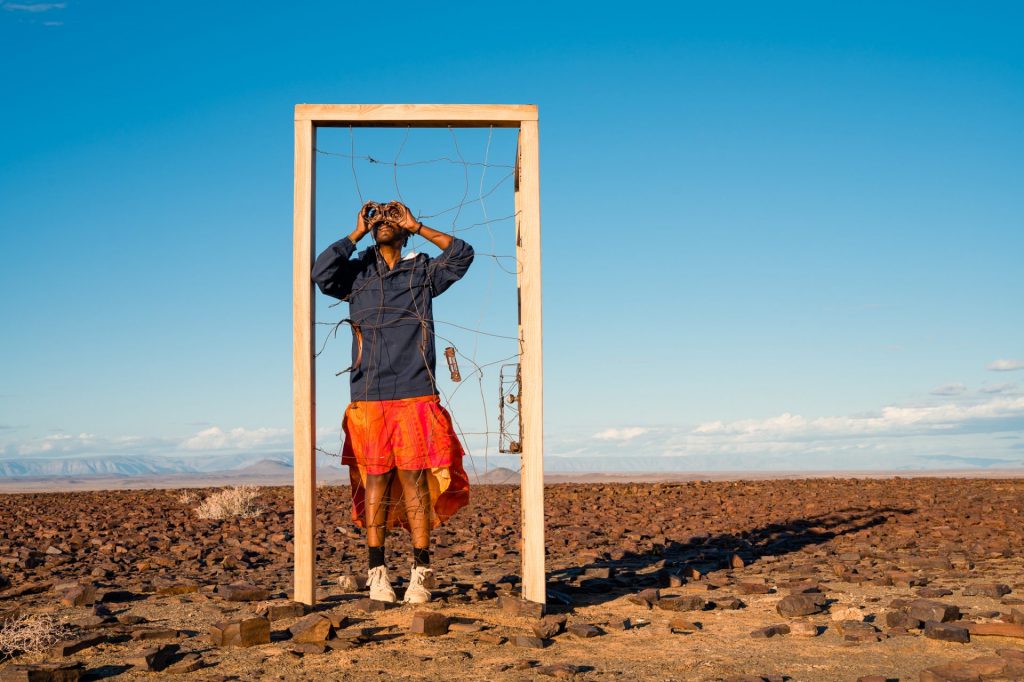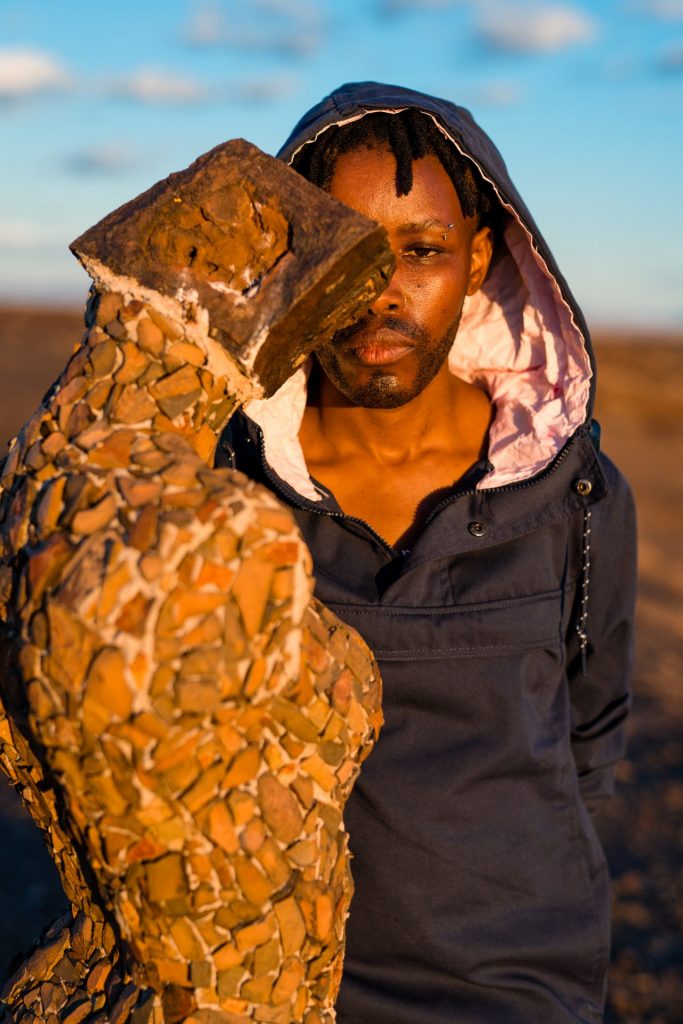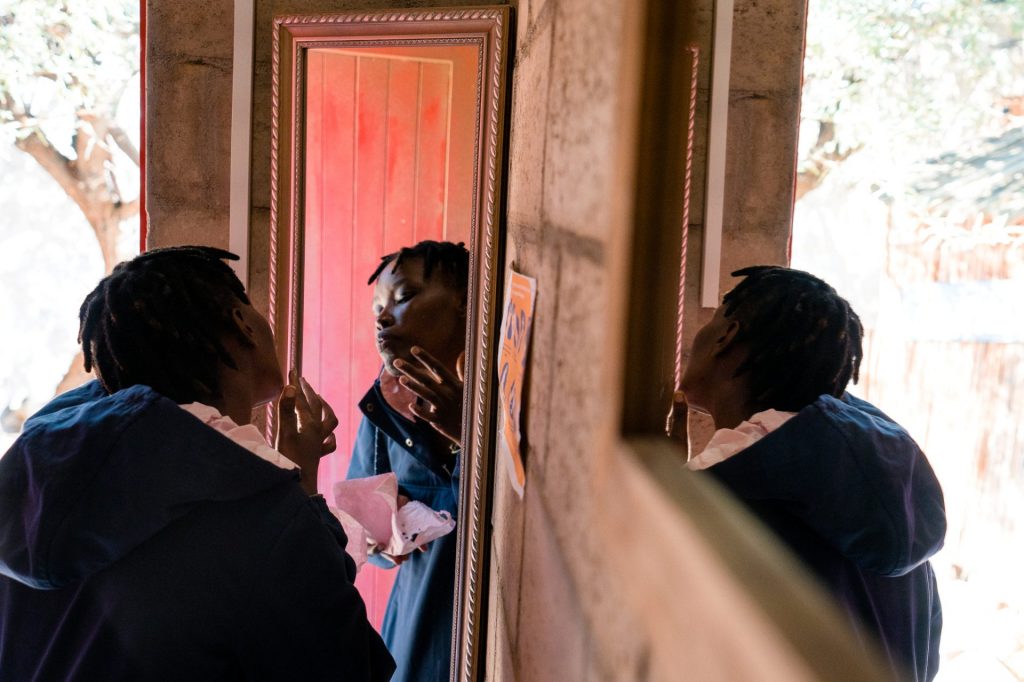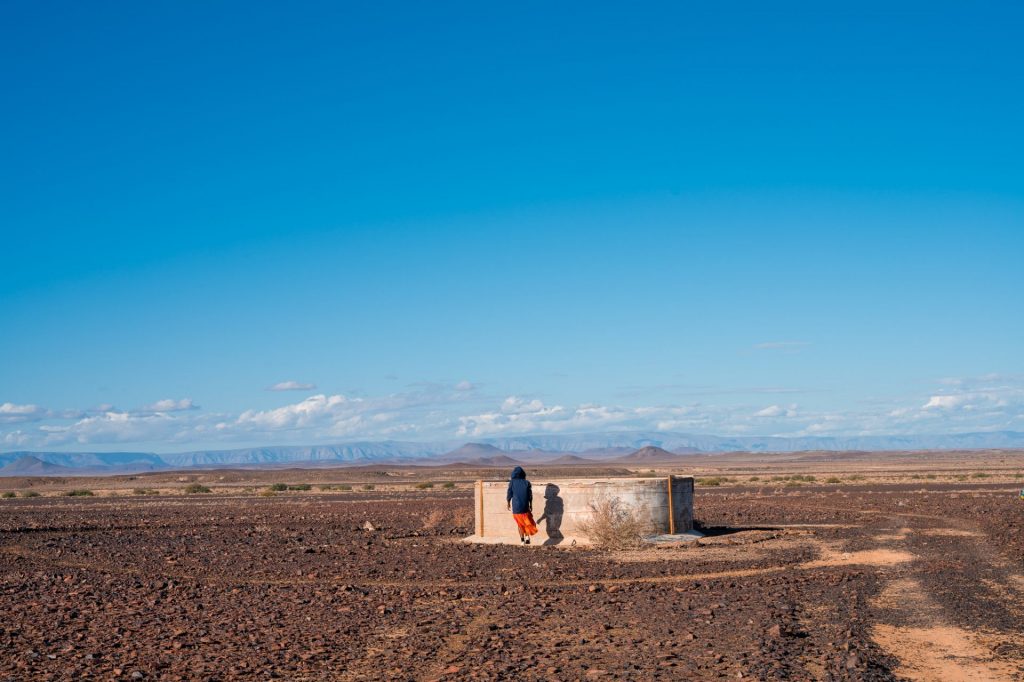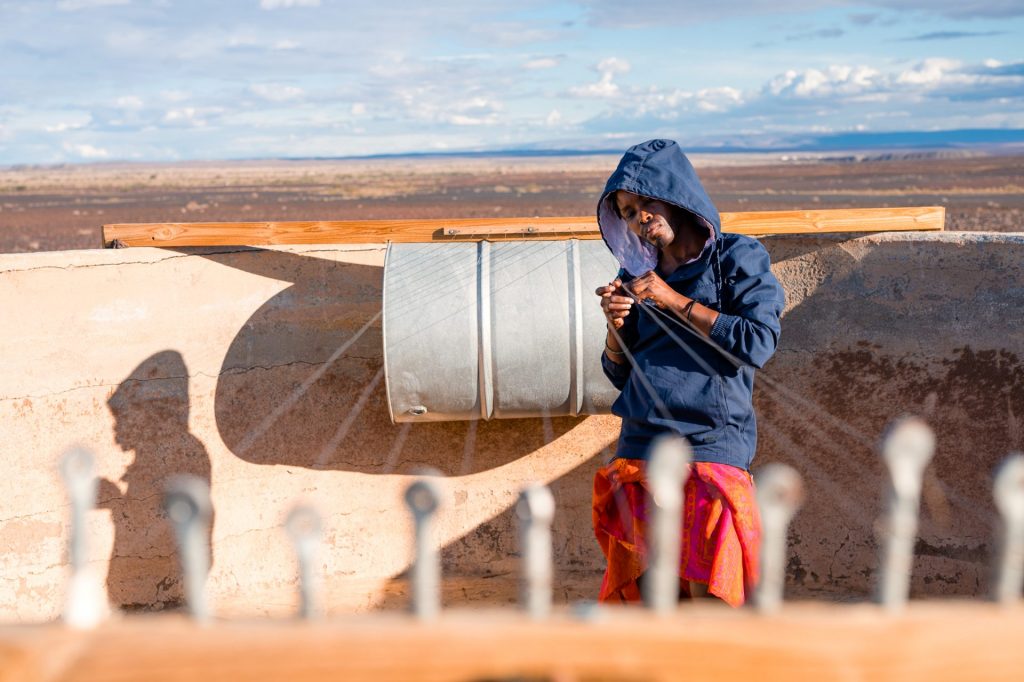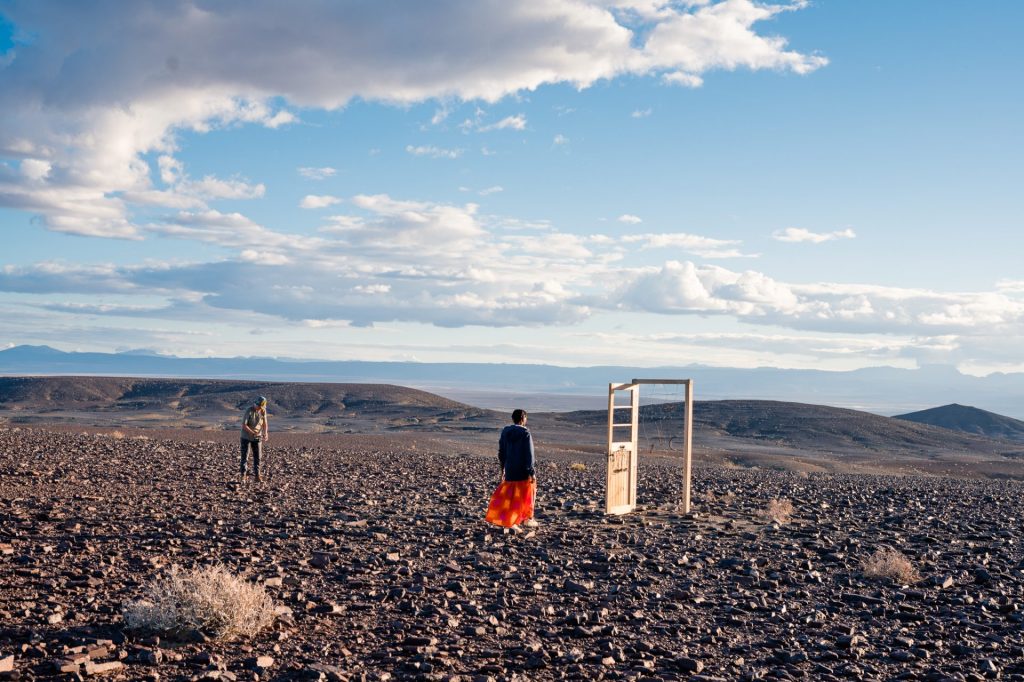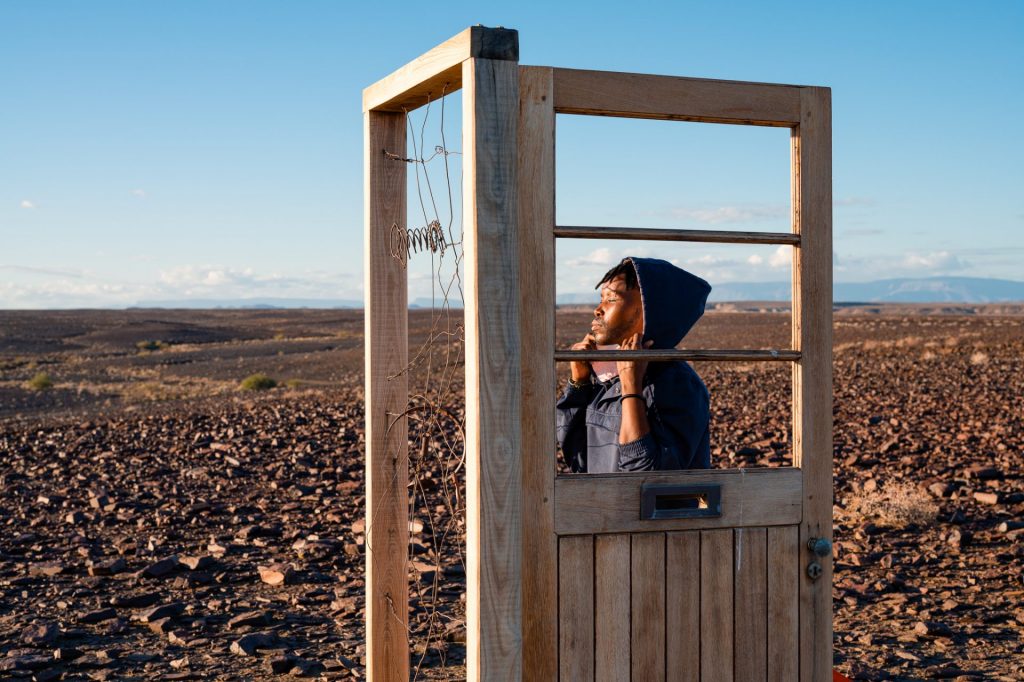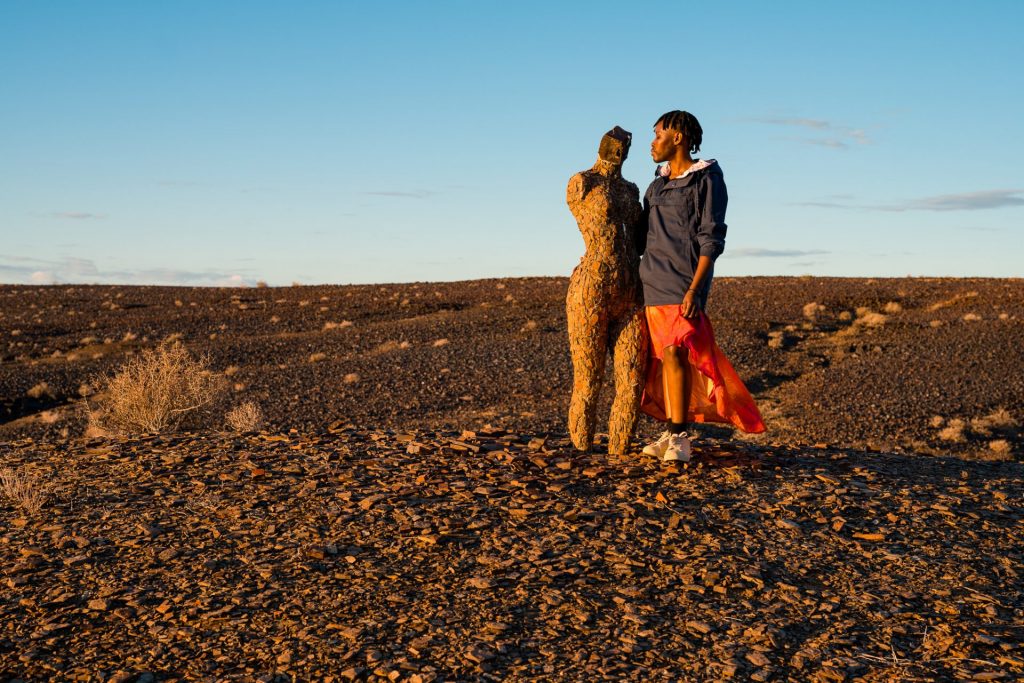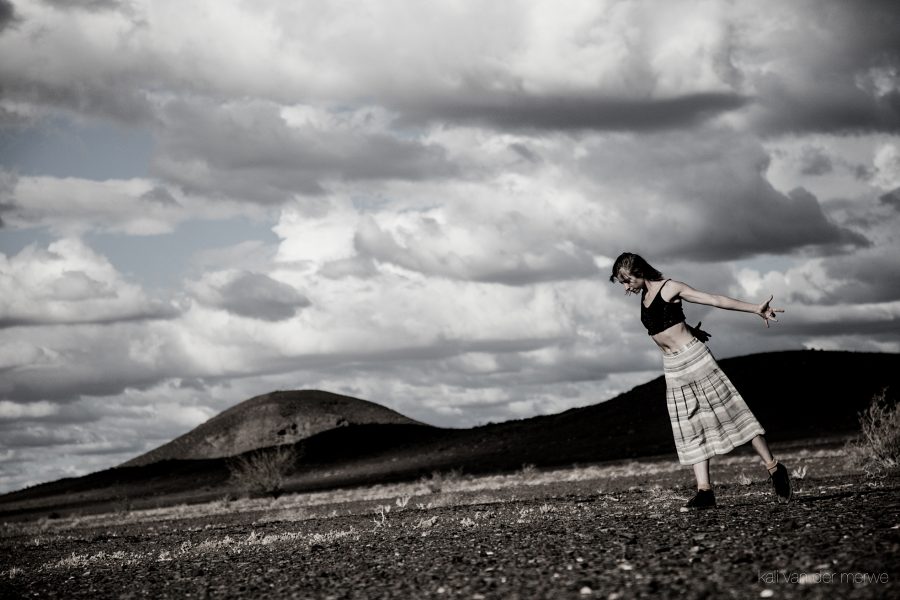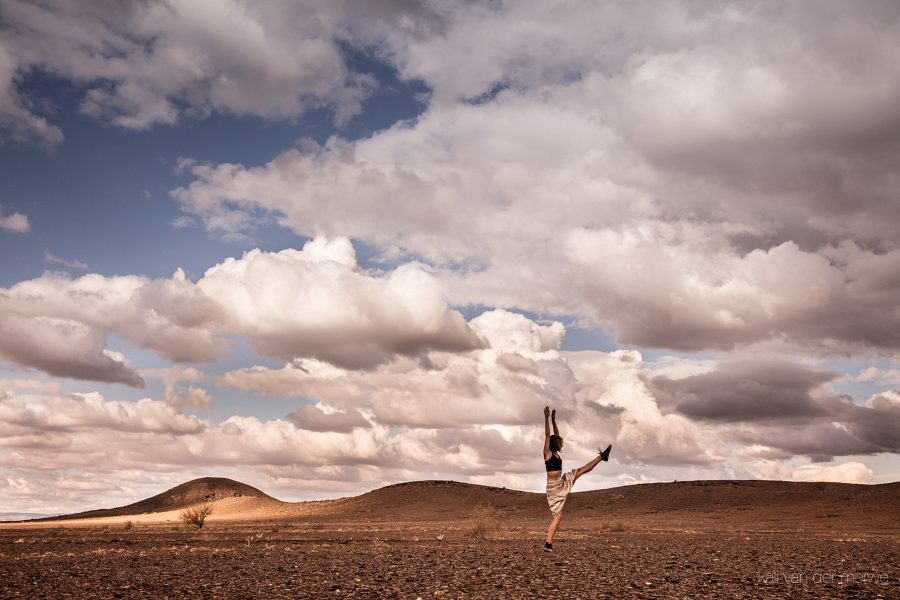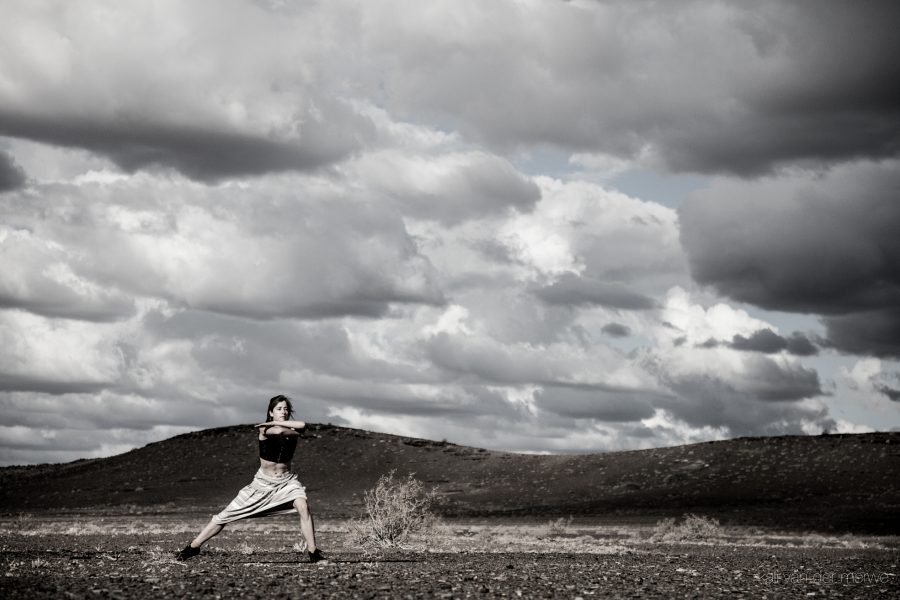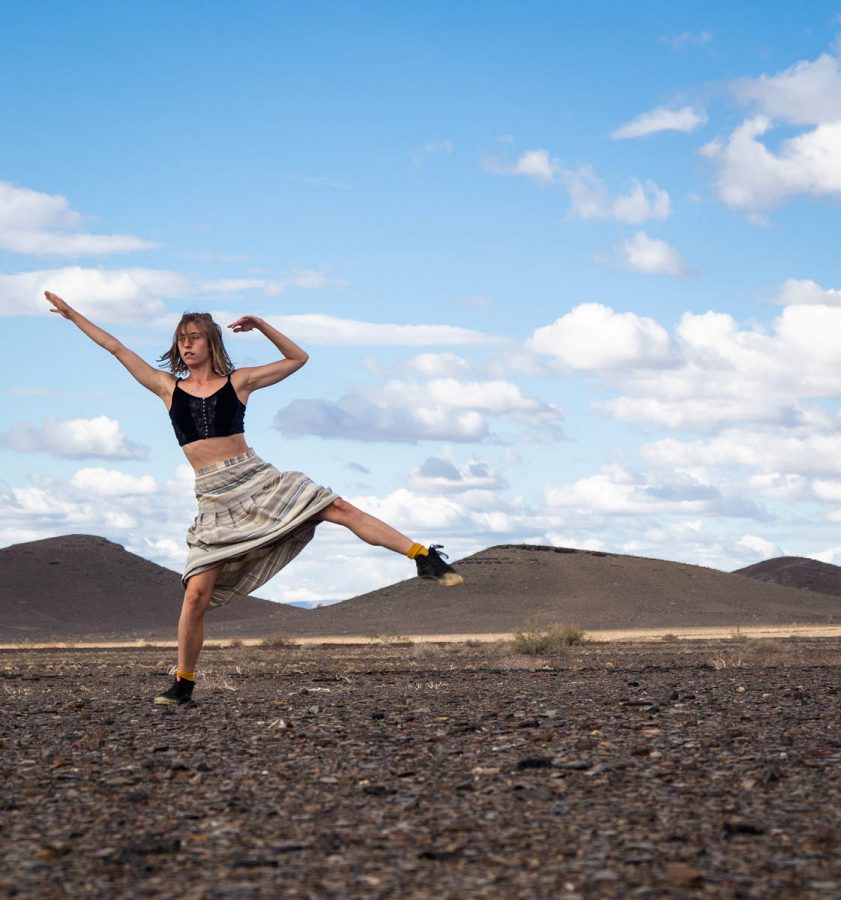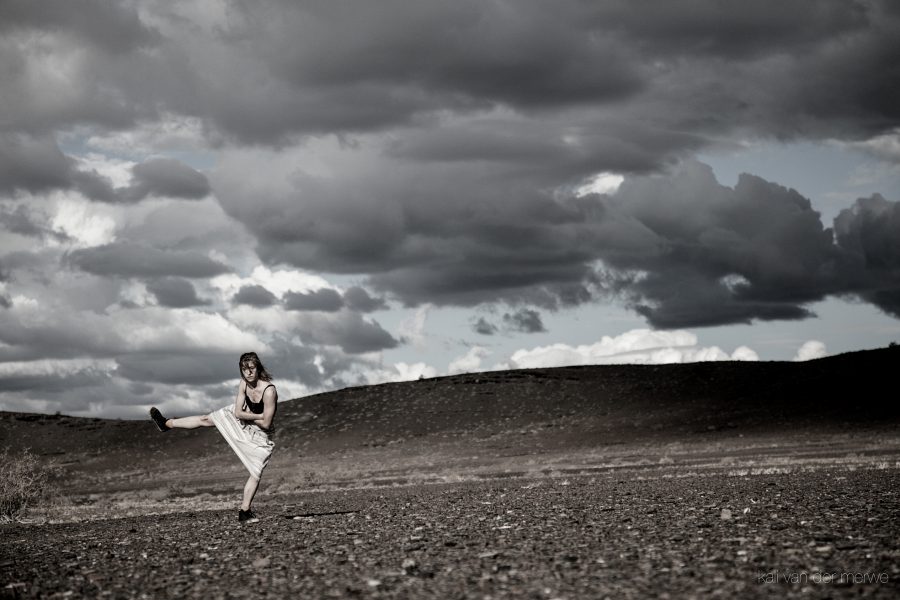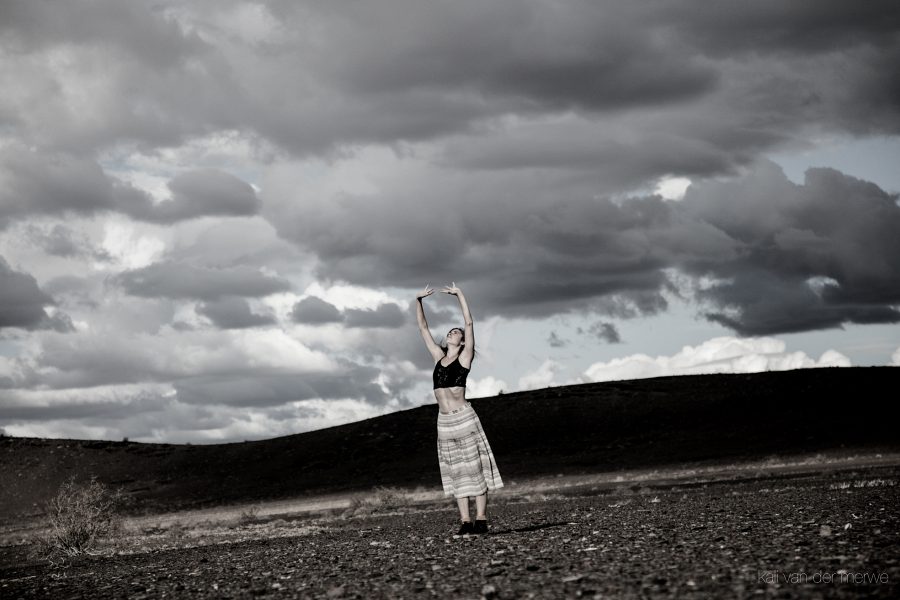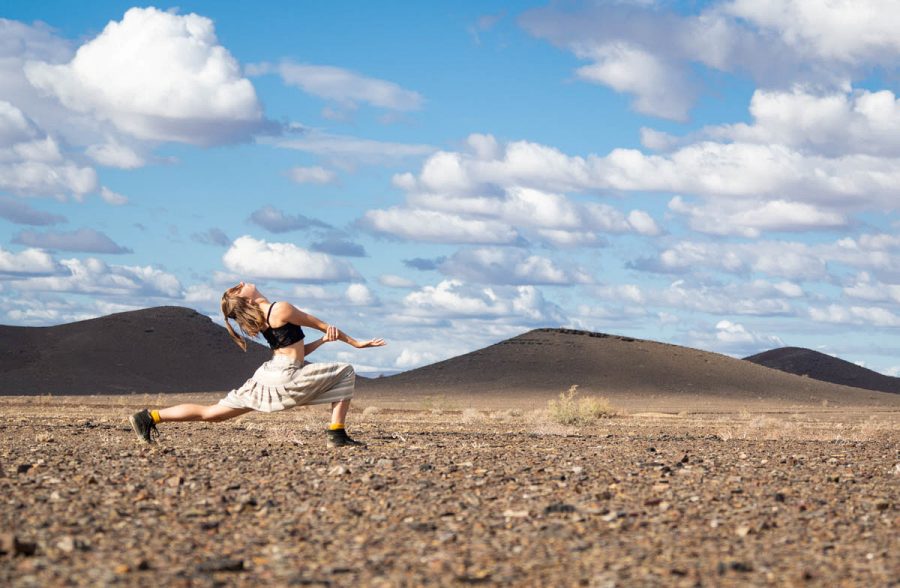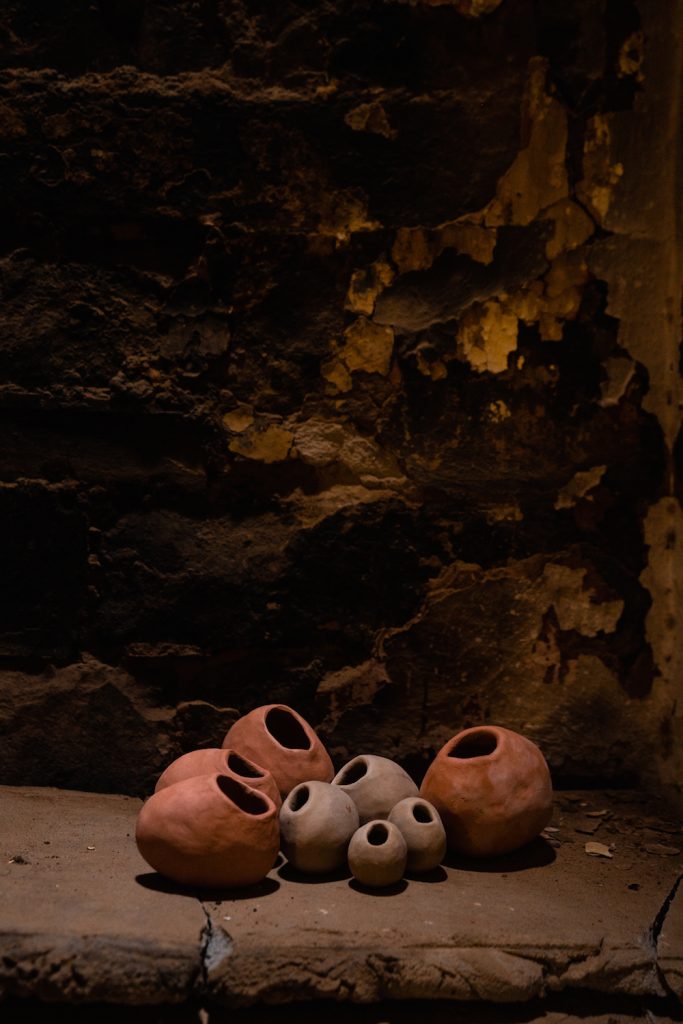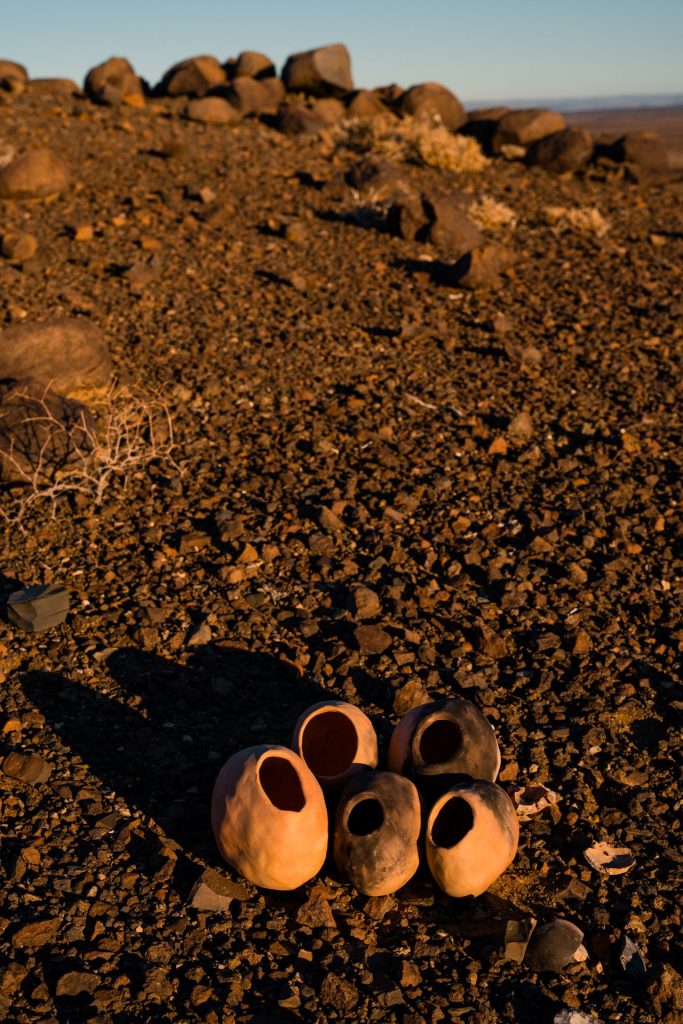A kind of silence
precedes each story;
the contemplation in the teller,
anticipation, perhaps,
in the audience.
And a silence
follows some stories;
the quiet formulation
of new questions.
(r.e)
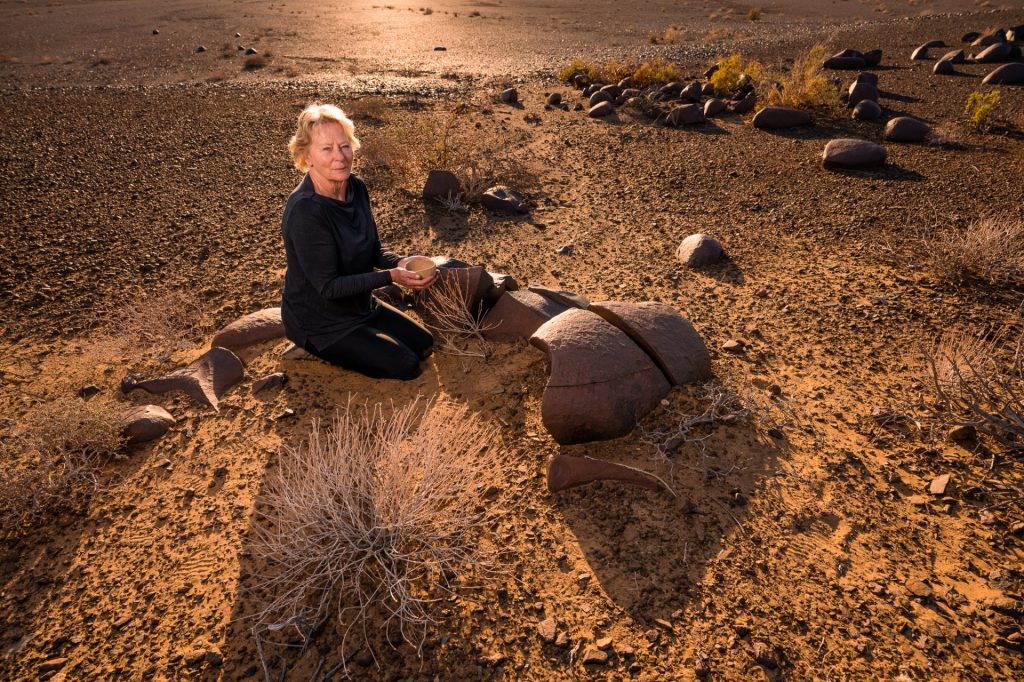
Andree Bonthuys
I never expected the Tankwa to affect me as deeply and emotionally as it did!
The sheer scale of geological time, evidenced in every stone I stepped on; the vast skies – both starry night and day; the silent space… I was in awe of ‘The Place’.
Ego and pre-conceived ideas were quickly cast aside. Nature was the artist after all. A ceremonial site whispered, and I only intervened as lightly as possible, offering tiny shards of clay and bronze and words.
Thank you all for the generous hospitality, the delightful collaborations, the new skills and friendships! I would love to go back!
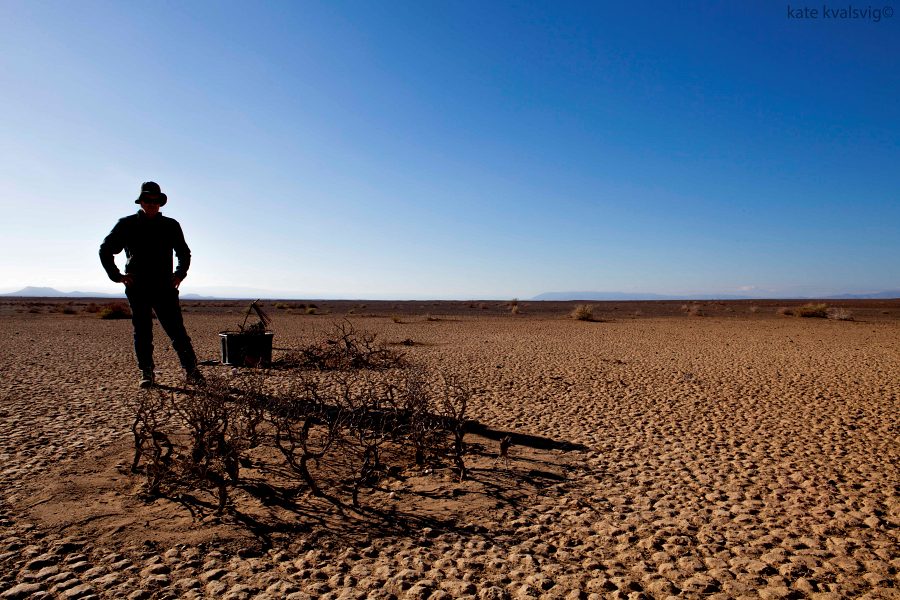
Ian Marley
We all know that creativity is about getting out of your comfort zone, challenging your traditional ways of thinking, and counteracting your biases. But, this is easier said than done. However, the Tankwa Artscape Residency allowed me to do all of this and more.
Having the privilege to work in this isolated, harsh and uniquely beautiful landscape in collaboration with a diverse range of other artists facilitated a closeness to nature and an awareness of self. It allowed me to feel, think, create and share with a renewed sense of play and wonder. I explored sculptural found objects, shadow play, and performance, which are not something that I would have done as part of my normal drawing practice. The residency was invigorating and has opened new avenues to explore.
Leli Hoch
Tamar in the Tankwa – 2 Sam 13:22 OT
Tamar, daughter of King David is raped and left desolate.
She throws ashes upon her head, voicing her devastation and grief.
Desolation – a common reality for those who suffer the impact of abuse.
Desolation – a common reality for abused land
Remains of an Oryx found in a remote corner of Stonehenge Reserve.
When did this drama happen?
Standing there I felt like moving into another universe, so different, so alone….
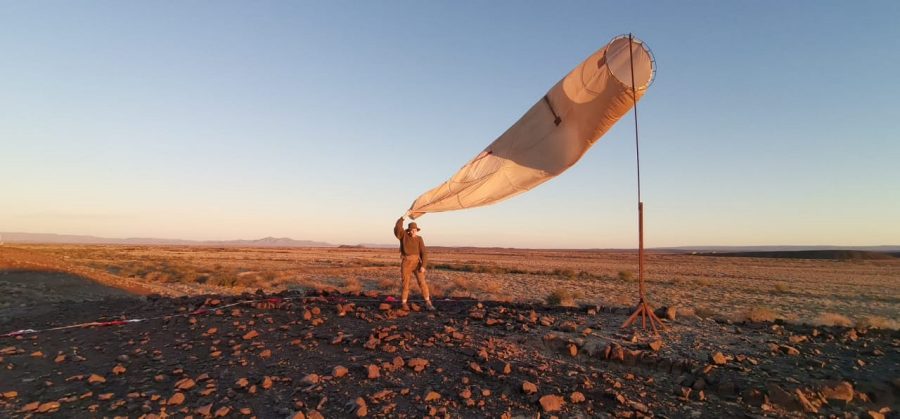
Mignonne Busser
When I arrived in the Tankwa Karoo, I became hyperaware of human intervention in the landscape. Even a fence becomes a monument when there is nothing else around it. With this in mind, I had to think and rethink my plan to put up a permanent sculpture that intrudes on the solitude of this place. When digging the foundation of the windsock, I could feel myself uprooting thousands of years of erosion ahead of its time. In this process I grounded myself in this landscape.
The windsock is constructed out of an old tandem parachute gifted to me by my uncle. It used to be white but has been tanned beige after many hours in the African sun. I hope that the parachute enjoys its second life here in the desert, transformed into a device to catch the wind. People who see my windsock can use it to meditate on how they found themselves alone on a limitless horizon, and where they plan on going next.
Kim Goodwin
Alisa Farr
I started out the residency with a vague idea, I bought lots of sheep casings, the stuff you make sausages with and was half worried that they would spoil before I could make anything from them. I have been to the Tankwa before this and know and understand how sheep and goat farming affected the area, but in my limited experience of working with herd animals, I also know that there is a bond that develops between the shepherd and the animal that is difficult to explain. In my piece, I do not condone or condemn sheep and goat farming but want to pay my respects to both the shepherd the animal and the land. When I presented the piece to the group it elicited dialogue, this is my ambition as an artist to evoke dialogue without malice or unnecessary euphoria. The group of artists collaborated with no expectation of reciprocation and fostered community without classism.This experience was 10 days of working deeply with the land and the self. This process was carried by and for the group of people who gathered to make art.

Kali van der Merwe
The Tankwa Artscape Residency was all I had hoped it would be – immersion in a vast, ancient landscape, and a deep honouring of the creative impulse and process. Yet my time in the Tankwa was so much more than I had expected and envisioned. I had previously encountered Stonehenge Private Reserve through two AfrikaBurn excursions and I was eager to explore the land and its mysteries further.
I have developed certain photographic processes to create images when encountering places and spaces which move me. I found I was able to take my series of earthscapes, landscapes and nightscapes to new depths. The experience of becoming physically lost on
our first day excursion, walking 15km further than I was supposed to and landing up on the neighbours farm, inspired me to create a work about boundaries on the fence bordering the Tankwa National Park.
I had not worked in this way before using natural materials to create text and I hope to expand on this new lexicon. It was a privilege to meet other down to earth artists and to bear witness to their creative process, both struggles and breakthroughs. What was not visible was shared most evenings around intimate fire conversations which kept the group
cohesive and informed about each others activities and emotions. Usually a solitary
creator, in this supportive atmosphere, I was inspired to collaborate with other artists, learning from their methodologies, working with familiar and unfamiliar materials including bronze casting, soundscapes, and intestines. I appreciated Stonehenge Private Reserve’s honouring of creativity, nothing was too much trouble for JP and Deon. Through this commitment I discovered new ways to present and honour my own creativity.
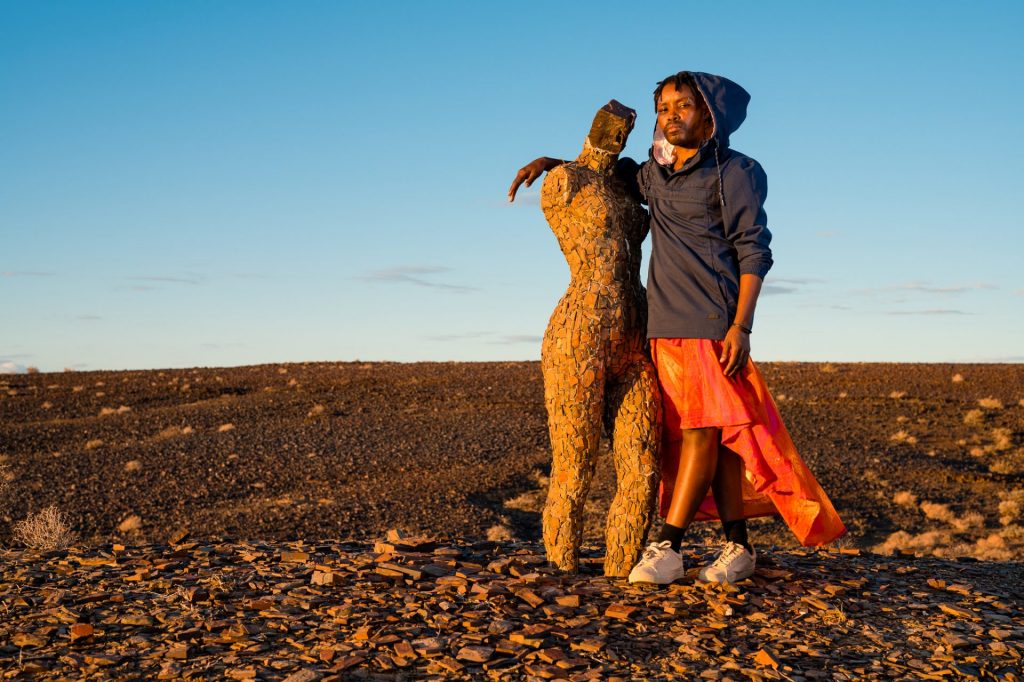
Nomusa Mtshali
Titanium at Tankwa Artscape residency
“It’s Why A Fallen Seed Is A Sin”
Imagine.
Imagine a world imaged not all at once and not at all by one person. Now imagine all things imagined would meet, interact and share a moment in some imagined time and space.
Titanium is an imaginary being, an alter ego, another being to become when I am not myself. When I am not defined by the physicalities of this dimension called earth, and yet in it our spirits are free and they meet.
Now imagine earth has a twin, is pink, the earth is blue, and in him, Titanium lives.”
My quest is to bring to life Titanium (my pseudo persona/ Alter Ego) who actively expresses gender fluidity in ways that remind the society at large the tide of humanity that bind all gender expressions and sexuality. My quest for belonging and success has brought me against the full force of conservative ideology in South African society and the world. As a queer person of colour, I have found it difficult to feel represented by any single demographic. With my art, I quietly and persuasively challenge narrowly defined concepts like gender and race – with the understanding that no-one fits these boxes perfectly.
I believe that gender is defined by moment-to-moment experience and I draw on Judith Butler’s concept of gender performativity. Therefor anyone can express femininity and masculinity at any given moment, Afterall like the earth we are influenced by the Moon which gives us feminine polarity and equally by the Sun which gives us Masculine polarity. As humans we are very much like the earth always transforming ourselves physically and spiritually.
Kimberly Burger, Joy Millar, Gustavo Fasani
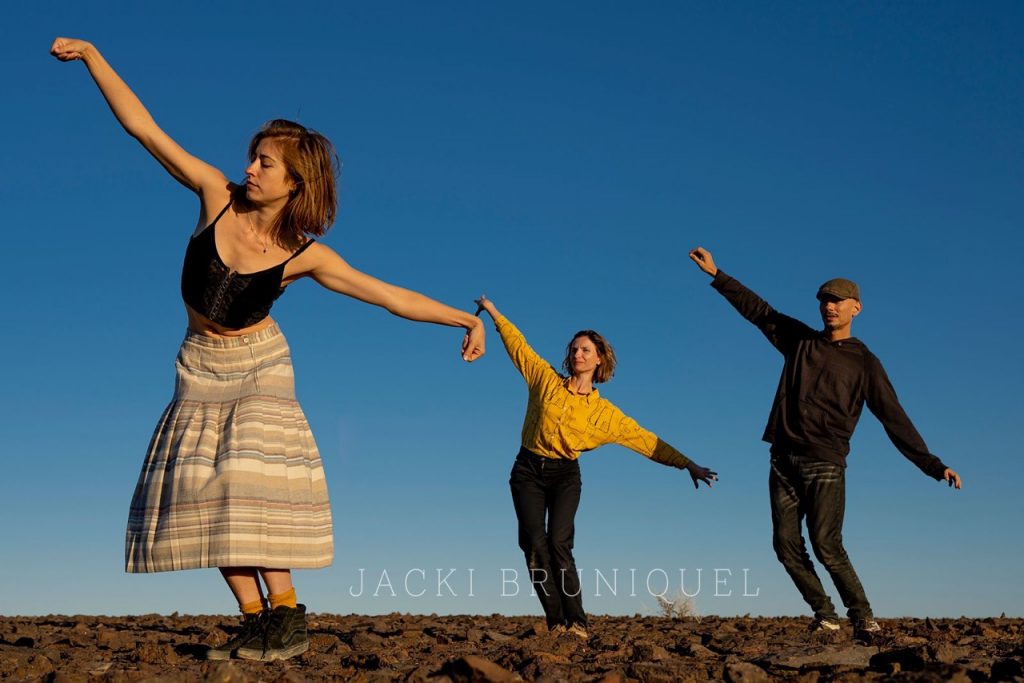
The Choice
WB Yeats
The intellect of man is forced to choose
Perfection of the life, or of the work,
And if it take the second must refuse
A heavenly mansion, raging in the dark.
When all that story’s finished, what’s the news?
In luck or out the toil has left its mark:
That old perplexity an empty purse,
Or the day’s vanity, the night’s remorse.
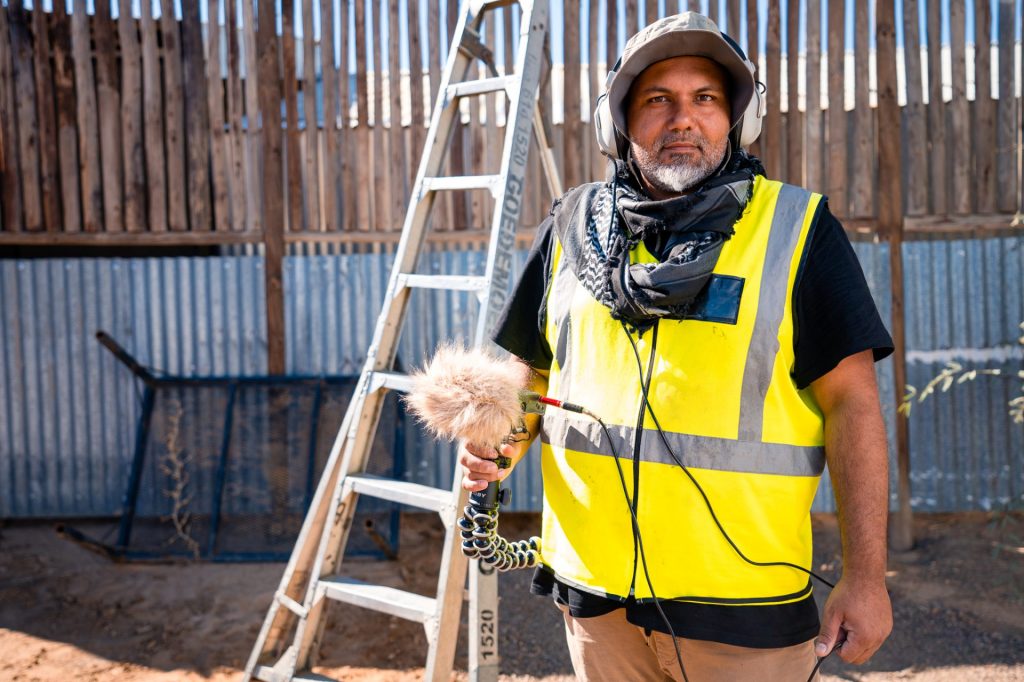
Charles Palm
During the 2021 Tankwa Artscape Residency Charles Palm continued with his research on violent disruptions of indigenous cultures in the late 1700s, coinciding with free-burger settlement at the frontiers of the Cape colony. The residency offered an opportunity to observe the socio-economic landscape in the Karoo intimately 300 years later. Interviews with locals, migrant labourers, land-owners and travelling professionals were recorded, along with field recordings of local wildlife as well as agricultural- & construction scenes. Throughout these processes small clay vessels were constructed from the local soil. The vessels were pit fired on-site and placed on the landscape in small clusters to interact with the natural elements of the Tankwa. Together, the audio recordings and vessels aim to express and amplify social trauma and constructs in this region’s past that continue to haunt the South African psyche today. Roepers is an ongoing project with activations planned in the Tankwa, Agulhas and various sites in the Western Cape.
Photo credits: Jackie Bruniquel, Lyn Mossop, Kate Kvalsvig, and the artists… Videos by Josie Borain

